|

|
|
AGENDA
Ordinary Council meeting
Monday, 15 November 2021
|
|
I hereby give notice that an Ordinary Meeting of
Council will be held on:
|
|
Date:
|
Monday, 15 November 2021
|
|
Time:
|
10.30am
|
|
Location:
|
Tauranga City Council
Council Chambers
91 Willow Street
Tauranga
|
|
Please note that this
meeting will be livestreamed and the recording will be publicly available on
Tauranga City Council's website: www.tauranga.govt.nz.
|
|
Marty Grenfell
Chief Executive
|
Membership
|
Chairperson
|
Commission Chair Anne Tolley
|
|
Members
|
|
|
Quorum
|
Half
of the members physically present, where the number of members (including
vacancies) is even; and a majority of the members physically
present, where the number of members (including vacancies) is odd.
|
|
Meeting frequency
|
As
required
|
Role
·
To ensure the effective and
efficient governance of the City
·
To enable leadership of the City
including advocacy and facilitation on behalf of the community.
Scope
·
Oversee the work of all
committees and subcommittees.
·
Exercise all non-delegable and
non-delegated functions and powers of the Council.
·
The powers Council is legally prohibited from delegating include:
o
Power to make a rate.
o
Power to make a bylaw.
o
Power to borrow money, or purchase or dispose of assets, other
than in accordance with the long-term plan.
o
Power to adopt a long-term plan, annual plan, or annual report
o
Power to appoint a chief executive.
o
Power to adopt policies required to be adopted and consulted on
under the Local Government Act 2002 in association with the long-term plan or
developed for the purpose of the local governance statement.
o
All final decisions required to be made by resolution of the
territorial authority/Council pursuant to relevant legislation (for example:
the approval of the City Plan or City Plan changes as per section 34A Resource
Management Act 1991).
·
Council has chosen not to delegate the following:
o
Power to compulsorily acquire land under the Public Works Act
1981.
·
Make those decisions which are required by legislation to be made
by resolution of the local authority.
·
Authorise all expenditure not delegated to officers, Committees
or other subordinate decision-making bodies of Council.
·
Make appointments of members to the CCO Boards of
Directors/Trustees and representatives of Council to external organisations.
·
Consider any matters referred from any of the Standing or Special
Committees, Joint Committees, Chief Executive or General Managers.
Procedural matters
·
Delegation of Council powers to Council’s committees and
other subordinate decision-making bodies.
·
Adoption of Standing Orders.
·
Receipt of Joint Committee minutes.
·
Approval of Special Orders.
·
Employment of Chief Executive.
·
Other Delegations of Council’s powers, duties and
responsibilities.
Regulatory matters
Administration, monitoring and
enforcement of all regulatory matters that have not otherwise been delegated or
that are referred to Council for determination (by a committee, subordinate
decision-making body, Chief Executive or relevant General Manager).
7 Confirmation
of Minutes
7.1 Minutes
of the Council meeting held on 26 October 2021
File
Number: A13050587
Author: Robyn
Garrett, Team Leader: Committee Support
Authoriser: Robyn
Garrett, Team Leader: Committee Support
|
Recommendations
That the Minutes of the Council meeting held on 26 October
2021 be confirmed as a true and correct record.
|
Attachments
1. Minutes
of the Council meeting held on 26 October 2021
|
Ordinary Council meeting Minutes
|
26 October 2021
|

|

|
|
MINUTES
Ordinary Council meeting
Tuesday, 26 October 2021
|
Order of Business
1 Opening Karakia. 3
2 Apologies. 3
3 Public Forum.. 3
4 Acceptance of late items. 3
5 Confidential business to be transferred into the open. 3
6 Change to the order of business. 3
7 Confirmation of Minutes. 4
7.1 Minutes of the Council meeting held on 4 October 2021. 4
8 Declaration of conflicts of interest 4
9 Deputations, Presentations, Petitions. 4
Nil
10 Recommendations from Other Committees. 4
Nil
11 Business. 4
11.2 Civic Redevelopment Programme Progress Report 4
11.1 Submission to Discussion Document on Proposed Changes to the Wetland
Regulations. 5
Takedn second. 5
12 Discussion of Late Items. 6
13 Public excluded session. 7
13.1 Public Excluded Minutes of the Council meeting held on 4 October
2021. 8
13.2 Ohauiti Site Access Assessment: Option Identification and Evaluation. 8
13.3 Land Acquisition - Kennedy Road. 9
14 Closing Karakia. 9
MINUTES OF Tauranga City
Council
Ordinary Council meeting
HELD AT THE Tauranga City
Council, Council Chambers, 91 Willow Street, Tauranga
ON Tuesday, 26 October 2021 AT
10.30am
PRESENT: Commission Chair Anne Tolley, Commissioner Shadrach Rolleston,
Commissioner Stephen Selwood, Commissioner Bill Wasley
IN ATTENDANCE: Paul
Davidson (Acting Chief Executive; General Manager: Corporate Services), Barbara
Dempsey (General Manager: Regulatory & Compliance), Susan Jamieson (General
Manager: People & Engagement), Christine Jones (General Manager: Strategy
& Growth), Andrew Mead (Manager: City & Infrastructure Planning),
Alistair Talbot (Team Leader: Transport Strategy & Planning), Waheed Ahmed
(Senior Transport Planner), Richard Harkness (Project Leader: Urban Planning),
Mike Naude (Programme Manager: Civic Redevelopment Projects), Ceilidh Dunphy
(Community Relations Manager), Emma Cottin (Strategic Community Relations
Advisor), Coral Hair (Manager: Democracy Services), Robyn Garrett (Team Leader:
Committee Support)
1 Opening
Karakia
Commissioner
Rolleston opened the meeting with a karakia, and acknowledged the recent
passing of both Brian Penetaka Dickson and Louis Te Kani and extended
condolences to Ngāi Te Rangi and whanau.
2 Apologies
Nil
3 Public Forum
Nil
4 Acceptance
of late items
Nil
5 Confidential
business to be transferred into the open
Nil
6 Change to
the order of business
Nil
7 Confirmation
of Minutes
|
7.1 Minutes
of the Council meeting held on 4 October 2021
|
|
Resolution CO0/21/1
Moved: Commissioner Stephen
Selwood
Seconded: Commissioner
Shadrach Rolleston
That the minutes of the Council meeting
held on 4 October 2021 be confirmed as a true and correct record; subject to
the following corrections:
·
That Item 3.2, second bullet point, be
amended to read “The proposed new policy, to be considered for adoption
later in the meeting, could provide a discretion for Council to support
papakāinga housing both for upcoming development and
retrospectively.”
It was
clarified that Mr Kawe’s Public Forum presentation was before Council
had considered and adopted the Grants for Development
Contributions on Papakāinga Housing Policy at Agenda Item 11.14.
Carried
|
8 Declaration
of conflicts of interest
Nil
9 Deputations,
Presentations, Petitions
Nil
10 Recommendations from
Other Committees
Nil
11 Business
Agenda item 11.2 was moved forward and considered before
item 11.1
|
11.2 Civic
Redevelopment Programme Progress Report
|
|
Staff Mike
Naude, Programme Manager Civic Redevelopment Projects
Key points
·
Progress would be reported at least quarterly
to Council. A further update would be provided before Christmas and
Projects 2, 3 and 5 would be reported on more regularly.
In response
to questions
·
The Civic Redevelopment Programme Governance
Group membership was Independent Chairperson John Brockies, Chief Executive
Marty Grenfell, General Manager: People and Engagement Susan Jamieson,
General Manager: Community Services Gareth Wallis, Carlo Ellis as iwi
representative and David Lambie from Twenty Two Independent Property
Advisers.
·
In the process of finalising the lease
agreement for Devonport Road, which included the requirement for a timber
structure building.
·
Noted that the Commissioners and Chief
Executive were moving to the Cameron Road office.
·
The cinema and restaurant would be able to
operate independently from the library/service centre. Screening would be
installed to assist these businesses and to protect the library and service
centre from any after hour users.
·
Staff were working with the other tenants in
the Cameron Road office to determine the location of increased Tauranga City
Council signage.
·
The importance of linking the various city
centre plans and strategies was emphasised.
·
The City Centre master plan was a work in
progress and community communication around this significant work, including the
refresh of the Willow St and civic centre site, was needed.
|
|
Resolution CO0/21/2
Moved: Commissioner Bill
Wasley
Seconded: Commissioner
Shadrach Rolleston
That
the Council receives the
Civic Redevelopment Progress Report.
Carried
|
|
11.1 Submission to
Discussion Document on Proposed Changes to the Wetland Regulations
|
|
Staff Andy
Mead, Manager: City & Infrastructure Planning
Richard Harkness, Project Leader: Urban
Planning
Key points
·
The Ministry for the Environment (MfE) had released
a discussion document regarding proposed changes to the management of
wetlands, which included suggested amendments to the National Policy
Statement for Freshwater Management (NPS-FM) and the Resource Management
(National Environmental Standards for Freshwater) Regulations (NES-F).
The proposed changes were generally positive and a good step forward, but
staff considered the changes did not go far enough to address all
council’s concerns. It was very challenging to align wetlands management
and protection with urban development in the city.
·
Staff had worked directly with MfE and liaised
with other councils to ensure a strong local government perspective was
provided on the revision proposals.
·
The two key proposals in the discussion
document particularly relevant to Council were the refinement of the
definition of natural wetlands and the provision of a consenting pathway for
urban development. While supportive of these proposals, Council’s
submission included various areas of concern with the consenting pathway e.g.
the requirement for urban development to demonstrate a “functional
need” and the activity classification – discretionary/restricted
discretionary/non-complying.
·
The TCC submission highlighted why the
suggested changes were needed and provided wording of what these changes
could look like; worked examples of the proposed consenting pathway and
consent assessment were also included in the submission.
·
Modelling of the Te Tumu/Tauriko West urban
growth areas indicated they could still be captured by the wetlands
provisions.
·
Noted that regional council and territorial
authority views on wetlands protection and appropriate activity
classification for urban development were varied and possibly conflicting.
·
Had submitted in support of “no net loss”
to wetlands rather than the current “no loss”, to enable offset
by environmental aquatic mitigation measures.
·
Some substantive changes were needed to the
national directions to reach a point of providing certainty for TCC projects
such as Tauriko West.
In response
to questions
·
Noted the possible conflict between the
responsibilities of regional councils to protect the environment and with
territorial authorities who are tasked to provide housing; suggested examples
of the number of houses affected be included in the submission. Also
suggested that the conflicts between various National Policy Statements e.g.
Freshwater Management and Urban Development be highlighted.
·
This was a Cabinet/regulatory review committee
process not a Select Committee process.
·
Noted that water intakes or discharges
downstream of wetlands could still be caught by the setback/proximity
requirements even though there were no impacts.
·
Hamilton, Porirua and Wellington City Councils
were putting in strong submissions regarding the functional need test and the
consenting pathway.
·
Western Bay of Plenty District Council had not
confirmed if it was putting in a submission but had indicted general
agreement with the consenting issues raised by TCC.
·
The Commissioners could provide a letter to
the Minister highlighting and enumerating the impact on TCC. A
high-level view could get lost in the detail of the submission.
·
Council’s concerns about the impact of
wetlands management on urban development needed to be put in the context of
Council’s own work around the protection and development of a network
of wetlands over the last 20 years; e.g. Wairakei Stream and wetland
development around the Kaituna River; balance was needed.
|
|
Resolution CO0/21/3
Moved: Commissioner Bill
Wasley
Seconded: Commissioner
Stephen Selwood
That
the Council:
(a) Endorses
the draft submission (Attachment 1) to the discussion document on proposed
changes to the wetland regulations, with the amendments agreed at the
meeting, for lodgement to the Minister for the Environment.
Carried
|
12 Discussion of Late
Items
Nil
13 Public excluded session
RESOLUTION
TO EXCLUDE THE PUBLIC
|
Resolution CO0/21/4
Moved: Commissioner Shadrach
Rolleston
Seconded: Commissioner
Bill Wasley
That
the public be excluded from the following parts of the proceedings of this
meeting, with the exception of Keith Frentz and Jandre Van Zyl from BECA who
are permitted to remain at this meeting for Item 13.2 – Ohauiti site
access assessment, because of their knowledge of planning and civil
engineering.
The
general subject matter of each matter to be considered while the public is
excluded, the reason for passing this resolution in relation to each matter,
and the specific grounds under section 48 of the Local Government Official
Information and Meetings Act 1987 for the passing of this resolution are as
follows:
|
General subject of each
matter to be considered
|
Reason for passing this
resolution in relation to each matter
|
Ground(s) under section 48
for the passing of this resolution
|
|
13.1 - Public Excluded
Minutes of the Council meeting held on 4 October 2021
|
s7(2)(a) - The withholding of the
information is necessary to protect the privacy of natural persons, including
that of deceased natural persons
s7(2)(b)(i) - The withholding of the
information is necessary to protect information where the making available
of the information would disclose a trade secret
s7(2)(b)(ii) - The withholding of the
information is necessary to protect information where the making available
of the information would be likely unreasonably to prejudice the commercial
position of the person who supplied or who is the subject of the
information
s7(2)(h) - The withholding of the
information is necessary to enable Council to carry out, without prejudice
or disadvantage, commercial activities
s7(2)(i) - The withholding of the
information is necessary to enable Council to carry on, without prejudice
or disadvantage, negotiations (including commercial and industrial
negotiations)
s7(2)(j) - The withholding of the
information is necessary to prevent the disclosure or use of official
information for improper gain or improper advantage
|
s48(1)(a) - the public conduct of the
relevant part of the proceedings of the meeting would be likely to result
in the disclosure of information for which good reason for withholding
would exist under section 6 or section 7
|
|
13.2 - Ohauiti Site Access
Assessment: Option Identification and Evaluation
|
s7(2)(g) - The withholding of the
information is necessary to maintain legal professional privilege
s7(2)(h) - The withholding of the
information is necessary to enable Council to carry out, without prejudice
or disadvantage, commercial activities
s7(2)(i) - The withholding of the
information is necessary to enable Council to carry on, without prejudice
or disadvantage, negotiations (including commercial and industrial
negotiations)
|
s48(1)(a) - the public conduct of the
relevant part of the proceedings of the meeting would be likely to result
in the disclosure of information for which good reason for withholding
would exist under section 6 or section 7
|
|
13.3 - Land Acquisition -
Kennedy Road
|
s7(2)(h) - The withholding of the
information is necessary to enable Council to carry out, without prejudice
or disadvantage, commercial activities
s7(2)(i) - The withholding of the
information is necessary to enable Council to carry on, without prejudice
or disadvantage, negotiations (including commercial and industrial negotiations)
|
s48(1)(a) - the public conduct of the
relevant part of the proceedings of the meeting would be likely to result
in the disclosure of information for which good reason for withholding
would exist under section 6 or section 7
|
Carried
|
14 Closing Karakia
Commissioner
Rolleston closed the meeting with a Karakia.
The
meeting closed at 11.54am.
The
minutes of this meeting were confirmed as a true and correct record at the
Ordinary Council meeting held on 15 November 2021.
........................................................
CHAIRPERSON
11 Business
11.1 Proposed
Dual Naming for Yatton Park
File
Number: A12360432
Author: Nick
Lynch-Watson, Principal Reserves Planner
Authoriser: Gareth
Wallis, General Manager: Community Services
Purpose
of the Report
1. To
request approval to dual name Yatton Park by adding the name Tutarawānanga
under Council’s Naming Policy 2020.
|
Recommendations
That the Council:
(a) Receives
the report, “Proposed Dual Naming for Yatton Park”.
(b) Approves
the name “Tutarawānanga” to be added to Yatton Park as a
dual name – the full reserve name will be Tutarawānanga –
Yatton Park.
|
bACKGROUND
2. On
1 December 2020, the ‘Gate’ advanced learning class from Merivale School
presented to the Tauranga City Council public forum requesting Yatton Park be
dual named with its original name. Their request was to have the name Te Tutarawānanga
a Tamatea-Arikinui formally recognised for the park, and have the name sit
alongside ‘Yatton Park’ on any signs and documents. The students
researched the history of the park and surrounding area, and set out to further
recognise the history and significance of the area through the dual name. Their
research included discussions with a local historian, mana whenua, Council
staff and Elected Members.
3. The
request was enthusiastically received by Elected Members who instructed staff
to consider the proposal and bring a report back for a decision. Staff have now
considered the request alongside mana whenua and request that the name Tutarawānanga
be added to Yatton Park as a dual name.
Discussion
4. Tutarawānanga
is a shortened version of Te Tutarawānanga a Tamatea-Arikinui as proposed
by Merivale School. Council has had a number of discussions with the mana
whenua for this area and Tutarawānanga has been agreed as the most
appropriate name in recognising the history and identity of this area and its
people. Representatives from Ngāi Tamarawaho, Ngāti Ruahine,
Ngāti Tapu and Ngā Te Ahi have all contributed to this kōrero
and support the proposed change.
5. Yatton
Park was once the site of a pā and the first school established in
Tauranga Moana, which focused its teachings on celestial knowledge. The site is
recognised as one of the most important historical sites in Tauranga Moana. Tutarawānanga
was the name of this school. The park and the surrounding area have since been
known to tangata whenua as Tutarawānanga.
6. Approval
of the dual name will give important recognition to a very significant site to
tangata whenua while retaining the current name, which traces back to the
original European settlement of the area. Information panels currently within
the park provide a record of Māori and European settlement of the area.
Strategic / Statutory
Context
7. The
request and recommendation align well with all purpose and principal statements
in Council’s Naming Policy 2020.
8. For
dual naming requests, the Naming Policy specifies that “Council supports
the dual naming of streets, reserves, community facilities and other public
places where dual naming will make visible mana whenua connections to
place.”
Financial Considerations
9. Should
the dual naming be approved, the standard reserve signage will be updated
within operational budgets. Further recognition will be investigated alongside
mana whenua.
Consultation /
Engagement
10. Merivale
School and mana whenua have been engaged in this proposal. This level of
engagement is in keeping with clause 5.1.2 of the Naming Policy, “in
order to recognise the significance of names provided by mana whenua, Council
does not consult on names proposed by mana whenua for the purposes of obtaining
wider community approval.”
11. Councils
Naming Policy was adopted on 5 May 2020 following a public and stakeholder
engagement process.
Significance
12. The
Local Government Act 2002 requires an assessment of the significance of
matters, issues, proposals and decisions in this report against Council’s
Significance and Engagement Policy. Council acknowledges that in some instances
a matter, issue, proposal or decision may have a high degree of importance to
individuals, groups, or agencies affected by the report.
13. In
making this assessment, consideration has been given to the likely impact, and
likely consequences for:
(a) the
current and future social, economic, environmental, or cultural
well-being of the district or region.
(b) any
persons who are likely to be particularly affected by, or interested in, the
decision.
(c) the
capacity of the local authority to perform its role, and the financial and
other costs of doing so.
14. In
accordance with the considerations above, criteria and thresholds in the
policy, it is considered that the decision is of low significance.
Next Steps
15. If
approved, Tutarawānanga will be added to the reserve signage and formally
recognised on supporting documents and records. The Yatton Park signage and
references will remain.
16. Council
staff with work with mana whenua to investigate ways of further recognising the
history and identity associated with the name within the reserve.
Attachments
1. Naming
Policy 2020 pdf (A11456408) - A11537918 ⇩ 
|
Ordinary Council meeting Agenda
|
15 November 2021
|





11.2 Executive
Report
File
Number: A12973444
Author: Gareth
Wallis, General Manager: Community Services
Nic Johansson, General
Manager: Infrastructure
Susan Jamieson, General
Manager: People & Engagement
Barbara Dempsey, General
Manager: Regulatory & Compliance
Paul Davidson, General
Manager: Corporate Services
Christine Jones, General Manager:
Strategy & Growth
Authoriser: Marty
Grenfell, Chief Executive
Purpose of the Report
1. To provide updates on key
projects and activities.
|
Recommendations
That the Council:
(a) Receives the Executive
Report.
|
Community Services
Arts and
Culture
2. While
COVID-19 restrictions led to the cancelling of the live programme of events for
the Tauranga Arts Festival, a small range of festival events were able to
proceed. This included visual arts projects delivered in partnership with
Supercut Projects, Tauranga Art Gallery and the Elms. The festival was also
able to present a free event for the community, Te Manawataki o Mauao, which is
an audio-based work guiding visitors and residents on a walk that tuned into
the rhythmic pulse of Mauao. Further visual arts programming from the arts
festival will be delivered in the CBD over the summer, including a new
installation work by artist Sara Hughes. Staff are working closely with the
Arts Festival team on options for presenting additional live programming during
2022, when alert levels allow.
3. Staff
met with representatives from the “Park2Park” sculpture trust to
discuss plans for a new sculpture trail, which would run along the Otūmoetai
foreshore between Kulim Park and Fergusson Park. Staff are providing advice to
the Trust on a framework for the commissioning and development of public art,
modelled on the successful Wellington Sculpture Trust. This model would see an
independent trust funding the commissioning of work, covering artist fees and
installation costs. Council would then own the art works, as part of the Civic
art collection, and would be responsible for their maintenance. A site meeting
with the chair of the Wellington Sculpture trust was scheduled, but has been
delayed due to COVID-19 travel restrictions.
4. Planning
is underway for a series of Christmas light installations and decorations,
designed to attract residents and visitors into the CBD. The Christmas lights
activity has previously been managed by Spaces and Places, with responsibility
transferring this year to Arts and Culture, to enable the commissioning and
delivery of large-scale temporary installations. Staff are working with
internationally-renowned light artist Angus Muir, who will design illuminations
along the length of the Strand Reserve, including lighting of trees and
existing features in the reserve. The illuminations are designed to connect
with the new lighting along Wharf Street, attracting foot traffic for the
hospitality businesses in the CBD. The Angus Muir installations will complement
the Christmas activations in Red Square, which will be delivered by Downtown
Tauranga. The Incubator’s “Community Christmas Trees”, which
have in previous years been installed in Red Square, will move to the Historic
Village as part of a “Christmas at the Village” programme, which
will include Christmas markets, curated by the Incubator. The Christmas
Illuminations on the Strand will open on 20 November and run through to 9
January 2022.
5. Staff
have worked with Priority One and Film Bay of Plenty to agree allocation of the
$100k film fund established in the 2021-31 LTP.
a. $70k
of funding will go to Film Bay of Plenty, which has made a commitment to
demonstrate stronger support of the Tauranga film sector. Film Bay of
Plenty will use the funding to support the attraction of national and
international productions, connecting production companies with local crew. The
funding will also enable a series of training and mentoring opportunities for
film practitioners from Tauranga.
b. $20k
of funding will go towards the newly-established “Tauranga Film
Studio” project, seeking to establish a facility for Green-screen and
motion capture filming in Tauriko. The funds will support the development of a
feasibility study, business case and investment proposal.
c. $10k
of funding will go to the Incubator, to programme and activate the community
cinema based at the Historic Village. The intention behind this support is to
enable a wide range of grassroots and emerging film organisations (including
Tauranga Independent Film, Sonic Cinema and Bay of Plenty Actor’s Studio)
to use the venue as a hub for their programming.
Community
Partnerships
6. A
workshop is planned for mid-November to develop clearer strategic direction and
a number of key performance indicators for Bay Venues Limited. Staff are also
working on the Council resolution to reorganise BVL’s finance structure
and funding model to be more transparent, simple and easy to understand.
7. Following
a review of the Project Tauranga city partners’ programme, the decision
has been made to wind-up Project Tauranga. While this programme has seen more
than $6 million of funding and in-kind support provided by our city partners to
community projects since 2014, the review showed that it is no longer
fit-for-purpose and meeting the needs of our community. In addition, changes
resulting from the COVID-19 pandemic mean we need to adapt accordingly.
Interviews undertaken with our city partners during the review highlighted that
one of the biggest benefits of being part of the programme was the opportunity
for regular meetings with TCC’s Governance and Executive teams. Because
our relationships with our city partners are important to us, this benefit will
continue through the development of a series of Leaders’
Breakfasts.
8. Fifty-seven
applications were received in the first round of the new Community Grant Fund,
which closed on 27 October. An assessment panel, with representation from TCC,
Te Rangapū Mana Whenua o Tauranga Moana and philanthropic funders, will
meet on 12 November to make decisions on these applications. The introduction
of the new SmartyGrants software has run smoothly and made the process easier
for applicants and staff administering the grants process.
9. Following
the review of the Council Advisory Groups, three focus group workshops were
held during October, with 51 participants representing the voices of special
interest groups, including older people, migrants, youth, rainbow communities
and the disability sector. A summary of outcomes and a recommendations report
will inform the next steps in November.
10. Ongoing
COVID-19 restrictions have forced the cancellation of Mental Health Awareness
event, Fluro Fest 2021, which had been rescheduled to run from September until
14 November 2021.
11. The
team presented two awards under a new Social Impact category at the Young
Innovator Awards Gala event on 28 October, hosted by Priority One. The two
winning teams from Otūmoetai College have been given the opportunity to
join the Community Partnerships’ team on a summer internship, to progress
their ideas in collaboration with other stakeholders.
12. Bay
of Plenty Regional Council has completed the procurement process for
security at the bus interchanges and the contract has been awarded to Allied
Security, which will replace Nutech as of 1 November 2021. Funding has been
approved for three years, with the contract reviewed annually. The Safe and
Resilient Communities Advisor is providing ongoing support under the City
Centre Safety Forum.
13. Safe
Communities New Zealand has determined that due to changes in the social,
political and funding environments, its operating model is no longer feasible
and it will therefore cease operation from December 2021. A working group which
includes Tauranga Western Bay Safer Communities Strategic Group and other
accredited safer communities is exploring the feasibility of a community-led
and owned network, potentially alongside Local Government New Zealand.
14. The
Safe and Resilient Communities Advisor is currently working with Iwi, NZ
Police, health and social agencies to enhance and invigorate the Breakthrough
Forum and website, a collaborative forum working in the Western Bay of Plenty
to raise awareness of the harm methamphetamine and other addictive substances
are causing to our communities.
15. Staff
are progressing the “accessible hotspot” in Mount Maunganui,
creating inclusive environments for those with accessibility challenges. This
builds on the accessibility initiatives already implemented, including
increased mobility parking, accessible picnic tables, beach access mats, beach
wheelchairs, changing facilities and the Te Kaiwhakatere – Trail Rider.
Staff are currently designing an engagement plan and connecting with key stakeholders
to inform the continuation of accessibility and universal design principles
across our network of facilities and public amenities.
16. The
Impact and Insights Advisor is working on the launch of the Vital Update
digital dashboard and the Community Partnerships Annual Outcomes report. Links
to these two projects will be released in November.
17. The
team participated in a co-design hui hosted by BayTrust and Acorn Foundation,
with a view to significantly increase the financial support that is available
to the youth sector in 2022, thanks to the generosity of the Roy and Mary McGowan
legacy fund.
18. The
team has been allocated 100 re-purposed TCC mobile phones and are working with
Spark to put up to three months credit on the phones to help our homeless
community improve their connectedness, especially in regard to COVID-19
updates, staying connected with key government departments, and being able to
confirm and access appointments.
19. The
Kāinga Tupu Advisor met with 20 community housing providers to discuss how
the proceeds from the elder housing sale might be utilised. The sector is
advocating for the funds to be reinvested into social and community housing
across Tauranga.
20. The
first session of the sub-region’s new Global Ambassadors’ pilot
programme was held on 16 October, involving a group of 10 16-18 year-olds with
huge ideas, skills, aspirations and energy, who will support the co-design of
the programme. The intent is to grow and inspire a group of culturally diverse
young leaders through certified training and mentoring, and leadership
opportunities, to represent themselves as Global Ambassadors. This will include
having a seat on the Tauranga/Western Bay Welcoming Communities Strategic
Group, and engagement with local community initiatives which support diversity
and inclusion.

21. On
29 October, Council held the first ‘Welcoming Planting Day’ at
Gordon Carmichael Reserve, with around 25 new Kiwis from Tauranga, and lots of
positive feedback. The day included a korero to welcome our new kiwis; learning
about the wetland restoration work in the area from the Spaces and Places
Natural Environment team; an opportunity to plant natives in the wetlands area;
and an opportunity to connect over kai. It was especially meaningful as the
last two citizenship ceremonies had been cancelled because of COVID-19
restrictions. Staff partnered with Envirohub to produce a welcome pack,
which included a leaflet and a voucher to be redeemed against a plant or a tree
from the Turning Point Trust, to be planted either in the new citizen’s
own garden, or as part of the ‘Welcome Forest’ initiative. A larger
planting day is scheduled for Arbor Day on 5 June 2022 and will include
newcomers to the city, as well as new citizens. This supports the
‘Welcoming Public Spaces’ part of the Welcoming Communities
framework.

Libraries
22. The
Library and Customer Services Relocation Project team attended the
pre-construction blessing of He Puna Manawa. One of the preparation tasks for
the move is withdrawing books to allow for a smaller space. To assist with
recycling, Libraries are partnering with the James Bennett Sustainability
Project. This initiative takes withdrawn items from libraries and donates them
to a literacy-based charity; sells the item and donates the funds; or recycles
them responsibly. This agreement, coupled with book sales and regular donations
made to community groups, will help ensure that items needing to be withdrawn
ahead of the move to He Puna Manawa will be disposed of responsibly.
23. In
the six weeks from mid-September to early-November 2021, Pae Korokī
received approximately 30,000 unique page views. The Bay of Plenty times
featured an article in mid-October about items our team is
preparing for digitisation. Harley Couper and Elisha Rolleston have made
presentations about Pae Korokī to the National Library and the online
archives community – they received fantastic feedback about the
Kaitiakitanga framework we’ve implemented in our work, with many other institutions
seeking to follow our lead in this space.
24. Kōrero
Mai sessions for 2021 come to an end in November. The staff workshops, which
began in February, were aimed to help library staff improve their pronunciation
of te reo Māori and learn basic phrases that they might use in their daily
work. The initiative's effectiveness can be seen and heard in the staff's new
understanding of, and comfort with using te reo Māori effectively and
appropriately.
25. During
the school holidays, the Digital and Programmes Teams got creative to delight
hundreds of families, while maintaining two-metre distancing. Staff organised a
QR Code Quest and put together craft packs for children to create their own
electrical circuits, and complete various science experiments, literacy and
craft activities. We collaborated with STEM Wana Trust to facilitate a new
community-based series of events to introduce children to STEM, hosted by the
Basestation on Durham Street.
26. October
saw the return of library events and school visits in our newly-formed
‘Willow & Wharf Temporary Event Space’ and the Papamoa
Community Centre. Having a bigger space in the old i-SITE has been ideal for a
‘Space-themed robotic experience’ school visit. Selwyn Ridge was
the first school to participate, and we received some wonderful feedback on the
sessions. Wellness-themed events for the month of October included a digital
seminar by Lance Burdett - Challenging our Challenges, focused on resilience and
mental health.


Spaces
and Places
27. Engagement for the Welcome Bay parks
upgrade project has commenced. he outcome will be a list of projects that the
community has chosen for delivery. Co-design of the chosen projects will
commence next year. In the meantime, ‘quick win’ projects to
improve the quality of the reserves across the suburb are being identified and
will be packaged up into a suite of works for construction in early-2022.
Examples include accessible seating and picnic tables, pathways, shade and
planting. To facilitate the co-design process for individual parks projects,
pre-emptive feasibility assessments are being undertaken for sites that are
known to have constraints on development.
28. The
destination skatepark project is underway, with a survey being undertaken
through November, alongside a callout for volunteers to join the co-design
group. A skate jam launch event for the project at Memorial Park unfortunately
had to be postponed due to COVID-19 restrictions, but a new wedge ramp has been
installed there in the meantime, so jam competitors can get some practice in.
29. Amenity
enhancements to the Taumata Kahawai (Dive Crescent) area will commence prior to
Christmas. The strengthening and refurbishment of the Cargo Shed building is
also progressing to allow the building to be made available for public use in
early-2022. Transfer of title for the land on the seaward side of Dive Crescent
to Council and the Otamataha Trust is in its final stages with LINZ.
30. Work
on the Kulim Park upgrade is progressing well, with the new shared path from
Harbour Dr to Kulim Park now partially-open and the carpark ready to be sealed.
This entire first section of the project will be open to the public for use in
early-November. The improvements to the western entrance to the park are also
now completed. The old playground has been demolished, with work commencing on
the installation of the new, larger play facility. This recent removal of the
old playground led to some interesting archaeological discoveries, including
extensive evidence of tūhua (obsidian) workings. The bulk of works
(including alterations to the existing road, carparking and new pathway) are
planned to be completed prior to Christmas.
31. The
resource consent for the Omanawa Falls project has been publicly notified, with
the hearing now set for February. Council is working with Ngāti Hangarau
to provide a kaitiaki programme over the summer to deter people from visiting
the site. This was very successful last year.
32. Early
contractor involvement workshops with the earthworks contractor have now
concluded for the Kopurererua Valley Stream Realignment project and the
finalised detailed design and pre-construction approvals are underway.
33. The
streetscape upgrade for Elizabeth Street is being constructed in tandem with
the Farmers development and continues to be impacted by COVID-19 related supply
issues, and delays to the Farmers programme. Works on First Avenue are
anticipated to be completed in November. The linear park will be completed in
stages, with some sections due to be completed prior to Christmas.
34. The
Elizabeth Street Carpark strengthening building consent is being processed and
we are anticipating the consent will be issued shortly. Following recent
Council approval to directly appoint Naylor Love, contractual documentation has
been prepared by the Procurement and Legal teams. Preparation of a construction
programme is underway to enable works to proceed with minimum impact to carpark
users and tenancies. Works are expected to start in coming weeks, subject to
the issuing of the building consent.
35. The
seismic strengthening building consent for Spring Street Carpark was lodged in
mid-September and is expected to be issued shortly. The procurement plan for
this project has been to approach three suitably-qualified contractors with
seismic construction experience. Tender documentation is being prepared to go
out to the contractors in the first week of November, with tenders closing in
early-December. We anticipate the contract will be awarded prior to Christmas.
The methodology will require full closure of the carpark, so we are working on
a communications plan for CBD parking while the closure is in effect.
36. A
wide variety of renewals and minor capital projects are underway, and/or have
been completed recently by the Parks and Recreation team, including:
· Collaboration
between Western Bay of Plenty District Council, Trust Power and TCC to
install network systems for street lighting and cameras at the McLaren Falls
bridge, and the roadway leading to McLaren Falls Park. Cameras should be
installed by mid-November, giving TTOC staff access which will hopefully
lead to a reduction in anti-social behaviour.
· The Elmes to Bay
Street boardwalk will be completed in early-November, with an official
community opening being organised for later in the month.
· The new pathway at
Sydenham Botanic Park is now complete and ready for the public to enjoy.
· A new play area at
Tuihana Reserve is complete, with trees and gardens planted and picnic tables
installed. Supply delays means the turf path is expected to be completed in
late-November.
· The replacement
bridge project at Kiriwai Place Reserve is nearly finished, with the final
landscaping and coastal erosion protection works nearing completion.
· Te Paeroa
playground was opened in Bethlehem on 21 October. This was the first playground
to incorporate shade sails that have been funded via the LTP. Trees have also
been planted strategically to provide long-term shade over the equipment. The
remaining portion of Te Paeroa Reserve (which is split by Te Paeroa Rd) will be
turned into a small arboretum next year.
Venues
and Events
37. As
part of the Historic Village strategic tenant programming, some exciting new
arts and culture ventures are being commenced, in partnership with the
Incubator. These include more artists-in-residence, a ceramics hub with
gallery, a new textiles initiative, and a film collective based in The Village
Cinema.
38. Historic
Village staff are working with the Property team and are in the final stages of
installing a new, Village-wide security system. The previous system was
end-of-life, with many of the old components now obsolete. The project included
the addition of a cabled network to every building, installation of over 600
siren, sensor and card reading components, providing tenants with a swipe
in/out system and automation of their individual alarm systems. Testing of the
new system commenced in early-November, along with staff training on the new
software applications.
39. A
marketing plan has been developed for the Historic Village, to raise awareness
of the Village with the local community and venue bookers, as well promoting
tenant communications and collaboration. The plan has four phases, starting
this quarter, and will roll-out through to June 2022.
40. The Baycourt
team has focused on translating the new COVID-19 Alert Level 2 mass gathering
rules that were promulgated on 5 October. The removal of the 100-person
gathering limit and introduction of 1m spacing has increased the operational
complexities associated with delivering events at Alert Level 2.
The Baycourt team has worked incredibly hard to enable events to occur
within the revised parameters, which has been appreciated by several local and
visiting arts organisations. Baycourt has been at the forefront,
nationally, in developing detailed operating practices that allow events to occur
within the various iterations Alert Level 2 has taken this year. This
experience has been shared with several other colleagues across the
country.
41. During
this reporting period, a total of seven events were delivered at Baycourt,
including a live broadcast kapa haka event hosting six schools from across
Tauranga Moana, and a six-day dance showcase featuring approximately 1,000
local children. Baycourt was also proud to be used as a filming location for
the Karawhiua Vaccination Campaign featuring musician and BOP-born Laughton
Kora. The national campaign, led by Te Puni Kōkiri, was developed to
encourage Māori uptake of the COVID-19 vaccine. This provided a great
opportunity for Baycourt to further contribute to the COVID-19 response.
42. Staff
are continuing to work closely with event organisers, other teams within
Council and key city stakeholders to identify postponement options for events
displaced by the most recent COVID-19 community outbreak. This is proving
challenging and is placing a huge strain on an already-challenged
industry.
43. Additionally,
staff are continuing to support events that have received funding through the
Event Funding Framework to roll their funding across to their postponement
dates; or for events where the organisers’ financial position has been
negatively impacted through cancellation, to apply to retain all or part of
their funding, as per Council’s Event Funding Framework COVID-19
cancellation guidelines. To date, 109 events booked in public open spaces
and/or funded through Council’s Event Funding Framework have either been
postponed or cancelled.
44. Staff
are working alongside the Local Organising Committee on several activations in
the leadup to the ICC Women’s Cricket World Cup, which will see Tauranga
hosting seven games in March 2022, including the opening match. The first of
these activations will take place on 24 November, where a local artist has been
commissioned to design and create a large-scale sand sculpture to promote and
celebrate the “100 days to go” milestone. The activations are
focused on promoting the tournament to our local community, as well as
promoting Tauranga as a major events destination.
45. TCC and Bay Oval
are hosting the T20 Black Clash for the first time, on Saturday, 22 January
2022. Tickets have been on sale since 23 September and are selling very well,
with a high percentage to out-of-town attendees, driving good domestic
visitation.
Infrastructure
Kerbside
Collection Services Update
46. We
are seeing increased usage (based on collection volumes) of all our kerbside
collection services. Recyclables are the only area that has dropped from the
July levels. This is reflective of other cities which have introduced new
services, as people often save-up recycling, or in our case, number 5 plastics
and have filled their bins in the first two collections. We also continue to
divert over 50% of waste from landfill (excluding during COVID alert levels 3
and 4 restrictions).
47. Call
centre interactions have continued to drop and now sit just above 700 a week,
from near 4,000 a week in the first full week of the service. These calls and
emails are comprised of questions about what goes in which bin, signing up for
garden waste, questions on collection day (over the labour weekend period),
missed collections, damaged bins, illegal dumping, public litter bin calls and
residents whose collections have been missed because their bins were put out
too late, or were overfilled or contaminated.
48. Garden
waste sign-ups have continued, with about 10 sign-ups received per day. Our
original target was to have 10,000 monthly collections; we are currently at
16,300 monthly collections and 11,400 individual residences signed up. This has
resulted in the volume of garden waste being picked-up in September being almost
double that in July.


49. Damage
to food waste bins has been an area of concern, with more being damaged or
destroyed than anticipated. We have worked with our drivers to address this and
are also working with residents to try and keep a 30cm gap between bins, so
they do not get accidently squashed by a rubbish, recycling or garden waste bin
coming down after being emptied.
50. Summer
is usually the busiest time of year for waste and glass collection and we
anticipate the same for food and recycling. Our education will be focusing on
how we can recycle better and reminding our community not to overfill their
bins to avoid missed collections.
Te
Maunga Transfer Station Update
51. We
are moving into the detailed design period for the Te Maunga Transfer Station
upgrade, with the aim of having works begin prior to the end of the financial
year.
52. We
have been using the data from kerbside, vehicle movements, and construction and
demolition waste to ensure the works will futureproof these facilities, which
are used by much of the region. We are also taking into account MfE’s
draft waste strategy and the Government’s draft emission reduction plan
in our planning. This is to ensure we are able to meet the proposed waste
and recycling targets, as well as what the future needs will be for our region.
53. A
key focus has been bolstering an education centre onsite, as well as making the
site safe for schools and other groups to learn about our transfer station,
including the new construction and demolition waste sorting equipment that will
be installed.
54. We
will bring a report to the Commission following the final detailed design, but
below is an illustration of what the transfer station is likely to look like,
which is a huge shift from where we are now.

Emissions
Reduction Plan, Proposals for a new Waste Strategy, Waste Bylaw Review
55. We
are currently drafting responses to both the Government’s Emissions
Reduction Plan and proposals for a new Waste Strategy. Both of these proposals
have ambitious targets for waste and recycling.
56. We’re
confident we have taken a huge leap towards these targets through the
introduction of kerbside and will do so again following the upgrade of Te
Maunga.
Waste
Management and Minimisation Plan Review
57. We
are also drafting our Waste Minimisation Plan. This will go to key stakeholders
for input and for public consultation early next year, alongside our Waste
Bylaw, which is due for review.
Freshwater
Management Tool
58. The development of a “Freshwater
Management Tool” was approved through the Long-Term Plan. The procurement
for this has been finalised and the contract started early this month.
59. The “Freshwater Management
Tool” is a model suite, which allows TCC to simulate the current
hydrological and water run-off quality and is able to predict future changes
based on intervention options and climate change predictions. This will support
good policy decision-making and value-for-money investment decisions,
including:
(a) The
re-consenting of existing water takes;
(b) Testing
of BOPRC’s proposed target-setting under the National Policy Statement
for Freshwater Management (NPSFM) and potential cost implications for TCC;
(c) Development
of capital and operational works programmes to meet NPSFM objectives, which
will be determined by BOPRC; and
(d) TCC
City Plan review (stormwater rules and land use development).
60. BOPRC
staff have been engaged with during the set-up of this project and agreed to be
involved on an ongoing basis. This includes providing data and review of the
development of the tool and outputs.
61. The
development and calibration of the tool will take around one year, and
thereafter we will use it to test scenarios and inform decision-making.
Te
Maunga Landward Outfall Project Update
62. The
Te Maunga Outfall project is part of a wider Te Maunga Wastewater Treatment
Plant upgrade programme that will enable Tauranga City Council to manage
wastewater over the next 50-100 years. This first stage of the Te Maunga
Outfall upgrade is to build resilience in the system and help minimise the
likelihood of overflows.
63. Stage
one of the upgrade involves the laying of a 1200mm diameter wastewater pipe
from the Te Maunga treatment plant to Maranui Street. The new pipe is
being placed in a 20m wide easement alongside the existing pipeline.

64. On the south side of the highway, the
construction of the pipeline has progressed past some fiddly bends, with 580m
of pipe now installed, from a total of approximately 2km.
65. Permanent
sheet piles were required in one portion of the pipeline, just north of the
Tauranga Eastern Link (TEL). This disruptive work is now complete, with
all activity within consented noise and vibration limits. With the sheet piles
in place, the pipeline was able to be pulled through the original duct
constructed in 2012 under State Highway 2, the railway track and Truman Place.

66. The
picture below provides a birds-eye view of the works.

CIPP stands for a cured-in-place
pipe. This is a trenchless rehabilitation method used to repair existing
pipelines, which creates a jointless, seamless pipe lining within an existing
pipe.
67. We
have completed the construction of the noise wall between the TEL and Grenada
Street, as required for the next stage of works. The noise wall is designed at
a height of 2.4m, using plywood for stability against wind loads and to hold
the weight of the attached Hushtec Sound Blankets. This wall helps to keep the
noise of general construction activity away from residents and will continue to
be built as the construction moves north.
68. We
are currently projecting a completion of August 2022 for this initial stage.
69. The
archaeological investigations from the main highway
through to Gloucester Road over the past few weeks did not uncover any
unexpected items. This now completes assessment across all portions of the
pipeline.
70. Building surveys are complete for all properties south of
Grenada Street and are in progress for properties bordering the easement north
of Grenada Street. This work will continue through November. These assessments
cover both the internal and external building structure and provide a baseline
for measuring any potential impact on neighbouring properties from the pipeline
upgrade construction - primarily relating to vibration from heavy machinery,
excavators and compactors. The signed reports are placed on the
property file for each property and provide a baseline to assess any potential
construction impacts.
Links
Ave cul-de-sac trial
71. The
Links Avenue cul-de-sac trial will begin on 15 November and is expected to last
until 17 December. During this time, general through-traffic on Links Ave will
be restricted at Ascot Road with the exception of buses, emergency vehicles,
waste collection trucks, bicycles, and motorbikes.
72. The
goal of the trial is to provide an immediate safety improvement for school
children walking, biking, and taking the bus, while measuring wider network
impacts to nearby roads. Additionally, while the traffic volumes are reduced,
roadworks will be completed within the first two weeks of the trial to repair
failing road surface areas. This work will occur between 9am and 3pm and
is expected to take 3-4 days.
73. The
collection of baseline data to inform the trial has been completed. The
collection of qualitative and quantitative feedback from various stakeholders
and the wider public will begin the week commencing 3 December and coincide
with the mid-point pulse check scheduled for that week.
74. A
full evaluation of the trial is expected to be completed by February, with
options and an action recommendation for consideration in
late-February/early-March 2022.
Lime
E-scooter Trial Update
75. The
four week public feedback period on the trial closed on November 10th. We
received over 750 responses to the survey with a broad representation of all
demographic groups and neighbourhoods. The full results of the survey
will be released at the end of the month, but an early analysis of the key
questions are as follows:
· Have shared
e-scooters made it easier to get around Tauranga?
56%
agree, 31% disagree
· Should shared
e-scooters be allowed to continue to operate in Tauranga?
55%
agree, 42% disagree
76. The
full evaluation of the trial will be completed by the end of the year and will
be included with a recommendation for Commissioners to consider in
February. In the meantime, supported by the feedback provided, Lime has
been granted permission to continue to operate e-scooters until a final
decision is made on if/how to proceed in the long term. Over the coming
weeks, as part of their fleet maintenance and management, Lime will be
replacing the existing scooter used in Tauranga with a newer model which is
currently used in Auckland, Christchurch, and Hamilton. This process is
expected to take 4 – 6 weeks in total and Lime will be hosting additional
events to familiarise the public with this change.
People and Engagement
Community
Relations
77. Council’s Media Impact Score continues to improve, for the
sixth consecutive month. Coverage is largely focused on progressing our policy
agenda, especially on roading, environment and development themes.
78. The Community Relations Team continues to transition into new ways
of working, with more engaging content being produced, including videos.
They are supporting an extensive work programme across the Council and focusing
on telling the big picture stories around Tauranga’s
transformation. Another key focus over the coming months will be sharing
progress on the implementation of our Long-Term Plan.
79. Advisors have also begun connecting with communities of place across
the city to understand priorities/concerns in their specific area and deliver
more joined-up communication across multiple projects.
Te Pou Takawaenga
80. The central Government Reforms (Resource Management Act, Three
Waters, Local Government Act) continue to be a key priority for mana whenua,
with a number of workshops to discuss and formulate responses being held.
Information is fast-paced and high-volume, which continues to challenge
capacity and capability. This is a regular issue raised with the government
departments facilitating those consultation and engagement processes.
Mana whenua have been consistent across all the reforms, that as treaty partners,
they want to be involved at all levels of decision-making, with particular
emphasis on the value added by including mātauranga Māori developed
over many generations. For example, alternative methods for wastewater
treatment that work better with the environment and early indications of issues
with water quality and sustainability of supply.
81. Hui with hapū to discuss City Plan Review issues have been held
with Ngāti Hangarau, Ngāti Kahu, Ngāti Ruahine and Ngāi
Tamarāwaho. Identifying significant Māori areas and housing development aspirations are the key matters
being raised by hapū. The City Plan Review process has uncovered a
number of opportunities for improvement that will support and enable
communities. Working closely with other mechanisms, for example legislative
changes to ratings on Māori Land, provides opportunities to remove
barriers and stimulate utilisation of Māori land in ways that suit
Māori landowners, at the pace they are comfortable with.
82. Cameron Road and Totara Street roading projects have commenced. Both
projects are working closely with mana whenua and will see some creative key
cultural design elements incorporated that will enrich the narratives of these
places and spaces in our city. The cultural enhancements ensure there is
a welcoming and enabling aspect to what might otherwise be seen as a roading
project, thereby supporting the community development objectives.
Democracy Services
83. The Council heard submitters on the Representation Review Initial
Proposal on 18 October 2021 and deliberated and resolved a final proposal on 8
November 2021. The public notice was advertised on 12 November 2021, advising
that appeals and objections can be made to the final proposal by 13 December
2021.
84. The Council and Committee meetings in 2022 will be held either at
the Bay of Plenty Regional Council Chambers in Elizabeth Street, or at the
Tauranga City Council building in the ground floor meeting room at 306 Cameron
Road. Alternative meetings for various committees and advisory groups are
planned for other venues, including marae. A meetings schedule for 2022
is included in the agenda as a separate report for approval.
85. A six-monthly update on the actions from the Office of the
Ombudsman’s Review in 2020 was sent to the Chief Ombudsman on 22 October
2021. The Office of the Ombudsman requested an update on 19 action points, four
of which had previously been completed.
Human Resources
86. With the pressures all employers are facing in the COVID environment
and a tight labour market, we are investigating ways to attract and retain
talent for Tauranga City Council. This includes a focus on how we remunerate
our people and adhere to principles of transparency, fairness and equity, while
retaining flexibility and affordability.
87. Our focus on people-related data, such as exit interviews, pulse
surveys to check on wellbeing, engagement surveys and staff turnover, enables
us to closely track, theme and respond to the needs of our people and a
rapidly-changing employment landscape.
88. The COVID-19 landscape is constantly changing and following the
Government advising that it is transitioning away from its elimination
strategy, and more towards suppressing the spread of the virus, we continue to
plan for what that means for the Council, in terms of our ongoing pandemic
planning and service delivery to the community. We encourage all our
staff to stay protected against COVID-19 and get vaccinated.
89. We continue with our focus on growing leadership capability and part
of this is the development of a leadership framework with three key pillars
– Executing Delivery, Leading People, and Understanding Our Community.
Recently, a session was held with the Senior Leadership Group to align
leadership with the execution of the Long-term Plan, which provided the
opportunity to practice some of the desired leadership behaviours.
Customer Services
90. A pre-construction blessing was held on 20
October. where local kaumātua Tamati Tata of Ngāi Tamarāwaho led
the Commissioners, mana whenua, council staff and project team members in a
karakia. The fit-out of the Goddard Centre has commenced and it is planned that
the Service Centre will relocate in January 2022, with the Library following in
March 2022.
91. The new Service Centre located at the Papamoa
library has been receiving steady customer flows (up to 30 per day) and has
given the community more options to connect with council face-to-face.
Health and Safety
92. Local councils in the Bay of Plenty and
Waikato are working together to use our buying power to secure critical common
health and safety services (such as training, first aid supplies), minimise
cost and maximise flexibility.
93. Annual health monitoring (for example hearing
and lung function tests) is underway for staff whose roles expose them to a
potential health risk. We expect monitoring to be completed by mid-December.
94. Mental Health Awareness Week took place
between 27 September and 3 October and engagement across the business was positive.
We have recently introduced a Coffee Roulette activity, where we pair up
employees across the business to connect with someone new. This activity will
continue (whether in person or online) until the end of the year, with the
intent that it will become a permanent fixture.
95. Safety in Design workshops have been
undertaken for the Te Maunga Transfer Station and transformation of the central
city Goddard Centre into our temporary service centre and library.
Regulatory and Compliance
Environmental
Health and Licensing
96. Given
the cancellation of larger music events this year, it is understood that many
organisers have decided to hold smaller music events over the summer period,
subject to any possible COVID restrictions in place. Our teams are proactively
working with organisers to ensure that Alcohol and Food Act licenses can be
applied for and obtained in a timely manner.
97. We
have engaged a contractor verifier to assist the team with some of our overdue
food verifications. We have also managed to secure employment of a new
Environmental Health Officer to replace a recent resignation. With the services
of the contractor and our new staff member, we believe that we will be able to
reduce the current number of overdue verifications the team currently
has.
Animal Services
98. During
October, there were three reported attacks on a person, eight reports of dogs
‘rushing at a person’ and seven reported attacks by dogs on another
domestic animal (e.g. dog attacks/bites dog, dog attacks/bites cat, etc).
99. The
most serious of these occurred on 14 October 2021, when a rottweiler attacked a
person. The person was taken to hospital and required surgery on a broken
arm and stitches for four deep puncture wounds. The dog has been impounded and
is being held at the pound pending a hearing, applied for by the dog owner, to
have the dog released from the pound. This will be considered by
Council’s Regulatory Hearing Panel. A District Court prosecution for the
attack is pending, which will be considered by a Judge.
100. Animal
Services staff continue to visit owners of unregistered dogs and have now
achieved a registration rate of 92.8% of the city‘s 14,688 known dogs.

Emergency
Management
101. The
purpose of Mount Industrial Zone Project is to gather information to inform a
better understanding of the respective emergency plans already in place for
each business, their respective identified risks, and any deficits that would
negatively impact a wider response in an emergency. The intent is to then
encourage a collaborative approach between businesses in this zone, and to
facilitate an opportunity for them to work with our Emergency Management Team
to ensure we have a co-ordinated response in the case of an emergency
situation. The first meeting was held on 7 October 2021 and was attended by 17
stakeholders. Action points were assigned to all present and a follow-up
meeting will be scheduled.
102. The
aim of the Tsunami Awareness project is:
Working with the community to
minimise the risk to life from tsunami through education, planning and a high
level of awareness.
103. The
working group for the project has been established, with a terms of reference
agreed by the group. The working group is ensuring a collaborative and
community-led approach, with representatives from multiple community sectors.
104. Planning
is well underway for the community awareness campaign, with a working group
workshop held on 27 October to identify effective ways of ensuring there is strong
community awareness and understanding of the key tsunami messaging. The
community awareness campaign is scheduled for the December/January summer
period.
105. Developing
connections with local networks is also underway to ensure there is more evacuation
support provided for those who need it.
Emergency
Operations Centre (EOC)
106. Following
the project to establish council’s EOC, the number of staff putting their
names forward to be part of the roster has steadily increased to a new high of
80. A comprehensive training programme has commenced and will continue to
ensure staff are ready to respond, if necessary.
107. Preparations
are underway for another EOC set-up rehearsal to be held in November, to
provide EOC staff the opportunity to:
(a) Familiarise
themselves with the facility
(b) Test
resources
(c) View
capabilities
(d) Conduct
a small exercise.
108. EOC
communication capability has also been enhanced with the receipt of a satellite
phone and the anticipated delivery of a stinger* in the week commencing 25
October. The Emergency Management Team is currently undertaking an audit
of radios to determine whether current placements are fit for purpose and
identify deficits in coverage, if any.
*Note:
A stinger is a loudspeaker device that can be fixed to a vehicle and used to
make announcements.
Building
Services
109. The
volume of building consent applications and amendments received in September
(289) continued to be higher than average, in line with previous months for
2021. Data for the first three weeks of October suggests that trend is
continuing in October, with 226 applications received in three weeks.
Interestingly, the volume of consent applications in August was only slightly
lower than normal, following the surge in July related to the increase in
development contribution costs.
110. The
volume of amendments was significantly up in September, with 90 applications
compared with an average of 47 for the preceding 12 months.
111. In
the first three weeks of October, we received 54 amendment applications. We
suspect the increase in applications may be in part due to product
substitutions as a result of material shortages and, potentially, consents
being submitted prior to the development contribution increase where the design
hadn’t been completely finalised.

112. We
granted 220 consents and 72 amendments (292 total) September and 181 consents
and 53 amendments (234 total) in the first three weeks of October. This is on
par with our most productive months of the past few years, but is only
marginally above the volume of applications coming in. Unfortunately, this
means that the delays caused by the high volume of applications received in
July is continuing and little headway is being made in reducing the volume of
consents awaiting processing (at present this is over 700).
113. Our
compliance with statutory timeframes dipped further in September, to 53%,
although that was bolstered by a comparatively high compliance rate for
amendments (69%) compared with new consents (48%).
114. We
are continuing to try and recruit experienced processors and engage additional
processing contractors to assist with the current consent backlog.
Unfortunately, we also had three processors leave our team in October, which
leaves us in a net neutral position. We are making plans for a different
recruitment strategy, which would see us take on a number of trainee staff in
2022 with the long-term goal of having a higher number of trained and competent
staff by the beginning of 2023.
115. Inspection
wait times continue to be very positive, with standard inspection slots
typically being available with under one week’s notice and final
inspections with up to two weeks’ notice. We believe this is in part due
to a reduction in doubled-up bookings following the alert level 3 lockdown, and
a slowdown on some jobs due to delays in material availability.
116. Our
International Audit New Zealand (IANZ) assessment was completed in September.
Only three General Non-Compliance’s (GNCs) were identified and remained
unresolved at the end of the assessment and these are well on their way to
being resolved now. The vast majority of the GNCs identified during the
assessment were minor in nature (for instance an agenda template that
didn’t include all the regulated matters; and incomplete calibration
records for our thermometers). The final report ranks TCC’s Building Control
Authority (BCA) as a low risk (one of very few BCAs that have achieved this)
and notes:
(a) The
BCA received no SNCs [Serious Non-Compliance] and only a medium number of GNCs,
with almost all being resolved before the end of the assessment;
(b) There
were no serious concerns about the BCA’s technical output.
As a result of this great
assessment, IANZ have confirmed that we will return to a two-yearly audit cycle
for the first time in a number of years. We are very proud of this achievement
and are pleased that we are able to continue focusing on delivering a
high-quality consenting system and improving the business over the next few
years, without the need to focus on an additional external audit.
Environmental
Planning
117. Applications
for resource consents remain consistently high. The team has had to review the
sharp increase in the number of Building Consents received with the change to
the DC policy (July - 173, Aug - 474, Sept - 141), with the Development
Contributions Advisors undertaking assessments on 254 resource consents and 883
building consents between 1 July and 30 September.

Corporate Services
Airport
118. Tauranga
Airport continues to be impacted by changes in COVID-19 lockdown levels across
the country and the subsequent impacts on Air New Zealand schedules. The
airport remains fully-operational through all lockdown levels, as required by
Government.
119. September
saw 16,145 passengers pass through the terminal, compared to 23,898 during
August 2020 and 45,284 in August 2019. Flights operated with an average loading
of 85 percent, with the major impacts being from reduced schedules,
particularly from Auckland.
120. While
landing charges were impacted by lockdown levels and reduced schedules, the
financial performance of the airport remains strong. Approximately $300k
was lost in landing charges and carparking revenue, but the non-airport revenue
base continues to perform well and management continues to work with tenants to
ensure positive outcomes continue.
Marine
Precinct – Vessel Works
121. Bridge
Wharf (one of the significant wharfs at the Marine Precinct) has been surveyed
for remedial works. Costs for the planned repairs have come in
significantly higher than anticipated and we have therefore requested a
breakdown of costs, based on the severity of the defects. Potential
options for repair and development of the wharf will be included in a report
seeking a decision by Commissioners on the future direction of the facility.
122. The
Marine Precinct Strategic Reset is progressing well, with a workshop and
reports to the Commissioners coming up in the next couple of months. This
will provide clarity on the direction of the facility, including future land
and wharf development.
Cyber
Security Week
123. Cyber
Security Week ran from 18-22 October and was a national initiative to raise
cyber security awareness across NZ. To support this, our security team provided
23 sessions covering a range of security topics, to build users’
awareness on how they embed better cyber security habits into their home and
work lives.
124. This
was well-received, with 260 attendees and further sessions requested from those
who were unable to attend. The overall feedback was excellent with requests for
more in-depth learning requested on several of the topics covered.
125. This
leads nicely into our 12-month learning and education series focused on
improving cyber security in our people, which represents our greatest
opportunity to improve our cyber defences.
Digital
Services
126. Digital
Services and the Environmental Health and Licensing team have been working
closely together to pilot Regulatory and Compliance processes in SAP.
What started with Hairdresser registrations has now moved to include Campground
registrations and Food Business Registrations (Food Control).
127. In
the last month, we’ve been working on finalising Liquor Licensing, ready
for testing. This includes many different types of licences (on-license,
off-licence, special licences, manager’s certificates, etc.) and moving
their associated application forms online (providing a better experience for
business owners). The amount of manual handling of documents has also been
reduced, with no less than 100 documents and forms automatically populated and
stored in Objective (our document management system), saving valuable staff
time.
128. This
work is paving the way for better enabling of our wider Regulatory and
Compliance processes, with fit-for-purpose technology focusing on enhancing the
customer experience and creating efficiencies for staff.
129. As
part of our Lifecycle Programme, our storage hardware was due for replacement,
as the old hardware had exceeded its life expectancy and was no longer
supported by the vendor. Storage is a critical part of our infrastructure
and holds all of the data used by our 220 servers and approximately 50 systems.
Without working storage, our systems are unusable.
130. While
working to put the replacement hardware in place, we had a partial failure in
the existing hardware. This incident ended up having virtually no impact on
users, due to the effectiveness of the team’s response. We worked
alongside our vendors to bring the old hardware back under support and have the
faulty parts replaced, and the small team responsible for this part of our
infrastructure worked around the clock to migrate the data from our critical
systems from the old to the new hardware.
131. Over
the last three months, the team has moved 109TB of data from the old hardware
to the new hardware and deleted 60TB of old data. At approximately 90 minutes
per TB, a lot of manhours have gone into what was a seamless transition to the
new storage platform.
Beachside
Holiday Park
132. Holiday
Park occupancy continues to feel the impact of COVID restrictions in the
Auckland and Waikato regions, which are a large part of our customer base.


Finance
133. The
majority of financial reporting is delivered to the Strategy, Finance and Risk
committee. The Annual Report is due to be adopted on 6 December and in
early-December, the first draft of the 2022 Annual Plan will be presented to
Council.
134. The
Annual Plan will also include options around changes to the rating structure,
looking at more equitable ways to distribute rates. Other new funding and
financing options will also be brought into the Annual Plan, where appropriate.
Strategy and Growth
135. With the establishment of the Strategy, Finance
and Risk Committee, most of the matters associated with the Strategy &
Growth portfolio are now reported through that structure. Rather
than duplicating information, only matters not addressed in the Strategy, Finance
and Risk Committee will be reported via the Executive Report. The 20
September Strategy, Finance, Risk Committee agenda included the quarterly
report on Urban Planning and also Transport Planning. There are no
additional matters to report within this Executive Report.
Attachments
Nil
11.3 Review
of the Delivery of Mainstreet Programmes
File
Number: A13014642
Author: Anne
Blakeway, Manager: Community Partnerships
Authoriser: Gareth
Wallis, General Manager: Community Services
Purpose
of the Report
1. The
purpose of this report is to provide a review of the delivery of Tauranga City
Council’s four mainstreet programmes and identify any recommended changes
to existing arrangements.
|
Recommendations
That the Council:
(a) Receives
the Review of the Delivery of Mainstreet Programmes report.
(b) Directs staff to implement
all seven review recommendations (outlined below), including the appointment
of a 0.5 Full Time Equivalent (FTE) role within the Community Partnerships
division to manage the ongoing relationship with the mainstreet organisations.
|
Executive
Summary
2. Council
recently undertook a review of the delivery of the four mainstreet programmes
(Tauranga CBD, Mount Maunganui, Greerton and Papamoa) with the following
objectives:
· to review the
extent to which they contribute to the creation of thriving town centre
business districts within the city;
· to review the
strategic alignment with Council; and
· to
identify and recommend any changes to existing arrangements that are expected
to drive improved outcomes for retail centres.
3. A
number of key stakeholders were interviewed as part of the review, along with
several staff members from Tauranga City Council (TCC), and the review is
provided as Attachment 1.
4. Each
of the four mainstreet organisations were given an opportunity to provide
feedback to the draft review and these are provided as Attachment 2 (Mainstreet
Tauranga), Attachment 3 (Mount Business Association), Attachment 4 (Greerton
Village) and Attachment 5 (Papamoa Unlimited). This feedback has been
incorporated into the final review by the review author, at their discretion.
5. The following
recommendations have come out of the review:
(i) that
TCC continues to deliver its mainstreet programmes through a collaborative
business-community led model;
(ii) that
the accountability regime proposed in the report be implemented as soon as
possible;
(iii) that,
as part of the accountability regime, TCC provide the mainstreet organisations
with a three-yearly letter of expectation, coinciding with the Long-term Plan
cycle, as the mechanism for ensuring strategic alignment of direction between
the mainstreet organisations and TCC;
(iv) that
the existing arrangements with the mainstreet organisations be reviewed as soon
as possible, to reflect the proposed accountability regime and to standardise,
where possible, the terminology in the agreements;
(v) that
TCC undertake periodic surveys of the opinion of the owners and occupiers of
the properties within the targeted rates areas that fund the mainstreet
programmes, about the effectiveness of those programmes;
(vi) that
TCC monitor progress with the rebuilding of the delivery of the mainstreet
programme in Mount Maunganui; and
(vii) that an at least 0.2 FTE role be created within the
Community Partnerships division of the Community Services group to manage the
relationship with the mainstreet organisations.
6. While
the reviewer’s recommendation is that an at least 0.2 FTE role is
created, it is the staff recommendation that a 0.5 FTE role is created to
manage the mainstreets relationships. This new role would also be responsible
for managing relationships with our city partners following the decision to
wind up Project Tauranga and deliver in its place, a series of
“Leadership Breakfasts” with the Commission, the Executive, and our
city partners. This new 0.5 FTE role can be funded from existing budgets.
Background
7. There are agreements in
place between TCC and the four mainstreet organisations for the delivery of
services. The intent of the agreements is to the effect that:
· The
mainstreet organisations will contribute to the achievement of a strong and
vibrant city and town centres, by promoting the appeal of their respective
areas to residents and visitors through events, promotions and other means.
· That
TCC will provide funding for these mainstreet services by way of a targeted
rate on commercial property within each of the respective mainstreet business
areas.
· The
mainstreet organisations are incorporated societies and all business operators
within their respective targeted rates areas are regarded by the mainstreet
organisations as being their members.
8. Mainstreet
organisations receive a targeted rate through Council, totalling $708,426 per
annum across the four organisations. Activities undertaken by all the mainstreet
organisations appear to be having a positive effect on the activation and
economic vibrancy of their areas, largely through events and promotions.
9. It
is difficult to measure the outcomes achieved by the mainstreet programmes in
economic terms, meaning that generally only anecdotal and informal measures of
success are available. However, informal measures, such as estimated numbers of
people attending events, surveys of retailers to determine if customer foot
traffic or turnover was improved by events and promotions etc., would be
useful, provided they are objective.
10. The
review suggests that the most meaningful measure of success available to
Council is the opinion of those paying the targeted rates that fund the
mainstreet programmes, and that periodic surveys of these people would be
valuable.
Accountability
11. The
review highlights that there is a lack of understanding on the part of some of
the mainstreets with regards to TCC’s role in funding their organisations
– and the wording of the current agreements does not help in that regard.
12. Rather
than being a membership levy collection agency, Council sets a targeted rate to
fund the mainstreet services and is accountable for the use of those rates to
the same extent as it is for any other rates it sets. In effect, Council is
giving grants to the mainstreet organisations each year.
13. The funding agreements set out an
annual structure of accountability, including:
· a formal annual
request for the level of targeted rates funding sought by each of the
Mainstreet boards to be received by TCC by 1 December;
· an annual business
plan to be provided to TCC by 30 June;
· six-monthly
reports;
· audited financial
accounts to be provided to TCC by 30 September; and
· meetings
with TCC staff at least twice a year to discuss performance, effectiveness etc.
14. However, the review has highlighted
that application of the “accountability regime” is weak, and
specifically that:
· annual business
plans are not provided and are instead substituted with a brief commentary on
the six months ahead in the six-monthly report;
· only basic
commentary is provided by TCC staff in the cover report that accompanies the
six-monthly reports going to Council, without any qualitative commentary on
performance and/or on the adequacy of information provided;
· one of the
mainstreet organisations has not submitted audited financial reports since the
2018 financial year without any consequence; and
· the
regular meetings with the mainstreet organisations are more perfunctory in
nature than fulfilling the purpose contained within the agreements.
15. The review sets out the elements
that you would expect to find in a good accountability regime for externally
provided mainstreet services to ensure strategic alignment with TCC, including:
· At the very least,
a three-yearly letter of expectation coinciding with the Long-term Plan cycle,
or alternatively a statement of intent approach.
· Submission of an
annual business plan by the mainstreet organisations – at the same time
that funding is requested, to enable TCC to make a “value for
money” judgement when it considers the funding request.
· Six-monthly
reporting by the mainstreet organisations against the business plan,
accompanied by a robust, qualitative TCC process for assessing and considering
these reports.
· Provision of
audited financial statements accompanied by formal TCC oversight of these
reports.
· Regularly
scheduled meetings between the mainstreet organisations and TCC staff.
16. The
ability to actively implement the accountability regime outlined above is, of
course, dependent on there being a resource within TCC that is charged with
responsibility for making this happen (see paragraphs 19 to 21 below).
Mainstreet models
17. The
review explores the common characteristics of successful mainstreet models, as
well as other models that might be used. It concludes that neither the in-house
model nor the outsourced oversight model (for example, through Priority One)
are likely to produce better outcomes than the current business community-led
approach that is in place, with direct oversight by TCC.
18. The
reviewer argues that “it is this involvement of the local business
community that is at the heart of the success of mainstreet programmes, as the
business community is genuinely invested in achieving successful local outcomes
and is likely to have better knowledge of many of the business drivers of that
than does TCC.”
Responsibility within Tauranga City Council
19. There
are currently four TCC staff members who have a role in the interface with the
mainstreet organisations, although the mainstreet relationship function does
not form part of the position description for any of these staff.
20. There
is no single role that has primary responsibility for managing the relationship
and this was identified as a key issue that needed to be resolved.
21. The
reviewer proposes that responsibility for managing the relationship with the
mainstreet organisations should sit within the Community Partnerships division.
In a similar way to the CCO relationships role, this proposed role would
champion collaboration to develop new strategic direction through three-yearly
letters of expectation, to aid the success of the mainstreet programmes.
Strategic / Statutory
Context
22. In
terms of TCC’s community outcomes that were in the Long-term Plan
2021-2031, well-run mainstreet programmes make a worthwhile contribution to
city centre vibrancy and to a city that is well planned, with a variety of
successful and thriving compact centres and resilient infrastructure.
23. Well-run
mainstreet programmes also have a key role in making a
significant contribution to the social, economic, cultural and environmental
well-being of the region.
24. The
City Centre Strategy (2012) is relevant to Mainstreet Tauranga to the extent
that its vision is to create a thriving commercial centre. This strategy is
currently under review and expected to be completed by the end of the year.
Specific actions may be assigned to Mainstreet Tauranga to implement as a key
stakeholder in the strategy.
Financial Considerations
25. Mainstreet
organisations receive a targeted rate through Council totalling $708,426 per
annum across the four organisations.
Legal Implications /
Risks
26. There
are no legal implications or risks associated with this review.
Consultation /
Engagement
27. Each
of the four mainstreet organisations were given an opportunity to provide
feedback to the draft review and these are provided as Attachments 2 to 5. This
feedback has been incorporated into the final review by the review author, at
his discretion.
Significance
28. The
Local Government Act 2002 requires an assessment of the significance of
matters, issues, proposals and decisions in this report against Council’s
Significance
and Engagement Policy. Council acknowledges that in some
instances a matter, issue, proposal or decision may have a high degree of importance
to individuals, groups, or agencies affected by the report.
29. In
making this assessment, consideration has been given to the likely impact, and
likely consequences for:
(a) the current and future social,
economic, environmental, or cultural well-being of the district or region
(b) any
persons who are likely to be particularly affected by, or interested in, the
matter.
(c) the capacity of the local authority to
perform its role, and the financial and other costs of doing so.
30. In
accordance with the considerations above, criteria and thresholds in the
policy, it is considered that the matter is of low significance.
ENGAGEMENT
31. Taking
into consideration the above assessment, that the matter is of low significance,
officers are of the opinion that no further engagement is required prior to
Council making a decision.
Next Steps
32. Council’s
decision to receive this report and its recommendations, or otherwise, will be
communicated to the mainstreet organisations.
33. Staff will commence immediately with
the appointment of a 0.5 FTE role, working within the Community Partnerships
division, to manage the relationship with the mainstreet organisations.
34. The recommendations and
accountability regime proposed in the review will be implemented by the new
appointee before the beginning of the next financial year.
Attachments
1. Review
of the Delivery of Mainstreet Programmes, October 2021 - A13014904 ⇩ 
2. Mainstreet
Tauranga - feedback to draft Mainstreets Review, October 2021 - A13014902 ⇩ 
3. Mount
Business Association - feedback to draft Mainstreets Review, October 2021 -
A13014899 ⇩ 
4. Greerton
Village - feedback to draft Mainstreets Review, October 2021 - A13014900 ⇩ 
5. Papamoa Unlimited -
feedback to draft Mainstreets Review, October 2021 - A13014901 ⇩ 
|
Ordinary Council meeting Agenda
|
15 November 2021
|













|
Ordinary Council meeting Agenda
|
15 November 2021
|


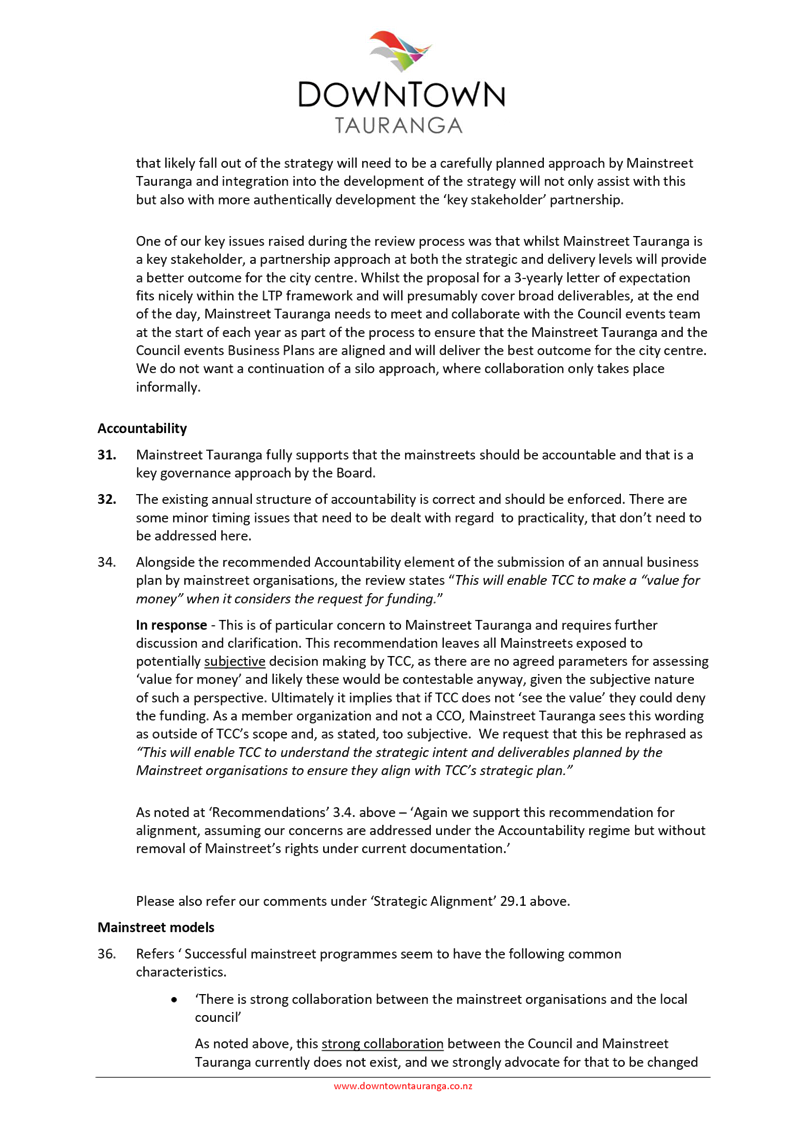
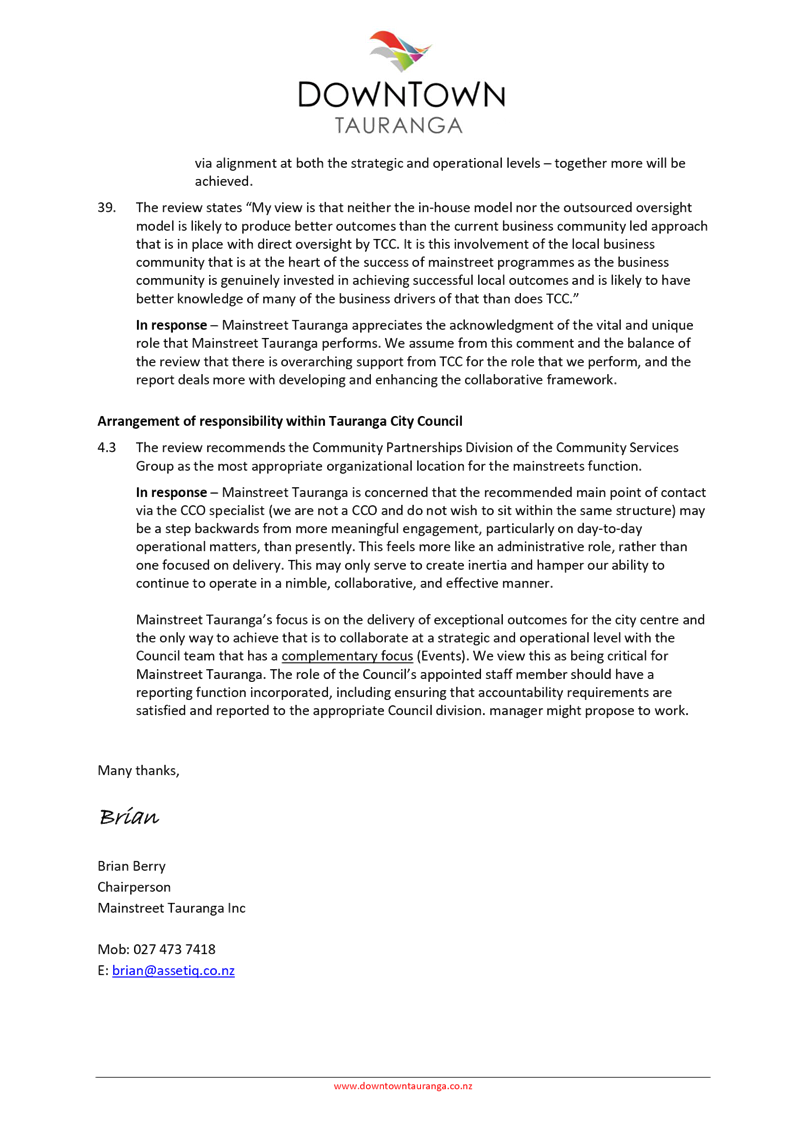
|
Ordinary Council meeting Agenda
|
15 November 2021
|

|
Ordinary Council meeting Agenda
|
15 November 2021
|


|
Ordinary Council meeting Agenda
|
15 November 2021
|

11.4 Reclassification
of land parcel within Golf Road reserve - Mount Playcentre
File
Number: A13030708
Author: Ross
Hudson, Team Leader: Planning
Authoriser: Gareth
Wallis, General Manager: Community Services
Purpose
of the Report
1. To
seek approval, in principle, to change the classification of part of Golf Road
Reserve, and to authorise public notification of the proposed
re-classification, pursuant to the Reserves Act 1977.
|
Recommendations
That the Council:
(a) Approves, in principle, the
re-classification of a portion of Golf Road Reserve, up to 800m2, identified
indicatively in the plan attached at Figure 2 of this report, from recreation
reserve to local purpose (community building) reserve, pursuant to section 24
of the Reserves Act 1977; and
(b) Authorises public
notification and public consultation of the proposed re-classification,
pursuant to section 24 of the Reserves Act 1977.
|
Executive
Summary
2. Council has a long
standing action to relocate Mount Maunganui Playcentre (the Playcentre) from
Blake Park, given the significant pressure on this site from sports users.
Several alternative sites have been identified over the last 5-10 years.
3. The Omanu Bowls Club
disbanded in 2020, freeing up land within the Golf Road Reserve. Council has
worked with the Playcentre to assess the viability of this site from a Council
and Playcentre perspective, with the outcome being that in principle, this is a
suitable location for the Playcentre.
4. To progress the use of
this land for the Playcentre, Council needs to reclassify a portion of the
reserve from recreation reserve to local purpose (community buildings) reserve.
The balance of the site will remain as recreation reserve.
BACKGROUND
Mount Maunganui Playcentre
5. The Playcentre is located
on Blake Park, a strategic active reserve with multiple sport and recreation
user groups. Blake Park is under significant and growing pressure from sports
users as the city grows.
6. Relocation of the
Playcentre from Blake Park has been a long held strategic goal for Council. It
is supported by the Tauranga Reserves Management Plan, which requires “the
current Playcentre lease will expire in 2019 and will not be renewed. Before
the lease expiry in 2019 Council will work with the Playcentre to investigate
new sites and will assist in the relocation of the Playcentre to a suitable
location”.
7. Council has been working
with the Playcentre for many years to identify an alternative location. A site
at Tatua Reserve was agreed in the Tauranga Reserves Management Plan. However,
a subsequent opportunity was identified in 2020 when the Omanu Bowls Club, who
occupied a large area of the Golf Road Reserve, disbanded.
8. In
the 2021-2031 Long Term Plan, Council resolved to investigate the viability of
the Playcentre relocating to Golf Road Reserve, and brought forward funding of
$144,310 to contribute to relocation costs.
Golf Road
Reserve
9. Golf Road Reserve is
located at 62 to 64 Golf Road, Mount Maunganui.
10. It is approximately 8,240m2
and is classified as recreation reserve under the Reserves Act 1977 (The Act).
It is zoned Active Open Space in the Tauranga City Plan and categorised as an
Active Reserve in the Tauranga Reserves Management Plan.
11. The primary purpose of recreation
reserves is for “the recreation and sporting activities, and the physical
welfare and enjoyment of the public”.
12. The Active Open Space Zone applies
to the City’s parks and reserves that are primarily used for organised
sport and events, but are also used for passive purposes.
13. The Tauranga Reserves Management
Plan identifies the key management outcomes for Active Reserves are priority
for organised sports or events, where the community can take part in and watch
sports. The management statement for Golf Road Reserve is to “consider
using part of the site for buildings for community organisations, including
storage.”
14. Other users of the site are Mount
Maunganui Bridge Club, who are temporarily occupying the old bowling club
building whilst their new facility is being built. The new facility will be
jointly occupied with Surf Lifesaving NZ. This new build will occupy
approximately 1,000m2 of the site and is located on the Gold Road frontage.
15. Both user groups are consistent with
the recreation reserve classification (which can also include more passive
recreational activities). The reserve is bordered to the north east and south
west by residential properties, to the east, south and west by the Mount
Maunganui Golf course, and has a road frontage to Golf Road.

Figure
1: Golf Road Reserve – outlined in yellow
The proposal
16. The proposal is to lease an area of
approximately 800m2 to the Playcentre, and allow them to construct a
new building and operate a playcentre at the reserve.
17. The proposed location for the leased
area is shown on the plan below, shaded blue.
18. The Playcentre agrees that the Golf
Road site is suitable for their needs and are keen to progress this. The
proposal is consistent with the Tauranga Reserves Management Plan requirements
for potential use of this reserve. The Playcentre have funding to enable them
to proceed with development of a new facility and the identification of a
suitable site for their relocation has been ongoing for many years, therefore,
it is recommended that the reclassification process commences as soon as
possible.
19. Further discussions are underway
regarding the potential use of the balance of the site (on the Mount Golf
Course end), in accordance with the existing recreation reserve classification
and City Plan zoning.

Figure
2: Indicative location of Playcentre leased area
ISSUES
20. In order to facilitate the
re-location of the Playcentre to Golf Road Reserve, Council will need to
re-classify the part of the recreation reserve proposed to be leased to the
Playcentre to local purpose reserve (community building) reserve. This is
because a playcentre is not consistent with the purpose of a recreation reserve
under the Act.
21. Steps required to be undertaken by
Council include a survey of the reserve to prepare a Survey Office Plan for the
area proposed to be re-classified, notification of the proposed
re-classification to the Department of Conservation, public notification,
engagement with mana whenua, receipt of submissions and objections,
consideration of mana whenua feedback, consideration of objections, and a
Council resolution to confirm re-classification or not.
22. Council
has authority to apply final discretion on whether the reserve is re-classified
in accordance with the 2013 Instrument of Delegation for Territorial
Authorities by the Minister of Conservation.
Strategic / POLICY/ Statutory
Context
23. Relocation of the Playcentre to Golf
Road Reserve is consistent with:
(i) Council’s
broader strategic outcomes of having a well-planned city with a variety of
community amenities, where people of all ages and backgrounds are included,
feel safe, connected and healthy.
(ii) Council’s
Community, Private and Commercial Use of Council-Administered Land, which
specifically provides for the relocation of the Playcentre to Council land.
(iii) The
Tauranga Reserves Management Plan. The proposal has been assessed against this
plan and it is considered that the Playcentre can successfully occupy part of
the site to meet its requirements, without adversely affecting the use of the
rest of the site.
(iv) The
Tauranga City Plan, which provides for community buildings on Active Open Space
zoned sites as permitted activities, subject to a number of permitted activity
conditions. Should the proposed development not meet the permitted activity
conditions, a resource consent will be required.
24. Relocation to this site is not
consistent with the Reserves Act, unless part of the site is re-classified to
local purpose (community buildings) reserve.
Options
25. Option 1 – do not
approve, in principle, the re-classification of part of Golf Road Reserve and
do not authorise public notification or consultation. This option retains the
status quo.
|
Advantages
|
Disadvantages
|
|
Nil
|
Does not facilitate re-location of the
Playcentre from Blake Park.
|
|
|
Does not assist Blake Park to meet the
increasing demands from sports users.
|
Risks: The Playcentre loses
funding from third parties that is conditional upon them securing a site and
beginning construction this financial year.
Financial
implications: Nil
26. Option
2 – approve, in principle, the re-classification of Golf Road Reserve
and authorise public notification and consultation.
|
Advantages
|
Disadvantages
|
|
Facilitates the re-location of the
Playcentre from Blake Park.
|
Nil
|
|
Assists Blake Park to meet the
increasing demands from sports users.
|
|
Risks: Nil – this is an
“in principle” decision and can be reversed upon the receipt of,
and consideration of, objections and mana whenua feedback.
Financial
implications: Staff time and operational budgets to undertake the
re-classification process.
Legal Implications /
Risks
27. There are no identified legal
implications or risks to Council in making this decision at this stage. As this
is an “in principle” decision, it is able to be reversed upon the
receipt of, and consideration of, objections and mana whenua feedback.
Significance
28. The Local Government Act 2002
requires an assessment of the significance of matters, issues, proposals and
decisions in this report against Council’s Significance and Engagement
Policy. Council acknowledges that in some instances a matter, issue, proposal
or decision may have a high degree of importance to individuals, groups, or
agencies affected by the report.
29. In making this assessment,
consideration has been given to the likely impact, and likely consequences for:
(a) The
current and future social, economic, environmental, or cultural
well-being of the district or region.
(b) Any persons
who are likely to be particularly affected by, or interested in, the proposal.
(c) The
capacity of the local authority to perform its role, and the financial and
other costs of doing so.
30. In accordance with the
considerations above, criteria and thresholds in the policy, it is considered
that this decision is of low significance.
ENGAGEMENT AND CONSULTATION
31. The Reserves Act prescribes the
engagement/consultation that is required when considering re-classification of
a recreation reserve:
(i) Engagement
with tangata whenua/mana whenua on the proposed re-classification and potential
use of the land.
(ii) Consultation
with DOC and notification of the reasons why the re-classification is required.
(iii) Public
consultation on the re-classification, which will include
advertising/information through print and online media, and the ability for
people to provide feedback to Council within a specified period.
32. All feedback will be reported on and
considered through a deliberations report to Council.
Next Steps
33. Should Council resolve, in
principle, to re-classify part of Golf Road Reserve, staff will initiate the
site survey, consultation and engagement processes and will present feedback,
including objections, as part of the deliberations report.
34. Council will then confirm (or not
confirm) the re-classification.
Attachments
Nil
11.5 Meetings
schedule January-September 2022
File
Number: A12993677
Author: Coral
Hair, Manager: Democracy Services
Authoriser: Susan
Jamieson, General Manager: People & Engagement
Purpose
of the Report
1. This report recommends the adoption of a meetings schedule for the
period January-September 2022.
|
Recommendations
That the Council:
(a) Receives
the report “Meetings schedule January-September 2022”.
(b) Adopts
Attachment 1 as the meetings schedule for the period January to September
2022.
|
Background
2. The
Council may adopt a schedule of meetings to cover any future period the Council
considers appropriate. It is recommended that the Council adopts a meetings
schedule for the period January to September 2022, as included in Attachment 1,
as this coincides with the term of the Commission.
3. An
election is scheduled to be held on 8 October 2022 and the incoming Council
will adopt a governance structure, which will determine the meetings cycle. A
tentative Inaugural Council meeting date has been included but this is a
placeholder only.
4. The
schedule sets out a three-weekly Council meeting cycle, with the Strategy,
Finance and Risk Committee meetings to be held six-weekly and the other two
committees and advisory groups held every two or three months.
5. The
Council co-ordinates the joint committee meeting dates with the Bay of Plenty
Regional Council, the Western Bay of Plenty District Council and Smartgrowth. For
example, Tauranga City Council meetings are held on a Monday, Smartgrowth on a
Wednesday and joint committees on a Friday.
6. The
Local Government New Zealand Conference, Zone 2 and Metro meeting dates are
included in the schedule where these are known at the time of writing the
report and will be added in once dates are confirmed.
7. The following table sets
out the Annual Plan meeting dates in 2022.
|
Date
|
Meeting
|
|
21 March 2022
|
Council: Adopt Annual Plan
for public consultation
|
|
9- 12 May 2022
|
Council – Hearing of submissions
|
|
23-24 May 2022 and 26 May if required
|
Council – deliberations on submissions
|
|
27 June 2022
|
Council - Adopt Annual Plan
|
8. There are two breaks in
the year, a two-week period from 19 to 29 April 2022 and a one week period from
11-15 July 2022 where no meetings are scheduled.
9. With the upcoming
demolition of the Willow Street administration building in 2022, the Council
and Strategy, Finance and Risk Committee meetings will be held at the Bay of
Plenty Regional Council Chambers in Elizabeth Street from 2022 where these
meetings fall on a Monday, and meetings held on other days of the week, and
other committees and advisory groups, will be held in the ground floor meeting
room at the Tauranga City Council office on the corner of Cameron Road and
Third Ave.
10. Alternate meetings will be held at
marae for the Tangata Whenua/Tauranga City Council Committee, the Waiāri
Kaitiaki Advisory Group and the Wastewater Management Review Committee.
11. Public notices and any advertising
of meetings will highlight the venues.
Strategic / Statutory Context
12. Clause 19(6) of
Schedule 7 of the Local Government Act 2002 provides for the Council to adopt a
meetings schedule to cover any future period.
Options Analysis
Option 1 – Adopt the meetings
schedule for 2022 (preferred option)
13. The Council has the
option of adopting a meetings schedule for the period January-September 2022.
14. This option enables
the Commissioners, staff and the public to know when meetings are scheduled for
the year ahead.
15. The Council has
previously adopted a year’s meetings schedule and this decision would be
consistent with this practice. For these reasons this option is preferred.
Option 2 – Adopt a meetings schedule for a different time
period
16. The Council has the
option of adopting a meetings schedule for a different time period; for
example, three or six months.
17. This option would
still provide for certainty; however, a reduced timeframe can potentially make
it more difficult to schedule meetings later in the year. For these reasons
this option is not preferred.
Financial Considerations
18. There are no
financial considerations to adopting a meetings schedule.
Legal Implications / Risks
19. The legislation
provides for the adoption of a schedule of meetings.
Significance
20. The
Local Government Act 2002 requires an assessment of the significance of
matters, issues, proposals and decisions in this report against Council’s
Significance and Engagement Policy. Council acknowledges that in some
instances a matter, issue, proposal or decision may have a high degree of
importance to individuals, groups, or agencies affected by the report.
21. In
making this assessment, consideration has been given to the likely impact, and
likely consequences for:
(a) the current
and future social, economic, environmental, or cultural well-being of the
district or region
(b) any persons who are likely to be
particularly affected by, or interested in, the decision.
(c) the capacity of the local authority to
perform its role, and the financial and other costs of doing so.
22. In
accordance with the considerations above, criteria and thresholds in the
policy, it is considered that the decision is of low significance.
ENGAGEMENT
23. Taking
into consideration the above assessment, that the decision is of low significance,
officers are of the opinion that no further engagement is required prior to
Council making a decision.
Click here to view the TCC
Significance and Engagement Policy
Next Steps
24. Meetings schedule
to be available on the Council’s website.
25. Calendar requests
sent out.
Attachments
1. Meetings
Schedule January - September 2022 - A12563361 ⇩ 
|
Ordinary Council meeting Agenda
|
15 November 2021
|

11.6 Submission
on the Ministry for the Environment’s Emissions Reduction Plan
File
Number: A13010561
Author: Rebecca
Maiden, Senior Sustainability and Climate Change Specialist
Jeremy Boase, Manager:
Strategy and Corporate Planning
Authoriser: Christine
Jones, General Manager: Strategy & Growth
Purpose
of the Report
1. To
consider Council’s submission to the Ministry for the Environment’s
(Manatu Mo Te Taiao) draft emissions reduction plan ‘Te hau marohi ki
anamata, Transitioning to a low-emissions and climate resilient future’
(referred to as the ‘document’ within this report).
|
Recommendations
That the Council:
(a) Endorses
the key areas of focus for council’s submission to the Ministry for the
Environment ‘Te hau marohi ki anamata, Transitioning to a low-emissions
and climate resilient future’, incorporating amendments agreed at this
meeting.
|
|
Ordinary Council meeting Agenda
|
15 November 2021
|
Background
Aotearoa New
Zealand’s Climate Change Response and Current Consultation
2. Climate change is the
greatest challenge of our time, but it is also an opportunity to create a low
emission, climate resilient, and better Aotearoa for all New Zealanders.
3. The Government commitment
to realise this future means reducing Aotearoa’s greenhouse gas emissions
to limit the global average temperature rise to 1.5 degrees Celsius above
pre-industrial levels. These targets require:
(a) all greenhouse gases, other
than biogenic methane, to reach net zero by 2050
(b) emissions of biogenic methane
to reduce to at least 10 per cent below 2017 levels by 2030, and to at least
24-47 percent below 2017 levels by 2050.
4. To help meet the targets
and manage the impacts, the Climate Change Response Act 2002 (CCRA) establishes
a system of emissions budgets
and emissions reduction plans.
5. The Ministry for the
Environment (MfE) has prepared Aotearoa’s first emissions reduction plan (Te hau marohi ki anamata, Transitioning to a
low-emissions and climate resilient future), referred to as the
‘document’ within this report. MfE
intends to publish a final emissions reduction plan by 31 May 2022.
6. Further details on the
Government’s Zero Carbon Framework, decisions on the emissions budgets,
preliminary emissions reduction estimates of policies proposed in the emissions
reduction plan (transport, energy and industrial process sectors), and managing
risks and uncertainty, are detailed on pages 9-12 of the document.
7. The Government has
identified that ‘…strong commitment and drive from business and
community leaders, in particular iwi, hapū, and local government leaders,
is critical to Aotearoa’s success in meeting the challenge of climate
change’.
Consultation on the
Draft Emissions Reduction Plan
8. The document (Emissions-reduction-plan-discussion-document.pdf
(environment.govt.nz)) sets the direction for climate action for the next
15 years, and the pathway to meeting Aotearoa New Zealand’s 2050 net-zero
greenhouse gas emissions and biogenic methane targets by implementing new
policies and strategies. It poses a set of questions that it is seeking
submissions in response (Attachment 1).
9. It
is intended that the final emissions reduction plan will pull together the collective
effort of every part of Aotearoa New Zealand. It will set out future
policy and regulatory change, but also the action that can be taken by every
business, every town and city, and every community.
10. The
Government’s consultation document clearly articulates they want to hear
how we will play a part in the transition to a low carbon economy, however not
all policies and strategies proposed are relevant to the local government
response to climate change. The new policies and strategies identified in
the document which are pertinent to Tauranga, and to Council’s evolving
role climate change mitigation and adaptation, include:
· pathway to net
zero emissions
· alignment of the
transition with other policies
· working with
Tiriti partners
· working with local
government
· principles for the
transition
· equitable
transition
· aligning systems
and tools
· planning
· research, science
and innovation
· behaviour change
· circular and
bioeconomy
· transport
· building and
construction
· waste
11. The document covers a complex range
of responses to climate change. Our response will focus on the issues of most
relevance to Tauranga, and to the council, and provides specific comment only
on selected questions and recommendations. We also make a general endorsement
of the draft Bay of Plenty Regional Council, Local Government New Zealand
(LGNZ), and Taituara submissions as the basis of some of our responses.
12. We propose being supportive of the
document’s recommendations and its overall philosophy.
13. It is worth noting that while this
is labelled an ‘emissions reduction plan’, the document is really a
placeholder for all of the components of the final emissions reduction plan
that will incorporate the details of the ‘…collective effort
required by every business, every town and city, and every community in New
Zealand’. What is not explicitly clear is what the role of local
government will be, how local government will be resourced/funded to meet the
expectations of the role, and how the Government will ensure that its other
directions to local government, for example, in its requirements for growth via
the National Policy Statement for Urban Development, will merge and compliment
to achieve ‘…a low carbon Aotearoa New Zealand that will be a
catalyst for job creation, innovation, and prosperity’.
14. We also propose that Government
needs to give early consideration to the ‘future state’ that it
envisages once its Waters, Local Government and Planning System reform
processes are concluded, or it risks creating further unnecessary complexities
of geographic boundary, governance and funding.
15. Attachment 2 provides a draft
response for each of the themes identified in paragraph 10 based on the
discussion within the document. At the time of writing, we are still
collating internal feedback from subject matter experts which may add to or
clarify the comments already made.
Strategic / Statutory
Context
16. The
recommendations made in the draft emissions reduction plan will be considered
by Government and may influence its reform agenda as it pertains to local
government. In particular, it may influence the Local Government Reform agenda
itself, reform of the Resource Management Act and Three Waters Reform. It will
also likely influence future transport policy.
Financial Considerations
17. There
are no financial considerations in making this submission. The ultimate
costs of council’s role in emissions reduction is currently unknown.
Legal Implications /
Risks
18. There
are no legal implications.
Consultation /
Engagement
19. No
consultation is considered necessary.
Significance
20. The
Local Government Act 2002 requires an assessment of the significance of
matters, issues, proposals and decisions in this report against Council’s
Significance and Engagement Policy. Council acknowledges that in some
instances a matter, issue, proposal or decision may have a high degree of
importance to individuals, groups, or agencies affected by the report.
21. In
making this assessment, consideration has been given to the likely impact, and
likely consequences for:
(a) the current
and future social, economic, environmental, or cultural well-being of the
district or region
(b) any persons who are likely to be
particularly affected by, or interested in, the issue.
(c) the capacity of the local authority to
perform its role, and the financial and other costs of doing so.
22. In accordance with Council’s
Significance and Engagement Policy, it is considered that the decision to make
a submission is of low significance.
ENGAGEMENT
23. Taking
into consideration the above assessment, that the matter is of low significance,
officers are of the opinion that no further engagement is required prior to
Council making a decision.
Next Steps
24. The
draft submission will be finalised, and approved by the Chief Executive, in
line with amendments made at this meeting, and submitted to Manatu Mo Te Taiao
by 24 November 2021.
Attachments
1. ERP
- NZ Emissions Reduction Plan Consultation Questions - A13026776 ⇩ 
2. DRAFT Response to
Emissions Reduction Plan Consultation - A13026510 ⇩ 
|
Ordinary Council meeting Agenda
|
15 November 2021
|


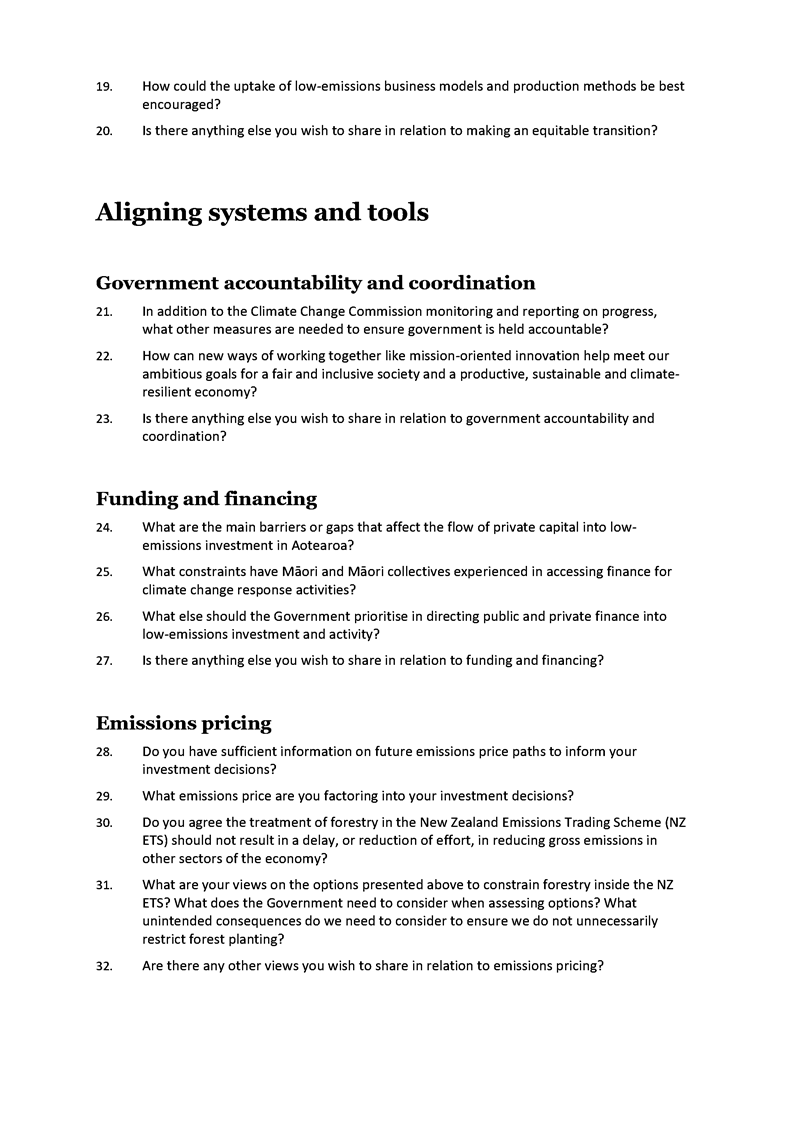
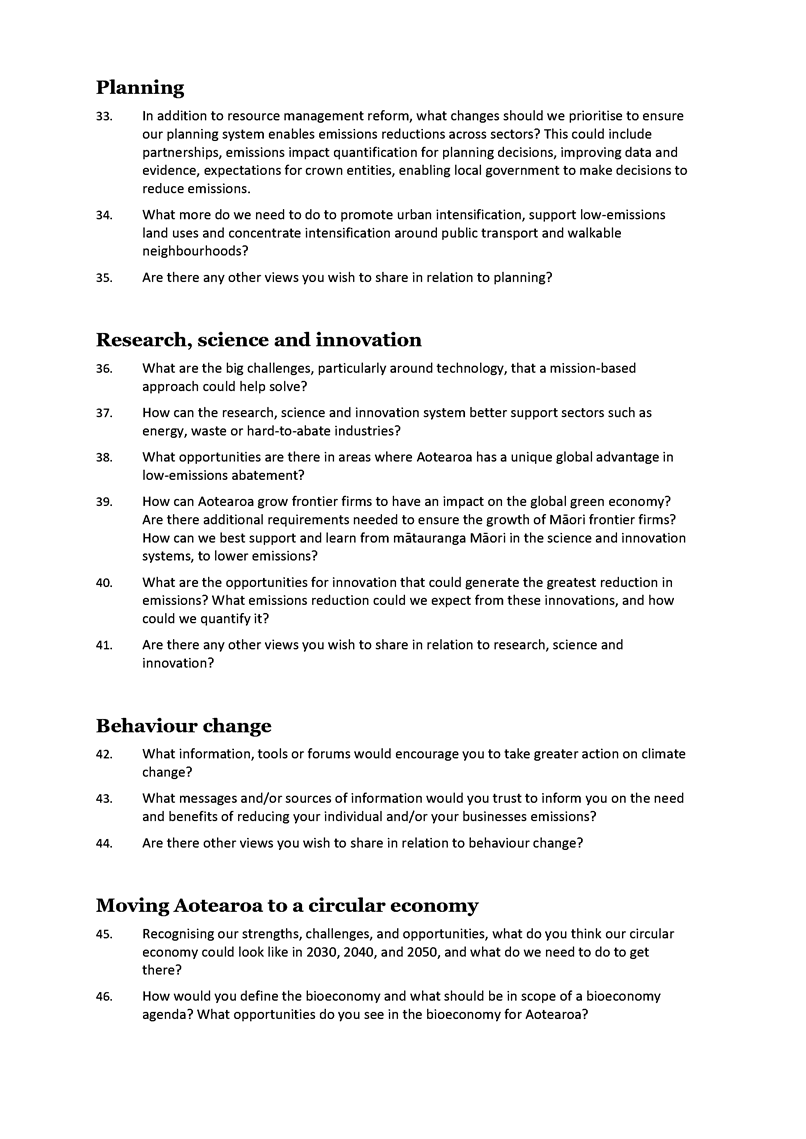
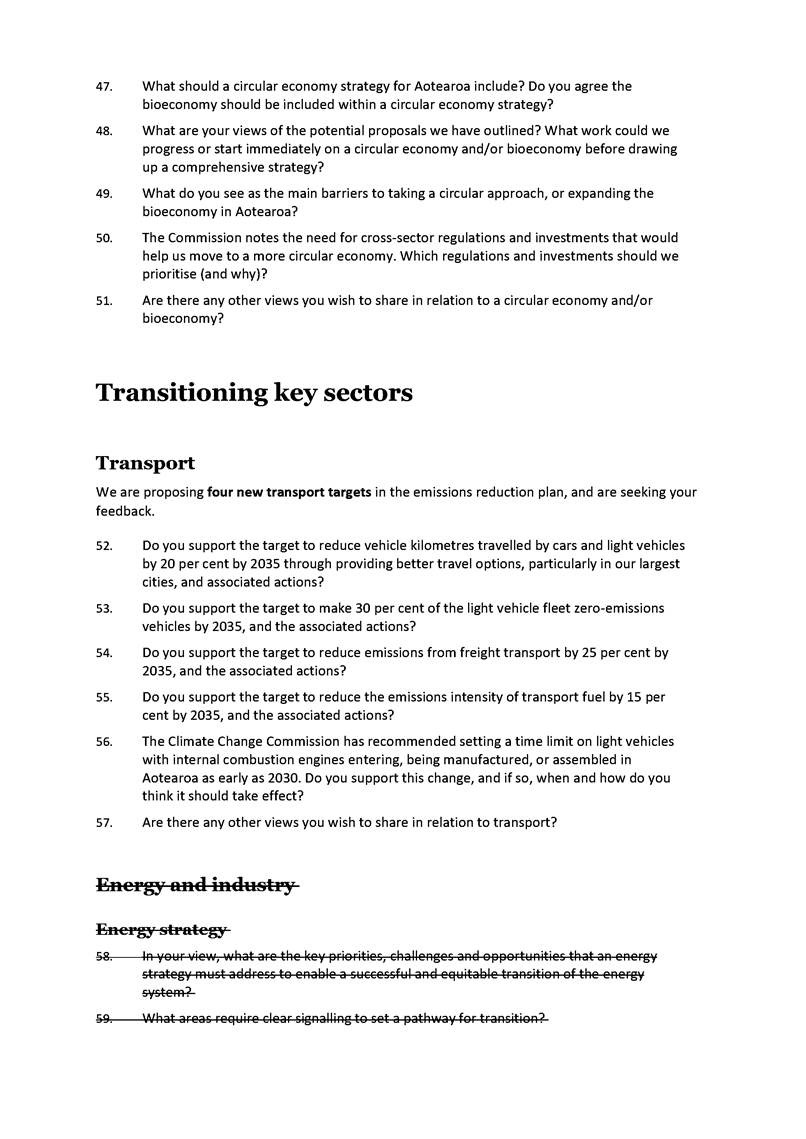
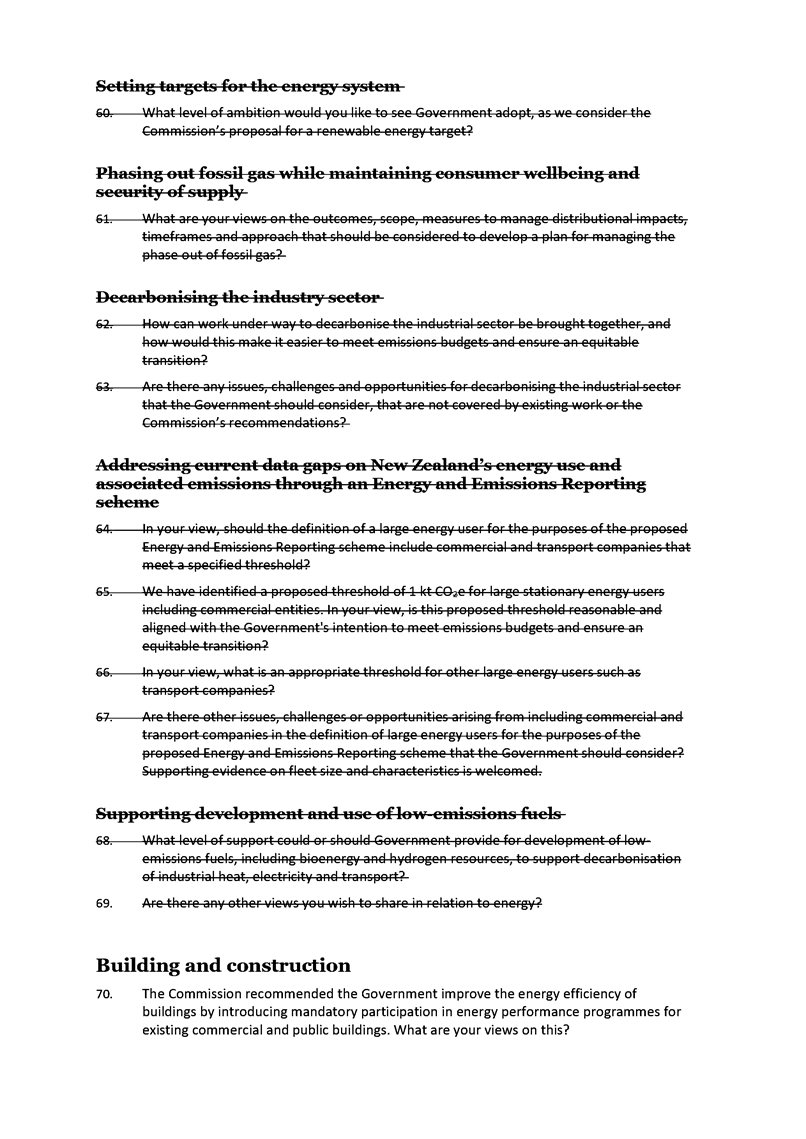
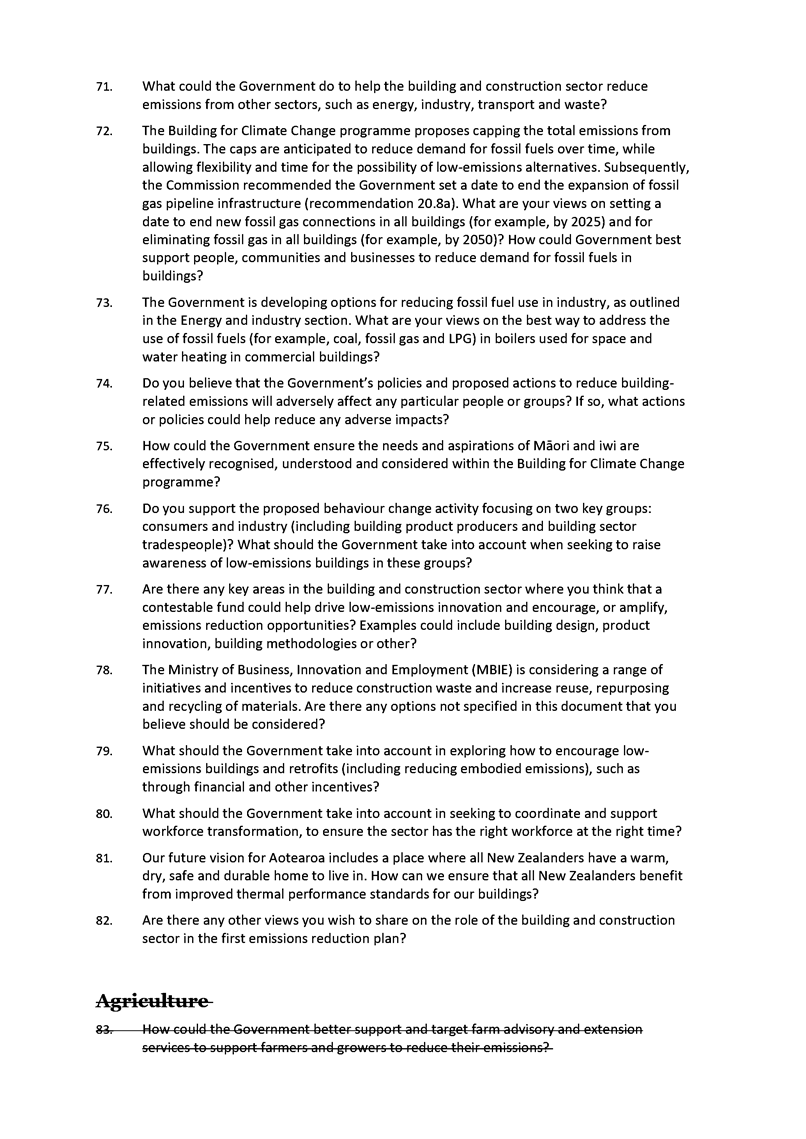
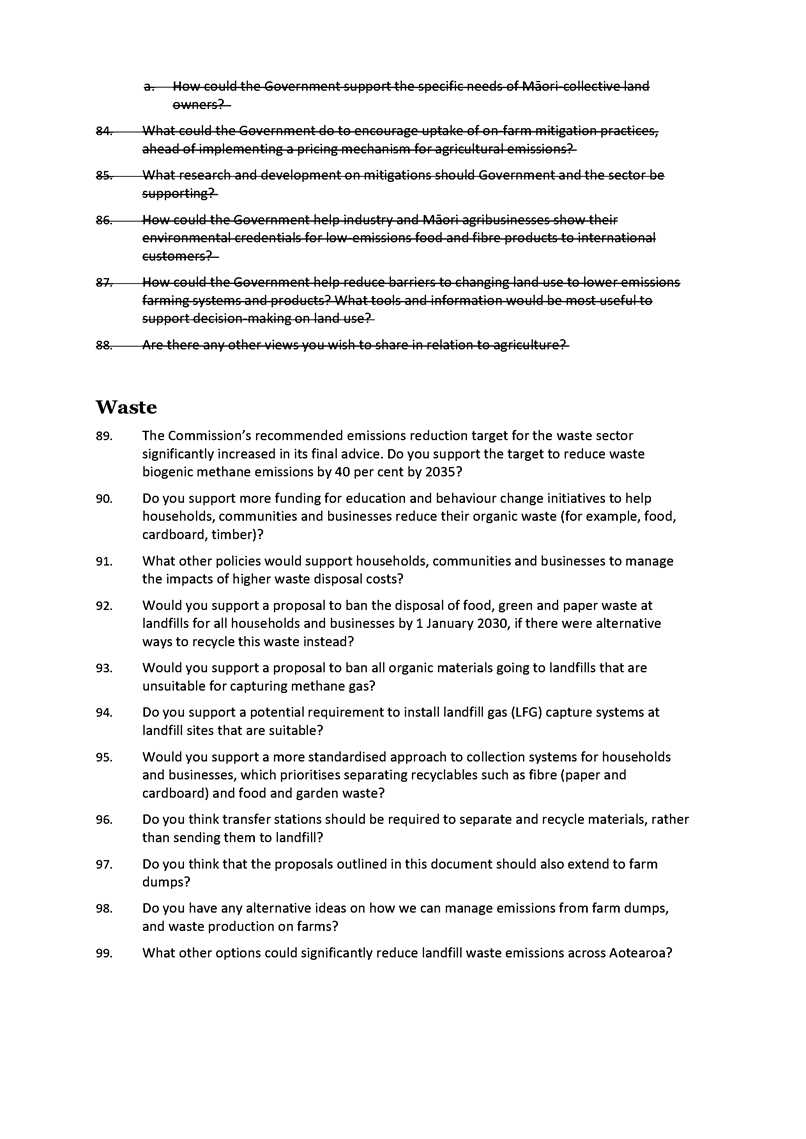
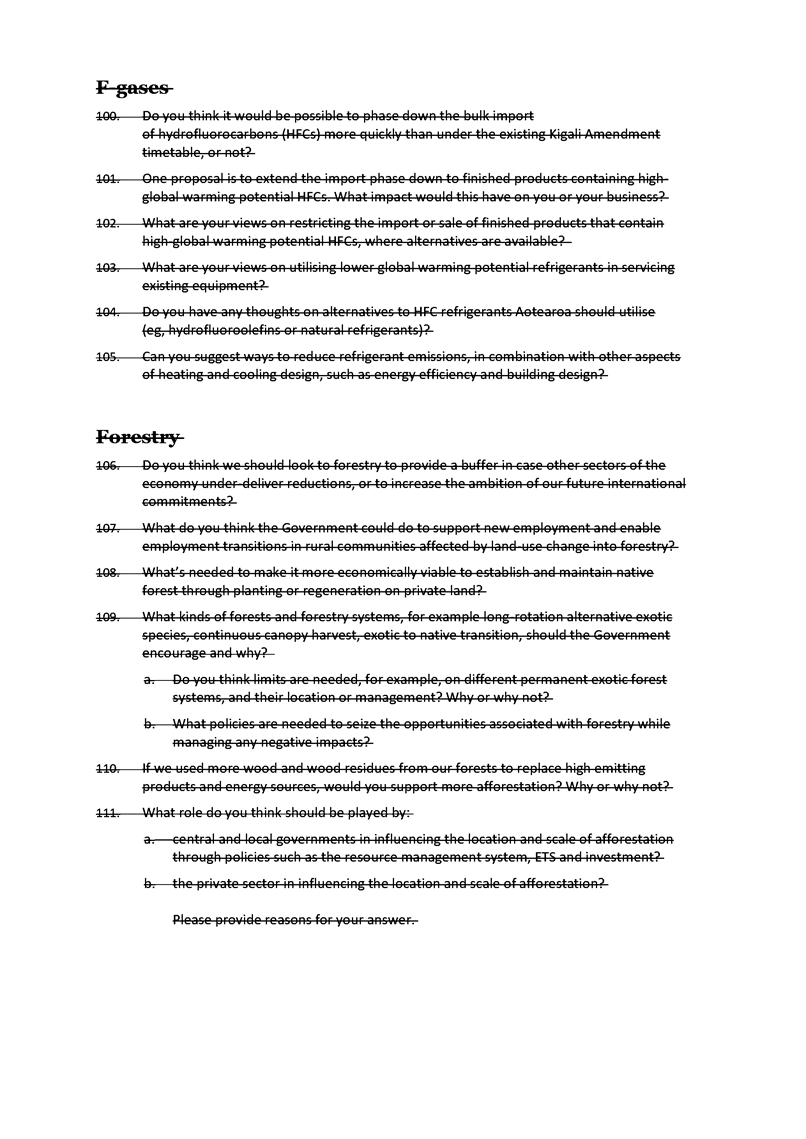
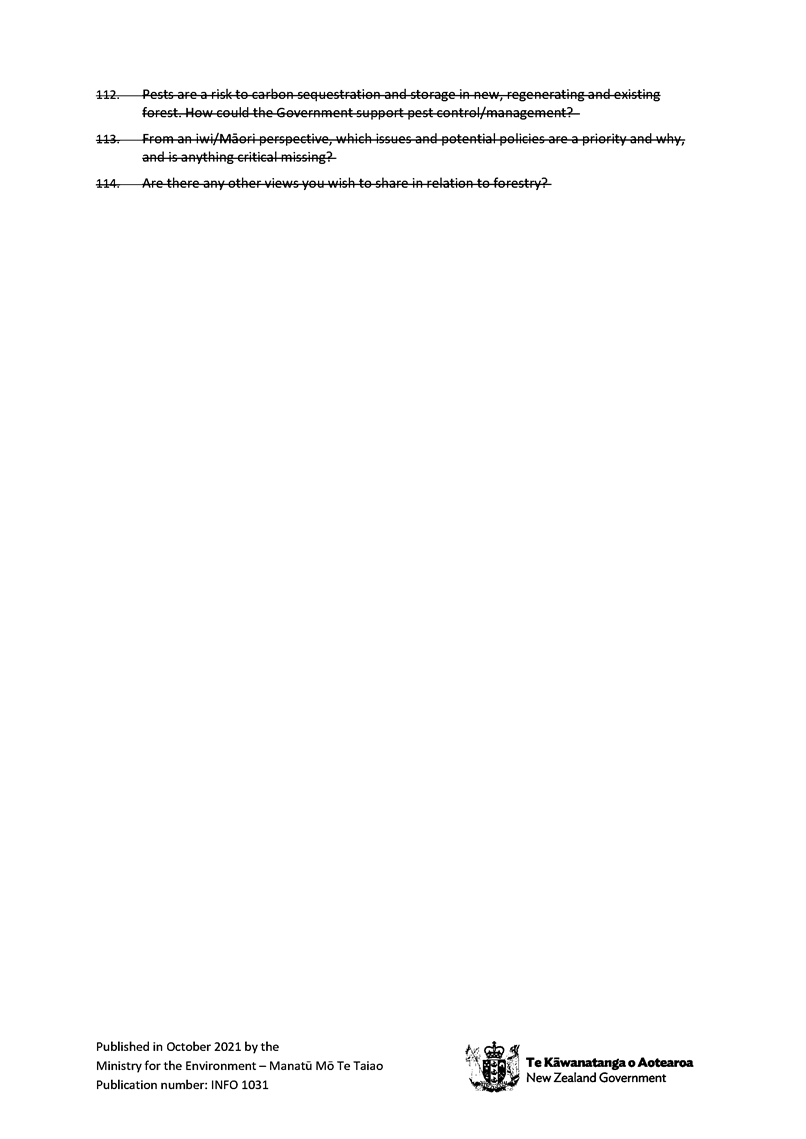
|
Ordinary Council meeting Agenda
|
15 November 2021
|
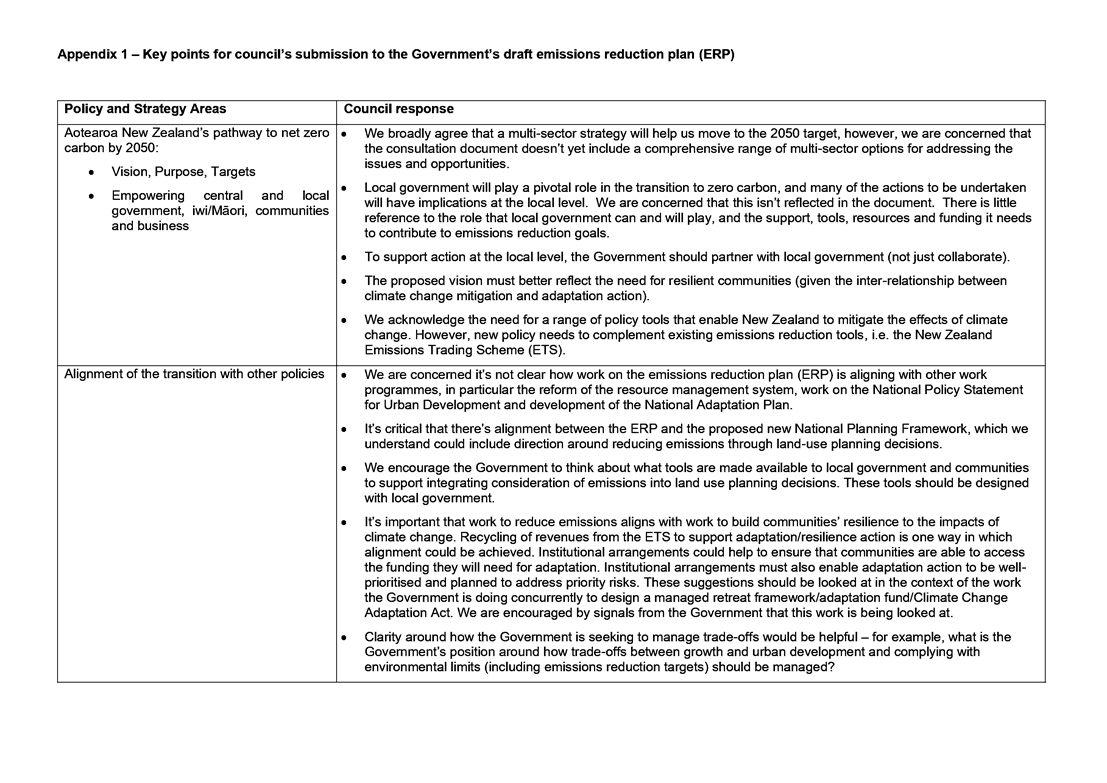
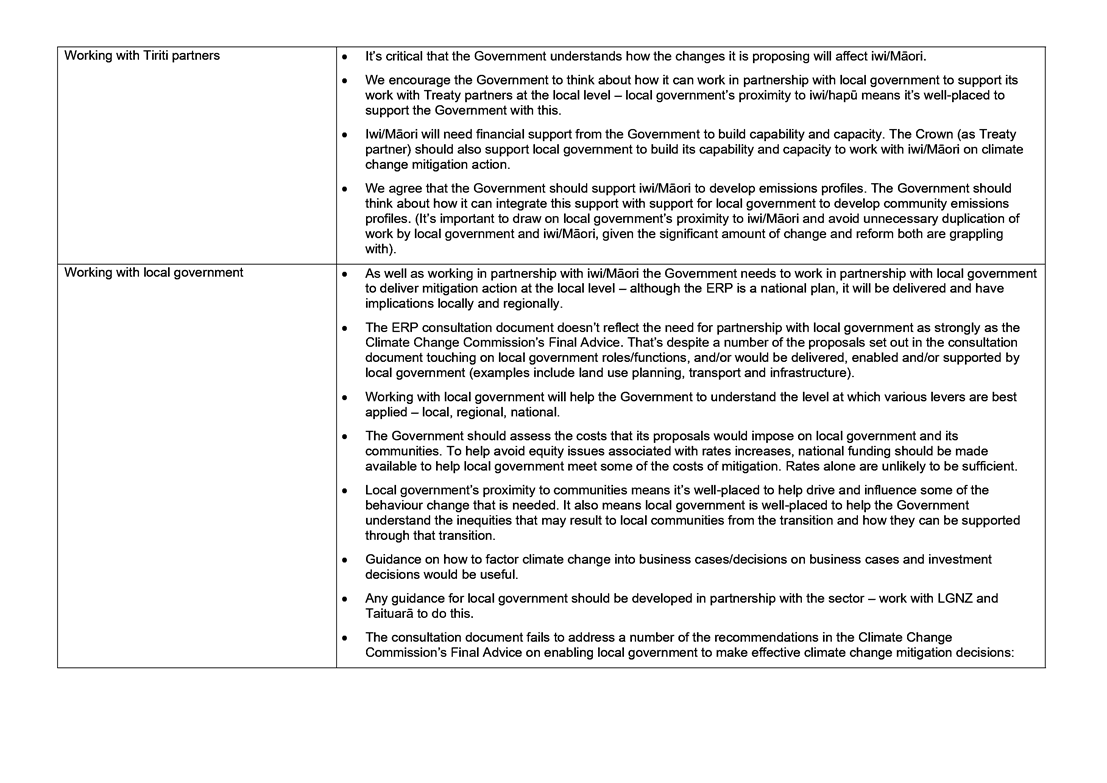
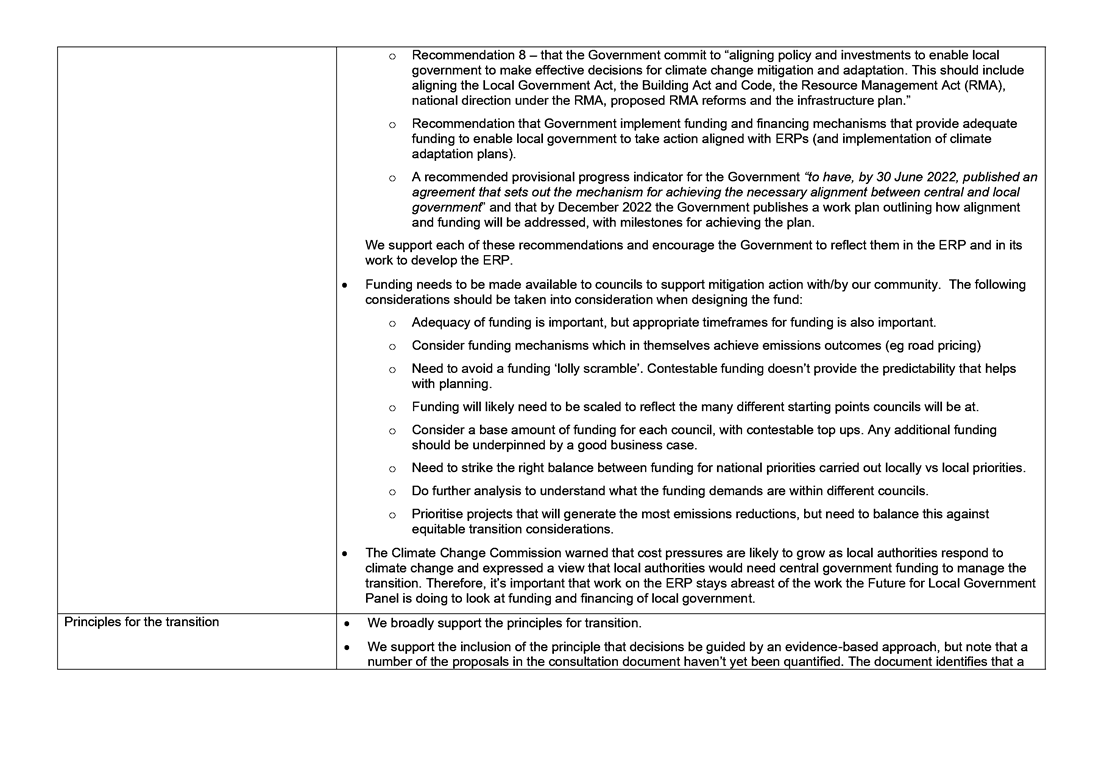
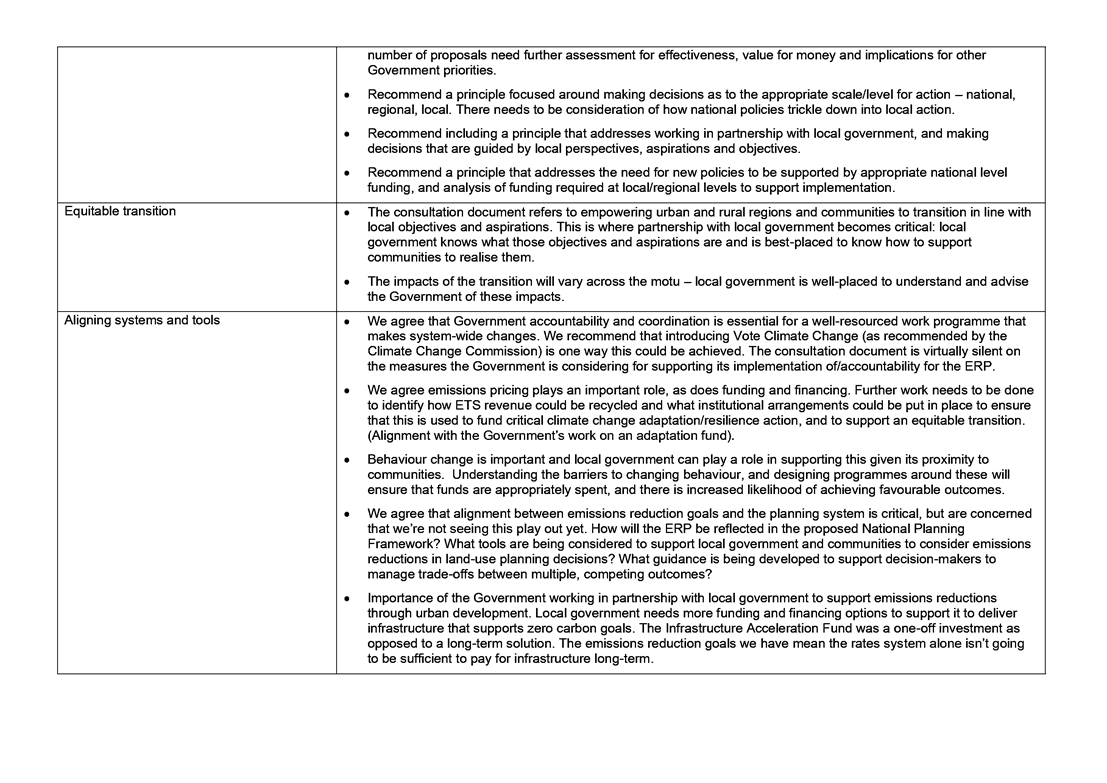
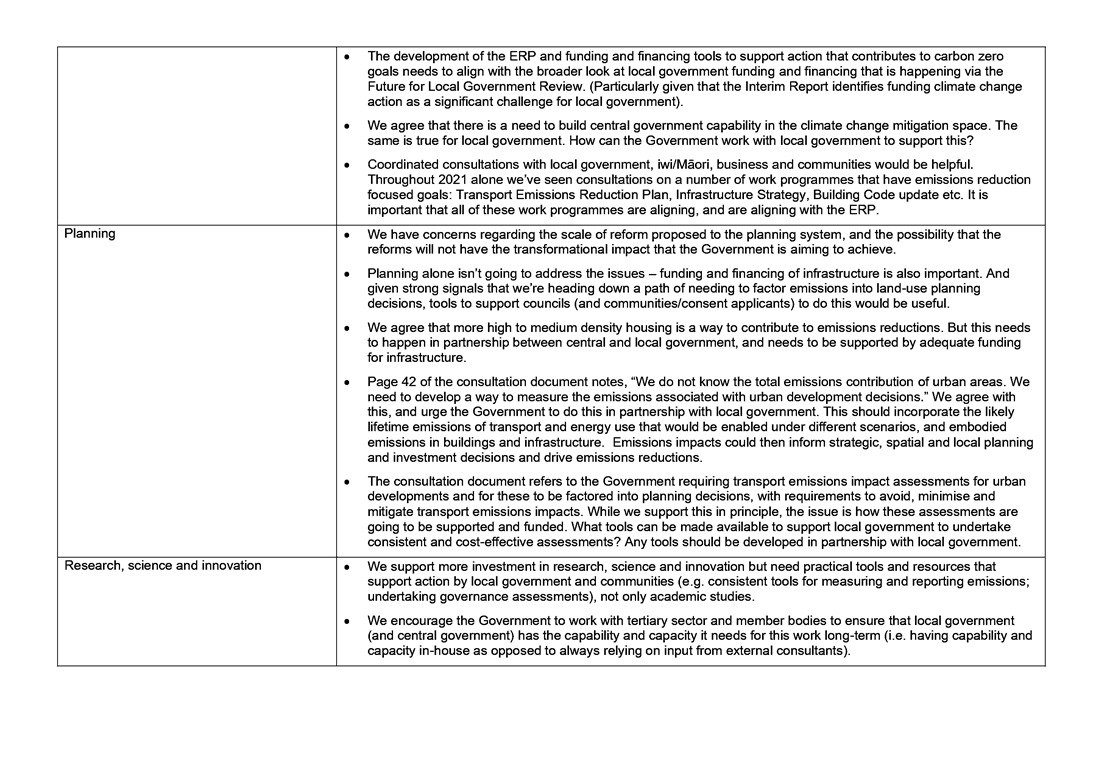
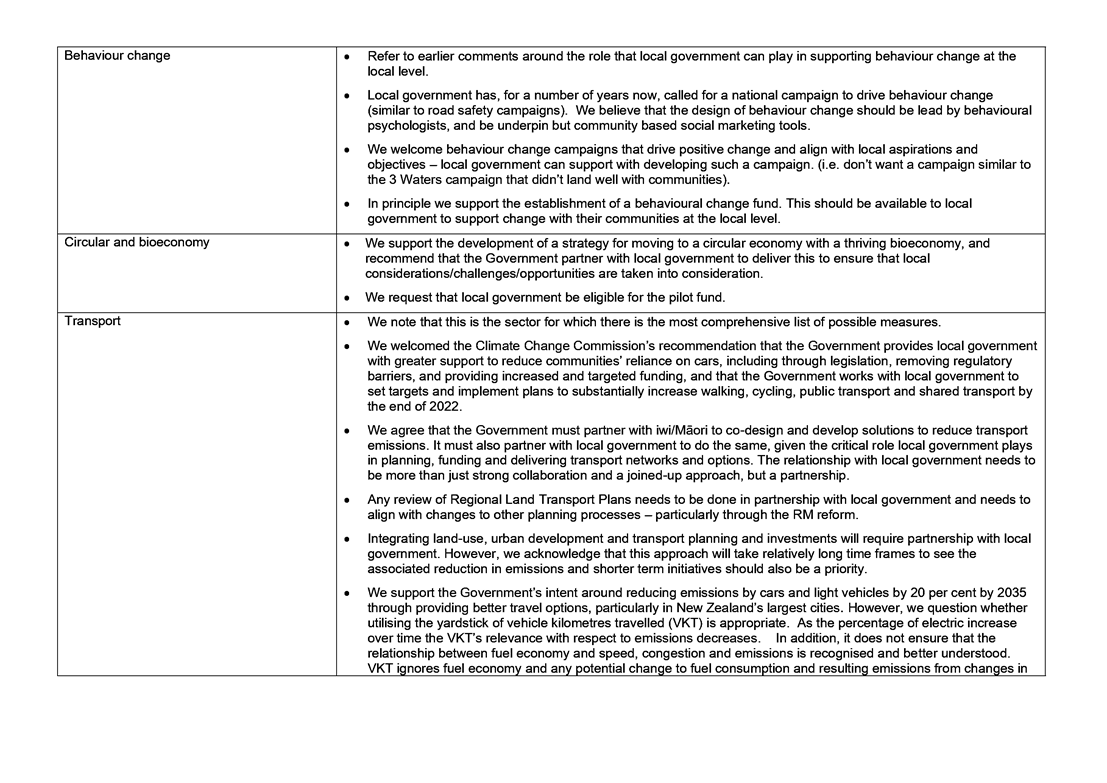
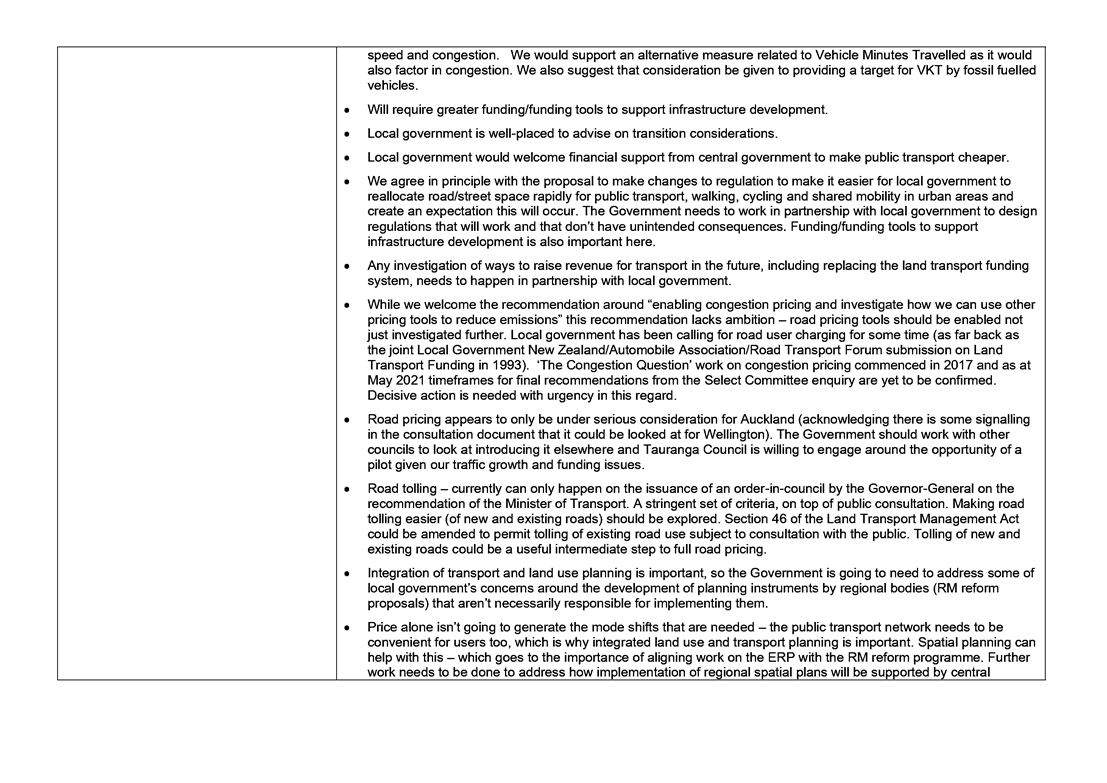
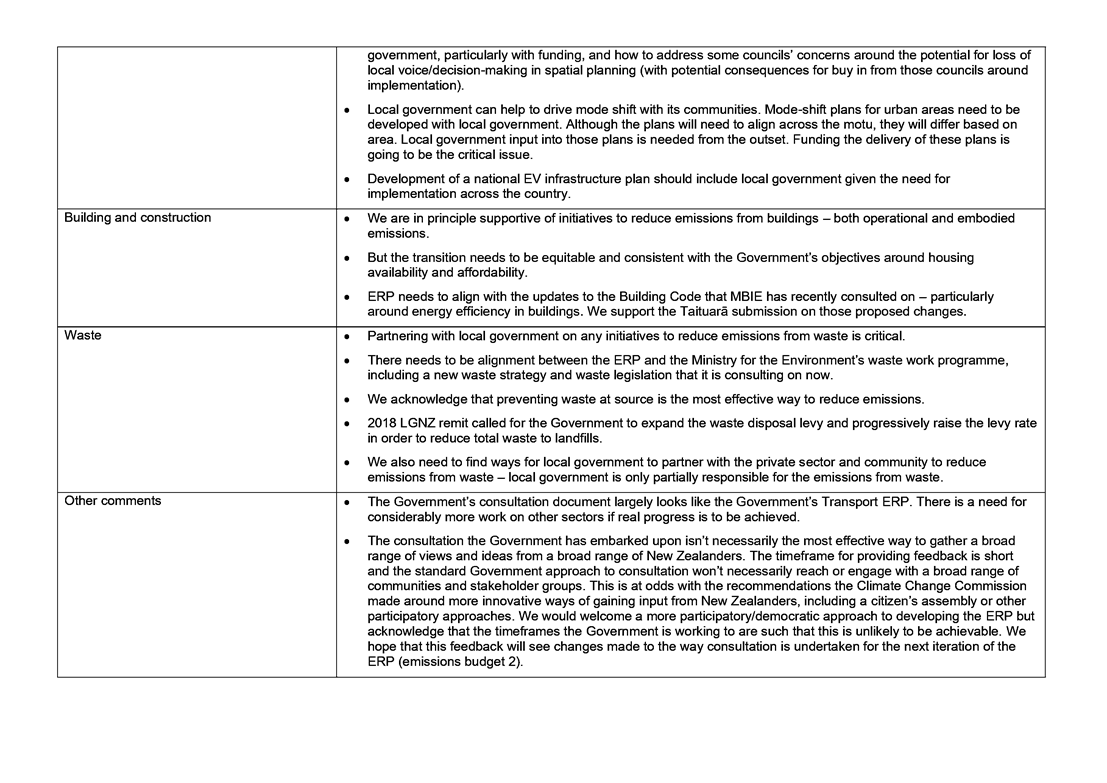
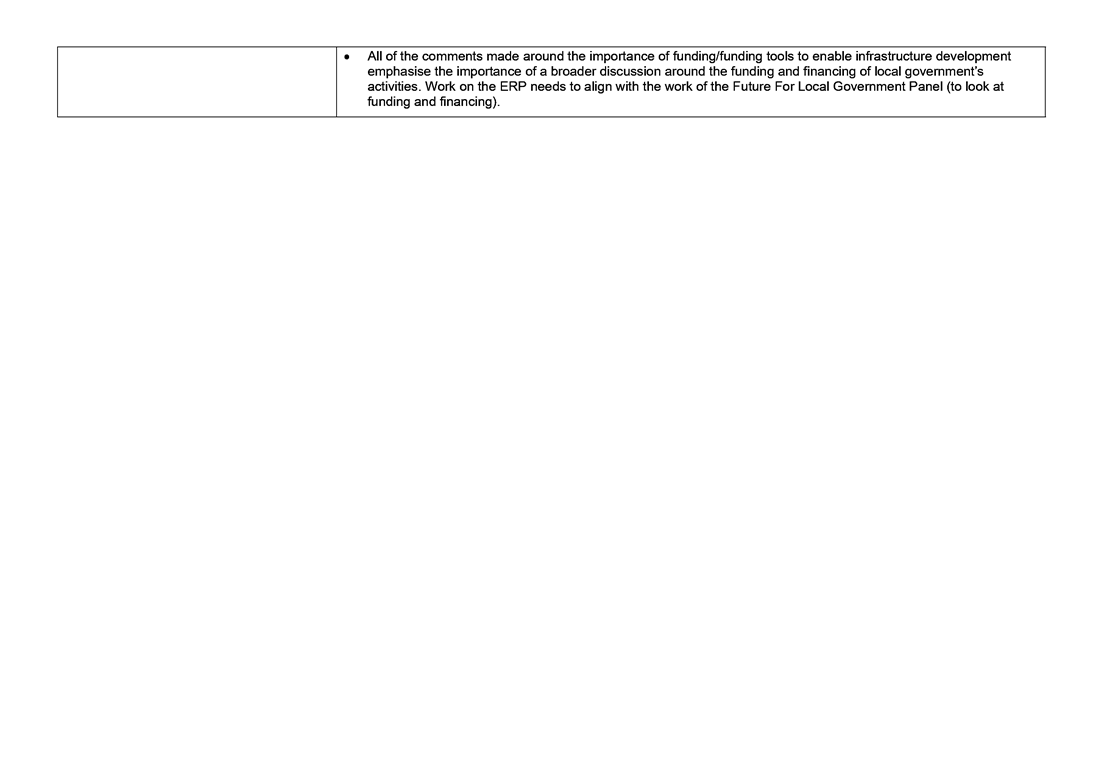
11.7 City
Plan Review Update
File
Number: A13012286
Author: Janine
Speedy, Team Leader: City Planning
Authoriser: Christine
Jones, General Manager: Strategy & Growth
Purpose of the Report
1. The purpose of this report
is to decide whether the City Plan Review project should proceed given the
resource management reform or an alternative pathway is taken.
|
Recommendations
That the Council:
(a) Put the City Plan Review on
hold (option 3) pending outcomes of the government’s resource
management reforms and instead progress with priority plan changes;
(b) Communicate with key
partners, including central Government that Tauranga City Council has decided
to put the City Plan Review project on hold and progress priority plan
changes;
(c) Staff prepare a draft work
programme for priority plan changes to be reported to Council for
consideration in early 2022.
|
Executive Summary
2. The
City Plan Review project currently intends to publicly notify the next Tauranga
City Plan for formal submissions by April 2024 to meet the legislative
timeframes required by the National Planning Standards, which apply to all
local authorities under the Resource Management Act 1991 (RMA).
3. The
Government’s intended resource management reform has led to a point where
Council needs to consider whether the City Plan Review should proceed past
completing Phase 2 (issues and options). Three pathway options are presented:
Option 1 – Proceed with the full City Plan Review;
Option 2 – Cease City Plan Review, undertake a
limited plan change work programme and make the City Plan as compliant as
possible with the National Planning Standards; or
Option 3 –
Put the City Plan Review project on hold and undertake agreed priority plan
changes.
4. Option
3 is recommended to put the City Plan Review project on hold and instead
develop a work programme that completes existing plan change commitments and
looks to undertake priority plan changes in response to key issues for Tauranga
and aligned national policy direction. This would occur whilst Council awaits
the new Natural and Built Environments Act (NBA), intended to replace the RMA
(and our District Plan) with a combined plan for the Bay of Plenty region under
a new national planning framework. If and when the governments Resource
Management reform are confirmed and implemented the City Plan review would then
be formally abandoned.
Background
5. The
last City Plan Review commenced in 2008. New legislative requirements and
national / regional policy direction now place significant additional
obligations on local authorities through their district plans. Given these
matters and the pressures facing the city, our District Plan is no longer fit
for purpose.
6. The
City Plan Review project plan was endorsed by the Urban Form and Transport
Development Committee on 21 July 2020. It sets out six phases for the City Plan
Review project, with key milestones at each stage.
7. The
project received direction from the Strategy, Finance and Risk Committee on 17
May 2021 to proceed with completion of Phases 1 and 2 of the City Plan Review.
The project is on track to complete Phase 2, signalled by the release of five
topic-based discussion documents in October 2021 for engagement with
stakeholders and tangata whenua on options to address key issues. Stakeholders
include groups across the public and private sector such as environmental,
sustainability and housing affordability groups and property developers.
8. To
facilitate efficient and responsible use of external resources, as well as to
support effective internal resource planning, a decision on the next steps for
the City Plan Review project is required. Relevant considerations to the
decision as to whether the project proceeds as planned are the:
· increasingly urgent need to address housing supply for
Tauranga
· impact of the Covid-19 pandemic which has made it more
difficult to work at pace
· shortage of skills with staff vacancies remaining unfilled
for periods of time
· resource management reform replacement legislation expected
timeframes and new planning framework
· recently announced Resource Management (Housing Supply and
Other Matters) Amendment Bill introducing mandatory medium rise residential
standards, which require a plan change to the City Plan to be notified by
August 2022.
Strategic
/ Statutory Context
9. Section
79 of the RMA requires regional and territorial authorities to commence a
review of their plans at least once every 10 years.
10. The
National Planning Standards require Tauranga City Council to have notified its
reviewed plan within five years of the National Planning Standards becoming
operative i.e.. April 2024.
11. Given
that the resource management reforms propose a combined plan for the Bay of
Plenty region it is considered appropriate to progress with priority plan
changes which achieve strategic outcomes for the city and give effect to
National Policy Statements rather than meet legislative requirements that will
be repealed.
12. The
RMA does not set out the consequences for not meeting the requirements to
review every 10 years and comply with the National Planning Standards. Formal
communication will be sent to the Ministers of Local Government and the
Environment on the resolutions set out in this report.
Options
Analysis
13. There are three options considered
given the resource management reforms are set out below.
14. Option 1 – Proceed with full
City Plan Review
|
Advantages
|
Disadvantages
|
|
· Able to meet all legislative
requirements under the RMA.
· Council reviews all chapters in the
City Plan and therefore can provide a fit for purpose new plan.
|
· City
Plan provisions may have new requirements under the NBA legislation.
· Inefficient use of resourcing and
funding allocated to the City Plan Review that may not be required.
· Significantly drawn our timeframes
to address urgent resource management issues facing the city.
|
15. The
risks associated with this option is that work undertaken for the full City
Plan Review may not be used if the RMA is replaced before the City Plan is
notified or made operative and rework is required in preparation for a combined
plan.
16. Option 2 – Cease City Plan
Review, undertake a limited plan change work programme and make the City Plan
as compliant as possible with the National Planning Standards.
|
Advantages
|
Disadvantages
|
|
· Able
to make changes to the City Plan to (substantively) address National Planning
Standards.
· Earlier
delivery of plan changes to notification and provisions come into effect
earlier for key issues.
· Likely
cost savings in not undertaking a full review and undertaking a limited
number of plan changes.
|
· Cannot
make all appropriate amendments to the operative City Plan.
· Time
and resource required to translate the existing City Plan into a new
structure to meet National Planning Standards provides minimal community
benefit.
· Will
not fully meet the National Planning Standards or RMA District Plan review
requirements.
|
17. Under
this option the engagement work during Phases 1 and 2 of the City Plan Review
will be used to contribute to how issues are addressed.
18. Option 3 – Put the City Plan
Review project on hold and undertake agreed priority plan changes.
|
Advantages
|
Disadvantages
|
|
· Council decides the
level of investment needed to give effect to current national, regional and
local direction and priorities for resource management.
· Allows
Council to address immediate housing supply and other challenges within
shorter timeframe, through rezoning and intensification plan changes.
· Earlier
delivery of plan changes to notification and provisions come into effect
earlier.
|
· Cannot
make all appropriate amendments to the operative City Plan.
· May
not give effect to all current national and regional policy direction
· Less
efficient to undertake plan changes individually than through a full review.
|
Financial
Considerations
19. The
Long-term Plan 2021-2031 approved $7,206,250 to progress the City Plan Review
project to formal public notification and through to hearings and appeals from
2021-2028. Under Option 3, it is considered that this budget (or a substantive
proportion of it) will be required to progress the priority plan change work
programme.
20. No
additional budget is required to progress with Option 3.
Legal
Implications / Risks
21. Section 79 of the RMA requires
regional and territorial authorities to commence a review of their plans at
least once every 10 years. The Tauranga City Plan was made fully operative in 5
July 2014. Therefore, Council is required to commence the City Plan Review
prior to July 2024. The City Plan Review project commenced in July 2020 with
the approval of the project plan.
22. Central Government introduced the
National Planning Standards to make council plans and policy statements easier
to prepare, understand and comply with and more consistent across councils. The
first set of planning standards came into force on 3 May 2019. The National Planning
Standards require Council to publicly notify the next Tauranga City Plan for
formal submission by April 2024.
23. Given the expectation of new
legislation being introduced to Parliament in 2022 to replace the RMA, not
meeting the National Planning Standards is a pragmatic approach which carries a
relatively low risk for Council. If the resource management reforms change in
direction or timing, the City Plan Review will be able to recommence, however
timeframes to meet notification in April 2024 would be difficult.
Consultation
/ Engagement
24. The
Communications & Engagement and Tangata Whenua/Cultural workstream are two
of the five workstreams for the City Plan Review project. The implemented
engagement approach has ensured stakeholders, tangata whenua and the community
have had input into the first two phases of the project.
25. During
Phases 1 and 2 of the City Plan Review project, issues and opportunities have
been gathered, including through stakeholder workshops and tangata whenua
engagement in March, April and July 2021. Individual hui with hapu are
continuing.
26. Feedback
on the five topic-based discussion documents and options to address the
identified key issues will inform either the next steps with the City Plan
Review or the alternative pathway option of a plan change work programme.
27. The
Ministers of Local Government and the Environment have been informed of the
matter under consideration, along with Bay of Plenty Regional Council and
Western Bay of Plenty District Council.
Significance
28. The Local Government Act 2002
requires an assessment of the significance of matters, issues, proposals and
decisions in this report against Council’s Significance and Engagement
Policy. Council acknowledges that in some instances a matter, issue, proposal
or decision may have a high degree of importance to individuals, groups, or
agencies affected by the report.
29. In making this assessment,
consideration has been given to the likely impact, and likely consequences for:
(a) the current and future social, economic,
environmental, or cultural well-being of the district or region
(b) any persons who are likely to be
particularly affected by, or interested in, the decision.
(c) the capacity of the local authority to
perform its role, and the financial and other costs of doing so.
30. In accordance with the considerations
above, criteria and thresholds in the policy, it is considered that the
decision is of medium significance.
31. In
accordance with the considerations above, criteria and thresholds in the
policy, it is considered that the decision is of medium significance. The City
Plan Review is of high significance as it affects a wide range of people, and
there is the potential for large consequences for the city, however the
decision proposed in this report is of medium significance. While it is
recommended to put the City Plan Review on hold pending outcomes of the
government’s resource management reforms, the delivery of policy under
the RMA will be through an alternative pathway using work done to date on the
project and current allocated funding.
ENGAGEMENT
32. Taking into consideration the above
assessment, that the decision is of medium significance, staff are of the
opinion that appropriate engagement has been undertaken and no further engagement
is required prior to Council making a decision.
Next
Steps
33. Should
Council resolve not to proceed with the City Plan Review project, a draft work
programme for priority plan changes will be prepared which considers
resourcing, current plan change commitments, the current proposed amendments to
the RMA and priorities for delivery. The draft work programme will be reported
to Council for consideration and endorsement.
34. The
draft work programme will be informed by engagement with central government,
local government and tangata whenua.
35. Communication is required with
Central Government that Tauranga City Council has resolved to put the City Plan
Review project on hold pending outcomes of the government’s resource
management reforms.
Attachments
Nil
11.8 Resource
Management (Enabling Housing and Other Matters) Amendment Bill and Plan Change
26 implications
File
Number: A13014085
Author: Janine
Speedy, Team Leader: City Planning
Authoriser: Christine
Jones, General Manager: Strategy & Growth
Purpose
of the Report
1. The
purpose of this report is to provide an overview of the Resource Management
(Enabling Housing and Other Matters) Amendment Bill and the implications this
has on Plan Change 26 – Housing Choice.
|
Recommendations
That the Council:
(a) Place
Plan Change 26 – Housing Choice on hold until the Resource Management
(Enabling Housing and Other Matters) Amendment Bill is passed.
(b) Endorses
the key submissions points on the Resource Management (Enabling Housing and
Other Matters) Amendment Bill as set out in this report.
|
Executive
Summary
2. On
19 October 2021, Central Government released the Resource Management (Enabling
Housing and Other Matters) Amendment Bill (Amendment Bill) that proposes
amendments to the Resource Management Act 1991 (RMA).
3. The
Amendment Bill directs tier 1 councils (Tauranga, Wellington, Auckland,
Hamilton, Christchurch) to apply medium residential standards by 20 August
2022.
4. Where
compliance with the standards can be achieved development up to three dwellings
of up to three storeys on sites without a resource consent is enabled. The
Amendment Bill also requires a faster plan change process to implement these
new standards.
5. Submissions
on the Amendment Bill close on 16 November 2021 and it is intended that the
Amendment Bill be passed mid December 2021.
6. While
there are benefits to providing a consistent approach for delivering medium
density residential standards across the tier 1 councils, there are concerns on
the timeframes, ability to resource, infrastructure capacity, urban design and
implications for Plan Change 26 – Housing Choice (PC26).
7. The
Amendment Bill sets clear direction which does not fully align with PC26
outcomes. It is considered appropriate to place PC26 on hold until the
Amendment Bill is passed. If the Amendment Bill remains generally consistent
with its current form following the select committee process, it will be
recommended that Council withdraw PC26 and instead commence a new plan change
to meet the new standards.
Background
8. The
Amendment Bill introduces a new planning process to support tier 1 councils to implement
the National Policy Statement on Urban Development policies with greater speed.
9. The
Amendment Bill proposes that tier 1 councils publicly notify an
‘intensification planning instrument’ (intensification plan change
or variation) by 20 August 2022. This will include the implementation of the
medium density residential standards (MDRS), and potentially the incorporation
of other plan provisions to give effect to modified Policy 3 of the National
Policy Statement – Urban Development (NPS-UD).
10. The
MDRS includes seven standards as set out in the Amendment Bill, such as height,
setbacks, site coverage and overshadowing. The MDRS is to be applied to all
existing residential areas and enables the development of up to three homes of
up to three storeys on most sites without the need for resource consent.
11. Exemptions
to the MDRS will apply based on qualifying matters set out in the NPS-UD, such
as heritage areas and natural hazards.
12. The
MDRS will have legal effect from notification, unless a qualifying matter
applies, more permissive standards are proposed or greenfield land is being
rezoned to residential land.
13. Staff
have been considering the contents of the Amendment Bill and have identified
the following key submission points:
· Councils
ability to resource the development of an intensification planning instrument
and ISPP process given the timeframes set out in the Amendment Bill and
resourcing constraints across the planning sector driven by a range of factors
such as the resource management reforms;
· The
need to ensure the provisions of the Amendment Bill enable the widest possible
scope for intensification and greenfield rezoning;
· The
ability to enable consideration of infrastructure capacity to service the
development capacity unlocked by the MDRS as a qualifying matter (or similar);
· The
related issue of infrastructure funding to support the intensification up
zoning and the needs for effective tools to deal with other matters that
constrain development and implementation of the MDRS (eg covenants);
· The
ability to ensure/consider quality urban design outcomes and whether non bulk
and location standards can be considered such as waste management areas;
· The
potential for the Amendment Bill to enable intensification in unsuitable
locations that may not align with the Government draft Emissions Reduction Plan
(eg locations not serviced by public transport and/or insufficient transport
capacity generally);
· The
potential for the Amendment Bill to incentivise low scale intensification in
areas like Te Papa which are more suitable for high density multi-storey
apartment development (ie the Amendment Bill should not apply to areas where
high density is planned);
· Implications
of the Amendment Bill on tier 1 councils current projects to meet the NPS-UD
such as PC26.
14. Due
to limited timeframes the full submission is not attached to this report.
It will either be distributed as a late item or tabled on the day at the
Council meeting.
15. Engagement
has been undertaken with all tier 1 councils to consider the Amendment Bill and
its implications. The key matters identified above are consistent across all
tier 1 councils.
16. Staff
have considered the implications that the Amendment Bill has on PC26. PC26
proposes to enable greater housing choice and residential density in the
Suburban Residential and City Living zones. While the general direction in the
Amendment Bill is similar to where PC26 is heading through the hearing report,
the details in the provisions set out in the Amendment Bill of what must be
implemented are different and far more wide reaching geographically.
17. Key
implications of the Amendment Bill in PC26 are as follows:
· The
scope of the changes required are wider than PC26;
· PC26
hearing report must be made public as set out in the hearings procedures and
directions, prior to Council knowing what is in the final Amendment Bill.
· A
further plan change is required to incorporate these changes across all
residential zones and need to ensure there are sufficient resources that can be
dedicated to this;
· On
current timeframes it is likely that PC26 will still be working through appeals
when another plan change is required to be notified by August 2022;
· To
meet the MDRS and Policy 3 of the NPS-UD city wide, is likely to require a
quite different approach to the drafting of planning provisions than adopted in
PC26.
18. Given
the significant resourcing required to progress both PC26 and a new plan change
in parallel with the far-reaching implications of the Amendment Bill, it is
considered that PC26 should be put on hold. In addition, it is considered that withdrawing
or withdrawing in part PC26 should be considered once the Amendment Bill has
passed. This may be required to enable Council to comprehensively address the Amendment
Bill through one process, while utilising relevant work from PC26 to provide
for the best planning outcome.
Strategic / Statutory
Context
19. Council’s
submission considers how the Amendment Bill aligns with and supports the strategic
direction set out in the Urban Form and Transport Initiative.
Options Analysis
20. Three
options have been considered for PC26 in response to the Amendment Bill.
21. Option
1 – proceed with current timeframes to undertake a hearing in early
February 2022.
|
Advantages
|
Disadvantages
|
|
- Staff can
proceed with the hearing report, meet timeframes and reduce risk of having to
withdraw the plan change under the new legislation.
|
- There
will be significant rework required through a future plan change/
intensification planning instrument.
- This
approach may not be the best use of limited resources when all indications
are that the Amendment Bill will be passed and further plan change will be
required in 2022.
- Likely
to require future changes to Te Papa provisions to ensure they are
‘enabling’ and more appealing than 3 storey units. Particularly
overshadowing. (PC26 is currently limited in scope and time to review this).
- Potential
for appeals to PC26 being ongoing after new intensification plan change was
notified.
|
22. Option
2 – to place PC26 on hold, awaiting the final outcomes of the
Amendment Bill in December 2021 – recommended option.
|
Advantages
|
Disadvantages
|
|
- Provides time
for Council to assess the final wording of the Amendment Bill to determine
the best approach going forward.
- Some parts of
PC26 can be carried forward and included in the intensification planning
instrument to be notified by 20 August 2022 (if PC26 is subsequently
withdrawn).
- If the Amendment
Bill is delayed or withdrawn the option of continuing with PC26 remains.
- Align Suburban Residential
Zone and Te Papa provisions, and potentially consider a zone for Te Papa.
- The objectives
and policies for Te Papa and the Suburban Residential Zone under PC26 still
have weighting until the plan change is withdrawn (if that occurs). This will
need to be revisited once the Amendment Bill is passed.
- Resources can be
redirected to understanding the implications of the Amendment Bill.
|
- Depending
on the final Amendment Bill, the plan change may not meet the 20 February 2022
timeframe and must be withdrawn.
|
23. Option
3 – to withdraw PC26 under clause 8D of the RMA.
|
Advantages
|
Disadvantages
|
|
- Allows time to
continue to work on Te Papa provisions in light of new MDRZ provisions to
ensure they are ‘enabling’ and then look to implement these in
other areas of the city considered to have ‘high suitability’ to
give effect to intensification policies of the NPS-UD in one comprehensive plan
change.
- Some parts of PC26 can
be carried forward and included in the ISPP to be notified by 20 August 2022.
- Resources can be
redirected to understanding the implications of the Amendment Bill.
|
- Likely
to delay achieving a planning framework that enables greater heights in Te
Papa in the short term
- Does
not provide the opportunity to consider the final Amendment Bill and whether
there is the option to withdraw part of PC26.
- If
the Amendment Bill is delayed or withdrawn then the ability to continue with
PC26 is removed.
- No
weighting to Te Papa and Suburban Residential objectives and policies in the
interim through resource consent applications.
|
Financial Considerations
24. Existing
opex budget has been used to progress PC26 to this point. There are costs
associated to progress to hearing, including staff resources, the four
independent hearings commissioners appointed to the hearings panel and expert
evidence to support the hearing report. If appeals are received when the
decisions are notified, this can also include significant cost and resource.
25. Placing
PC26 on hold awaiting the outcome of the Amendment Bill would ensure efficient
use of the existing opex budget.
Legal Implications /
Risks
26. To
progress with PC26 will not meet the Amendment Bill in its current form and
require a future change. On current timeframes, Plan Change 26 decisions would
be notified in April 2022, then 30 days to make an appeal. If no appeals are
received, the plan change would be operative in approximately June 2022.
Therefore, there is approximately two months that Plan Change 26 is operative
until notifying a new plan change that has legal effect. If appeals are
received these would not be resolved prior to notifying a new plan change and
PC26 would become redundant.
Consultation /
Engagement
27. Consultation
has been undertaken with tier 1 councils, legal advisors and central Government
agencies on the implications of the Amendment Bill and to step through options
for PC26. Support was provided for Option 2 to place PC26 on hold awaiting the
outcomes of the final Amendment Bill.
Significance
28. The
Local Government Act 2002 requires an assessment of the significance of
matters, issues, proposals and decisions in this report against Council’s
Significance and Engagement Policy. Council acknowledges that in some
instances a matter, issue, proposal or decision may have a high degree of
importance to individuals, groups, or agencies affected by the report.
29. In
making this assessment, consideration has been given to the likely impact, and
likely consequences for:
(a) the current and future social, economic,
environmental, or cultural well-being of the district or region
(b) any persons who are likely to be
particularly affected by, or interested in, the decision.
(c) the capacity of the local authority to
perform its role, and the financial and other costs of doing so.
30. In
accordance with the considerations above, criteria and thresholds in the
policy, it is considered that the decision is of medium significance as the
decision is to put PC26 on hold awaiting the final Amendment Bill.
ENGAGEMENT
31. Taking
into consideration the above assessment, the timing of the need for a decision,
that the decision is of medium significance, officers are of the opinion that no
further engagement is required prior to Council making a decision.
32. In
the event that PC26 is withdrawn or withdrawn in part, it is considered that
the decision would be of medium significance.
Next Steps
33. Technical
work to progress the provisions for the Te Papa peninsula will continue to
support any future plan change, however preparation of the hearing report with
be on hold for PC26 until the Amendment Bill is passed through parliament.
34. Staff
will report back to Council on the final Amendment Bill and next steps for
PC26.
35. Following
the Amendment Bill being passed, staff will commence preparation of scoping a
new plan change to report back to the Strategy, Finance and Risk Committee in
early 2022.
Attachments
Nil
11.9 Submissions
on Draft Parking Strategy
File
Number: A12994185
Author: Peter
Siemensma, Senior Transport Planner
Waheed Ahmed, Senior Transport
Planner
Alistair Talbot, Team Leader:
Transport Strategy & Planning
Authoriser: Christine
Jones, General Manager: Strategy & Growth
Purpose of the Report
1. To provide a summary of
the submissions received to consultation on the draft Parking Strategy and to
seek adoption of the Parking Strategy, subject to amendments as a result of the
submissions received.
|
Recommendations
That the Council:
(a) Receives the draft Parking
Strategy report.
(b) Notes the submissions
received from consultation on the draft Parking Strategy.
(c) Adopts the Parking Strategy
as amended in response to submissions received (attachment 3).
|
Executive Summary
2. Parking
management plays an important role in the successful functioning of a City and
its transport network. Successful parking management can contribute to:
· Improving the vibrancy of centres and people’s access
to them;
· Enabling a multi-modal transport system;
· Enabling a more compact urban form;
· Supporting access for all, by helping to prioritise space
for those with the greatest need (e.g. mobility parking);
· Ensuring value for money and best use of resources by
making sure that parking revenues cover the costs and that future investments
would provide value for money.
3. The Urban Form &
Transport Initiative (UFTI) and the Western Bay of Plenty Transport System Plan
(TSP) identify that parking management is a key lever to support the delivery
of the Connected Centres programme and achieving its benefits. The direction
provided by UFTI and the TSP is supported by the National Policy Statement on Urban
Development 2020 (NPS-UD) which strongly encourages Councils to “manage
effects associated with the supply and demand of car parking through
comprehensive parking management plans”.
4. The draft Parking Strategy
has been developed to guide Council’s approach to the management of
Council controlled parking spaces across the City. It provides an over-arching
approach to guide Parking Management Plans for areas of the city that need
specific attention due to existing high occupancy and/or areas where occupancy
levels are expected to change in the near future due to significant planned
land use change.
5. The draft Parking Strategy was approved for public
consultation, subject to requested changes, by the Strategy, Finance and Risk
Committee on 16 August. The changes made to the draft Parking Strategy related
to:
(a) The
inclusion of additional discussion of the key wider issues that have led to the
need for developing a Parking Strategy and the challenges associated with
delivering it successfully (e.g. new Section 6 of the draft Parking Strategy).
(b) Discussion
added to Section 4.1 of the Parking Strategy also supporting increased density
and amenity.
(c) Introduction
of a new section 4.2 to reflect the Tauranga City Council Street Design Guide
and its role in street design.
(d) ‘Outcome
3 amended to make reference to the Parking Strategy contributing to a more
attractive and more compact urban form.
(e) Note
added that event venues also include marae and that large events at marae could
lead to parking demand and overspill into surrounding areas.
(f) Discussion
added that that the removal of the requirement for minimum on-site parking
provision by Central Government as part of residential development would likely
lead to increased on-street parking demand in residential areas.
6. Public consultation was
undertaken over four weeks from 10 September to 8 October 2021. 23 responses to
the consultation have been received, considered by staff and have led to some
recommended changes to the draft Strategy. These changes relate to:
(a) Clarification
that monitoring of Parking Management Plans (PMP’s) is intended;
(b) That
parking pricing has a role in the perception of the price advantage for
alternative mode use.
(c) The
term ‘mobility impairment’ rather than ‘disabilities’
is used in the Parking Strategy;
(d) Reference
to motorbike parking is added to draft Parking Strategy;
(e) The
importance of clear communication and consistent enforcement to the success of
a PMP is discussed further in the draft Parking Strategy;
(f) The
use of ‘exponential pricing’ as a tool in PMPs.
the draft parking strategy
7. The
draft Parking Strategy proposes a ‘graduated approach’ to parking
management whereby it looks to achieve a balance between occupancy and turnover
of spaces, particularly in busy centres. A benchmark for optimal occupancy is
around 85% of available spaces. This occupancy level means spaces are well used
but people can still find a space if needed (i.e. 15% of spaces should be
available). Pricing or time controls tend to be the approach applied to manage
occupancy and availability of spaces where demand is regularly higher than the
85% benchmark.
8. The draft Parking Strategy
outlines the way it is intended to manage parking in a range of circumstances
and settings, covering:
· Parking
on residential streets
· Kerbside
space allocation, cycle parking and berm parking
· Parking
in centres
· The
prioritisation of parking space by vehicle type/reason for parking
· Park
and ride facilities
· Parking
enforcement and monitoring
9. The draft Parking Strategy
has been developed through technical analysis, examination of best practice in
New Zealand and overseas, and parking surveys and perception surveys. The package of analysis that has supported the development of
the draft Strategy is available online on TCC’s website. The draft National Parking Management Guidance, provided
by Waka Kotahi, as well as recently developed parking strategies from other
cities have been used to inform the development of the draft Parking Strategy.
10. The draft Parking Strategy recommends implementing the
strategy through area-based ‘Parking Management Plans’ (PMP).
A PMP is a location-specific plan that recommends changes to how parking
management is undertaken, for example, in a centre, a neighbourhood, a reserve,
or near a large employment site. It recognises that priority should be given to
areas with high parking demand, which typically include centres. A PMP will
include measures such as pricing and time limits. The ‘next steps’
section below provides an indicative programme for the development PMPs.
Strategic
/ Statutory Context
11. UFTI
identifies that parking management is a key lever to support the delivery of
the Connected Centres programme and realising its benefits. This is supported
by the National Policy Statement on Urban Development 2020 (NPD-UD) strongly
encourages councils to “manage car effects associated with the supply and
demand of car parking through comprehensive parking management plans”.
Consultation
process and Analysis of submissions
12. Consultation
on the draft Parking Strategy involved:
(a) An
internet-based survey on a dedicated Parking Strategy page of Council website.
This survey sought feedback on the direction and approaches in the draft
Strategy;
(b) Messaging
on Councils website (which was visited by approximately 400 people), Councils
Facebook page (post reach of approximately 2,500) and LinkedIn channels
advising of the draft Strategy and advising of the opportunity to provide
feedback;
(c) Email
notification to approximately 90 key stakeholders including City centre
businesses and representative groups (Mainstreet), community interest groups
(EnviroHub), collaborative forums (e.g. SmartGrowth), partner organisations
(e.g. Waka Kotahi New Zealand Transport Agency; Bay of Plenty Regional Council;
Bay of Plenty District Health Board) as well as several smaller businesses. The
list of those notified by email is provided in Attachment 1.
13. Information
on the draft Parking Strategy was also made available in Tauranga’s
public libraries and at Council’s Customer Service Centre.
14. A Workshop
with key stakeholders was planned. However, due to the Covid situation this did
not occur. Instead the stakeholder groups were emailed to advise that staff
were available to have individual on-line internet-based meetings. As a result,
staff held two meetings, one with representatives of the ‘Greater
Tauranga’ group and the other with a Waikato University representative.
15. 23 submissions were received to the
consultation. A summary of the submissions including a discussion of the
matters raised and a recommended response is provided in Attachment 2 to this
report. The updated draft Parking Strategy is attached in Attachment 3.
16. In summary, key matters raised by
submitters include:
(a) The
need for a Parking Strategy that provides a consistent framework for how
Council controlled parking will be managed;
(b) City
centre: a variety of responses were received some of which offered differing
perspectives on similar issues (e.g. the need for more parking versus the need
for better managed parking) but generally submissions identified:
(i) Parking
is crucial to success of the City centre and there is a need for a specific
plan for parking. Council should move more quickly on this;
(ii) Clarity
around how pricing and time limits could work;
(iii) Not
disadvantaging the City centre over other competing places like suburban
shopping malls;
(iv) A
need for the parking plan to be integrated with other planning for the City
centre so that the impact of parking management is understood in relation to
other initiatives;
(v) The
balance between access to the City centre by vehicle mode (car; bus; bike;
walk) will be influenced by the parking management approach and will need
careful consideration to ensure the desired outcome is achieved;
(vi) Good
consultation and very clear communication of the parking plan for the City
centre.
(c) The
lack of parking availability near the Historic Village and the need for more
supply, better management and enforcement of the current parking resource in
this area.
(d) The
need for an integrated, incremental/gradual and responsive approach to parking
management.
(e) The
need for integration between parking pricing and bus fares given the
relationship between these matters and mode-shift objectives.
(f) A
need for PMPs to be monitored.
(g) The
use of the term ‘mobility impairment’ rather than
‘disabilities’ in the Parking Strategy.
(h) Reference
to ‘exponential pricing’ as a tool to achieve desired outcomes.
(i) Clarification
of how the 85% availability approach works.
(j) That
resident parking permits are a management tool to be considered.
(k) The
need for parking management approaches to consider options and their costs and
benefits e.g. impact on businesses; carbon emissions; social outcomes; equity
issues.
(l) The
need to work closely with key stakeholders (e.g. local businesses, schools,
residents) and those impacted by parking management approaches when PMP’s
are developed.
(m) The
need for the draft Strategy to address different forms of parking including
motorbike and cycle parking.
Amendments
made to the Draft Parking Strategy
17. Changes
to the draft Parking Strategy in response to the consultation responses relate
to:
(a) Clarification
that monitoring of PMP’s is intended to ensure the intended outcomes from
the parking approach are being achieved and if not investigations to consider
alternative can be undertaken (Section 8.4 & 8.6 of the draft Strategy);
(b) That
Outcome 2 and Section 6.4 of the draft Parking Strategy are expanded to further
explain that parking pricing has a role in the perception of the price
advantage for alternative mode use.
(c) The
term ‘mobility impairment’ rather than ‘disabilities’
is used in the Parking Strategy;
(d) That
motorbike parking is added to Section 7 of the draft Parking Strategy;
(e) That
text is added to Section 8.1 of the draft Parking Strategy to better acknowledge
the importance of clear communication and consistent enforcement to the success
of any PMP;
(f) That
reference to the tool ‘exponential pricing’, whereby the first few
hours are relatively cheap, but the rate increases the longer someone parks is
added to Section 7.1 of the draft Parking Strategy.
18. In
addition, in response to the responses received it is noted that:
(a) Consultation
responses received relevant to the City centre are used to inform the
development of the City Centre PMP;
(b) Hospital
/ Historic Village precinct area:
(i) A
parking survey of the area is undertaken to confirm the availability of parking
and need to develop a PMP; and
(ii) Councils
Parking Enforcement Team will investigate parking compliance in this
area.
Financial
Considerations
19. Budget
for implementation of the draft Parking Strategy, through detailed parking
surveys, consultation and the development of Parking Management Plans (PMPs)
has been included in the Long-Term Plan.
20. Future
parking management, including pricing and time limits, once implemented, is
likely to have costs and revenue implications and can be identified through the
development of PMPs.
Consultation
/ Engagement
21. Consultation on the draft Parking
Strategy is addressed in the Discussion section of this report. Feedback to
this consultation has identified the need to further highlight the importance
of consultation and engagement to implementing the Parking Strategy. A change
to Section 8.1 of the draft Strategy is recommended in response.
Significance
22. The Local Government Act 2002
requires an assessment of the significance of matters, issues, proposals and
decisions in this report against Council’s Significance and Engagement
Policy. Council acknowledges that in some instances a matter, issue,
proposal or decision may have a high degree of importance to individuals,
groups, or agencies affected by the report.
23. In making this assessment, consideration
has been given to the likely impact, and likely consequences for:
a. The current and future
social, economic, environmental, or cultural well-being of the district or
region
b. any
persons who are likely to be particularly affected by, or interested in, the
issue, proposal, decision, or matter
c. the capacity of the
local authority to perform its role, and the financial and other costs of doing
so.
24. In
accordance with the considerations above, criteria and thresholds in the
policy, it is considered that the matter is of low to medium significance.
The draft Parking Strategy is aligned to direction provided by UFTI and the TSP
and is also intended to support the City’s well-being. Consultation on
the draft Strategy is proposed allowing people to provide comment on the
direction it proposes.
Next
Steps
25. Subject to approval of the draft
Parking Strategy, the next steps are focused on developing necessary PMPs. The
development of the City Centre PMP is to be prioritised for development first
as the current CBD parking trial is planned to end in February 2022.
Attachments
1. List
of key stakeholders - A13023554 ⇩ 
2. Overview
and summary of submissions to the Draft Parking Strategy - A12985989 ⇩ 
3. Draft Parking Strategy
- amended based on consultation - November 2021 - A13033350 ⇩ 
|
Ordinary Council meeting Agenda
|
15 November 2021
|
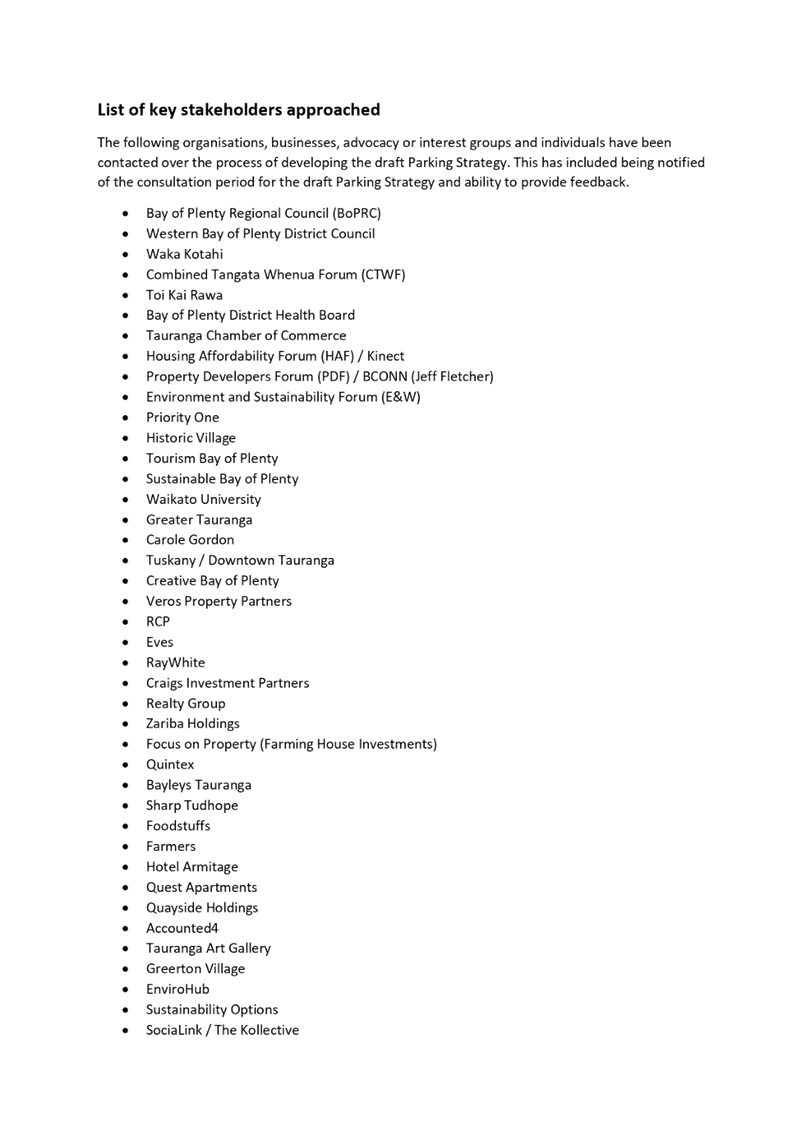
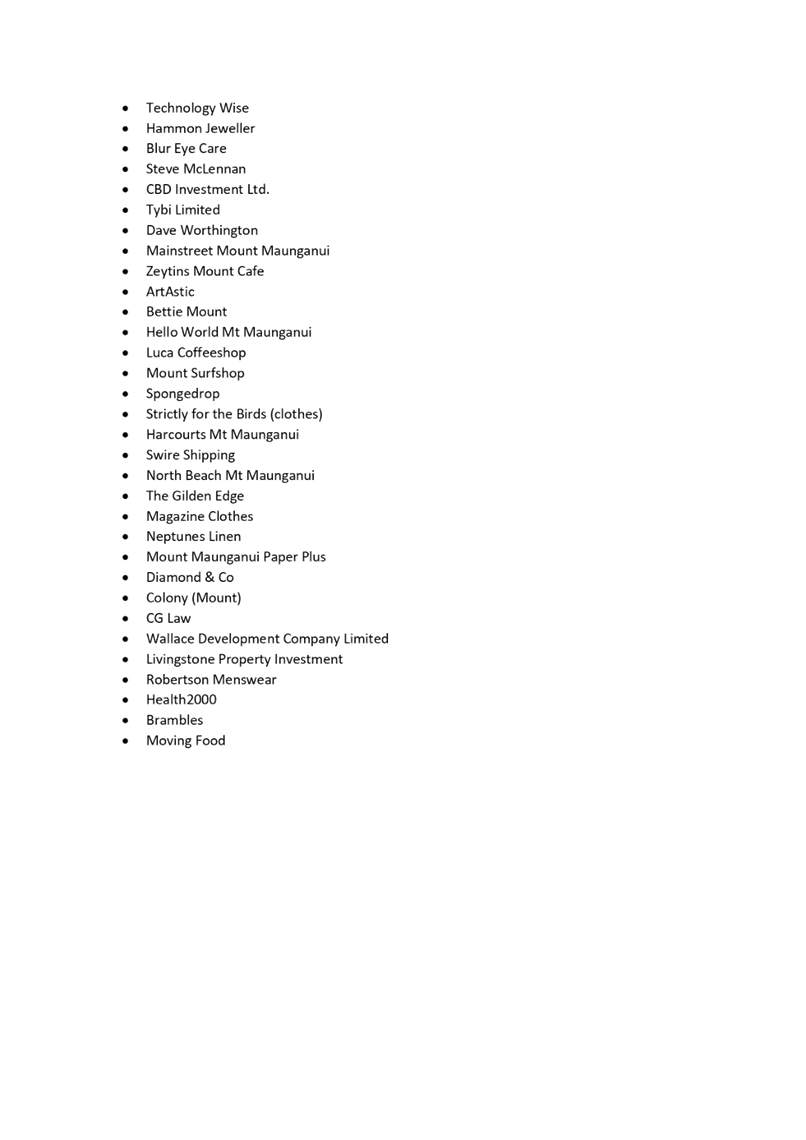
|
Ordinary Council meeting Agenda
|
15 November 2021
|
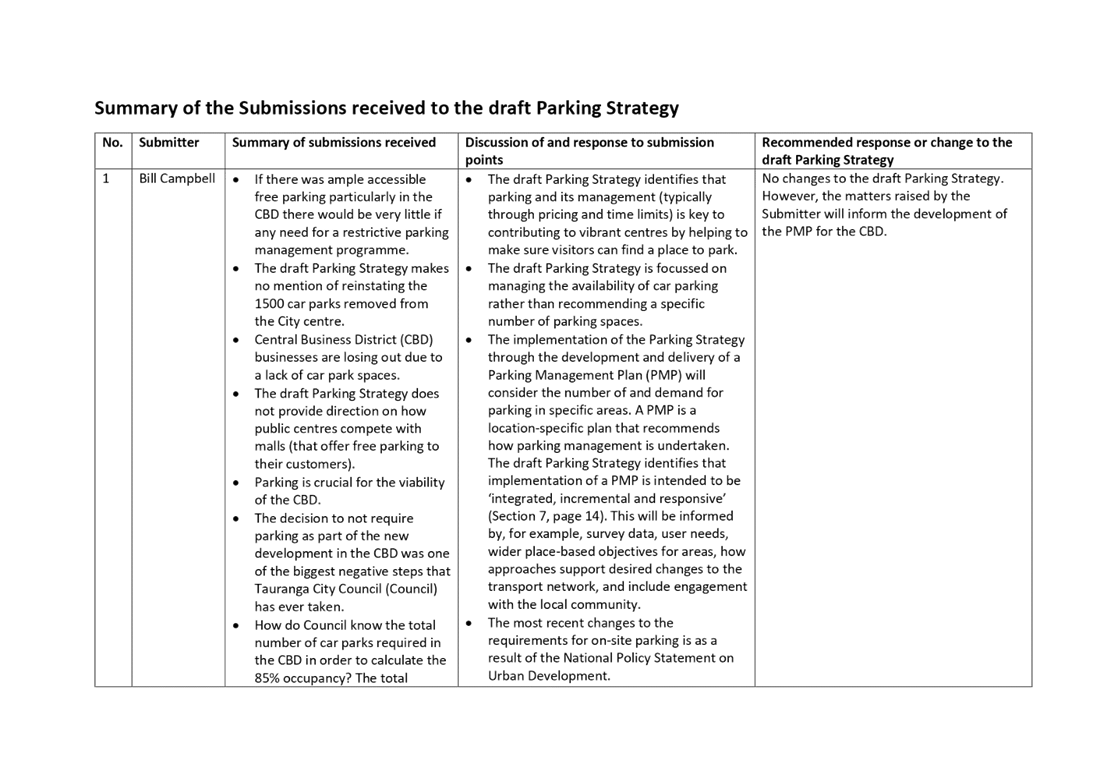
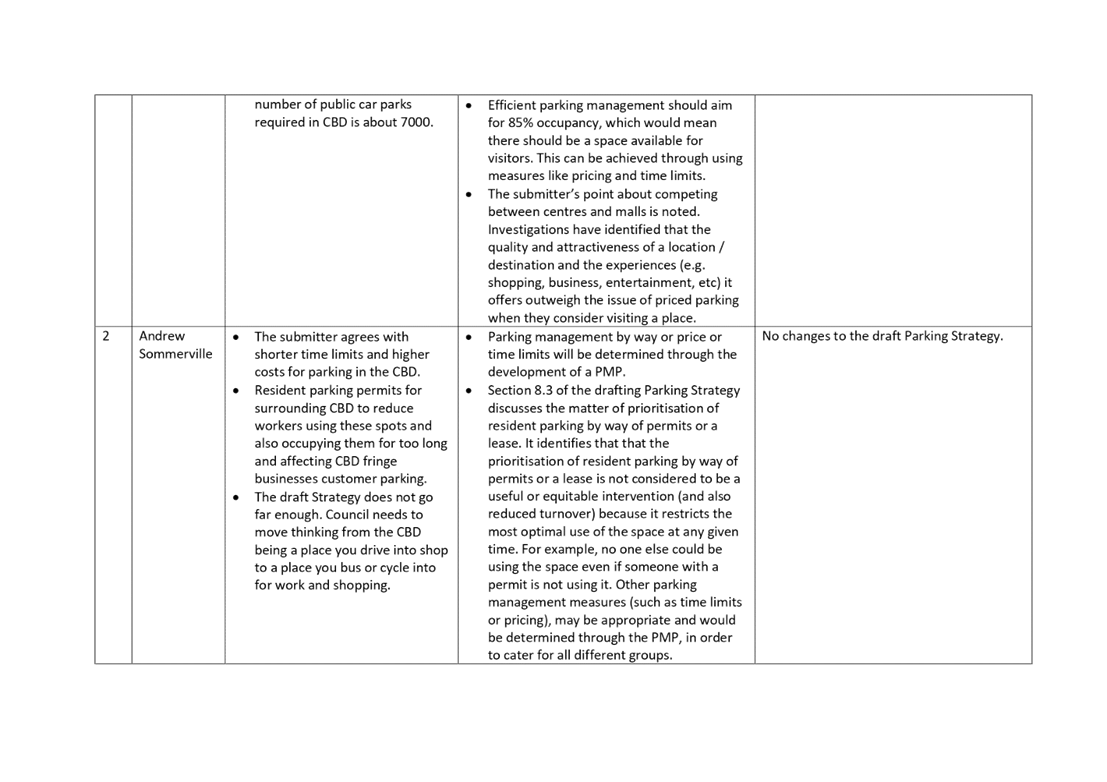
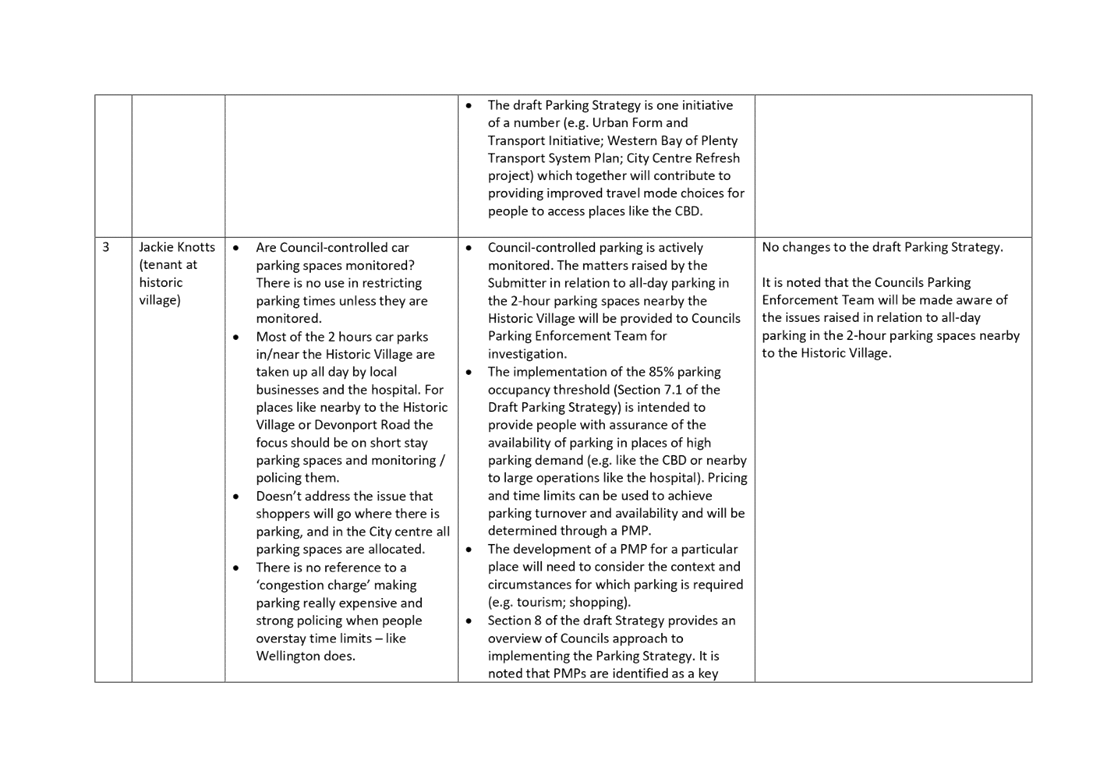
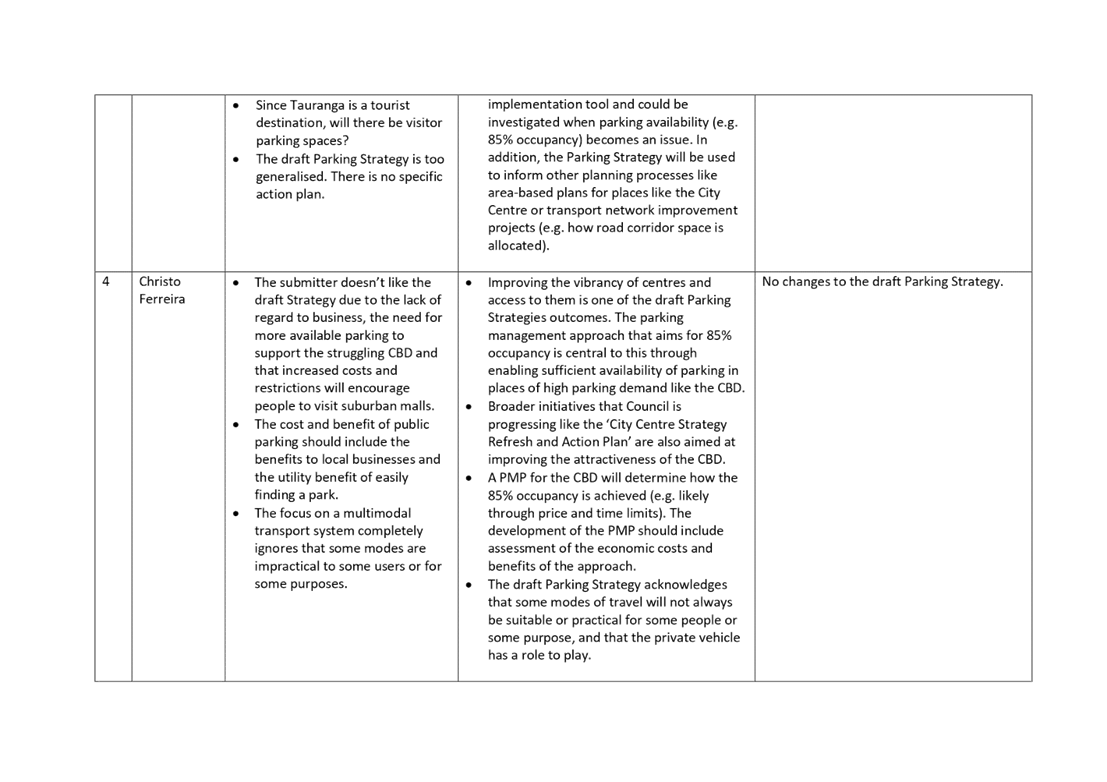
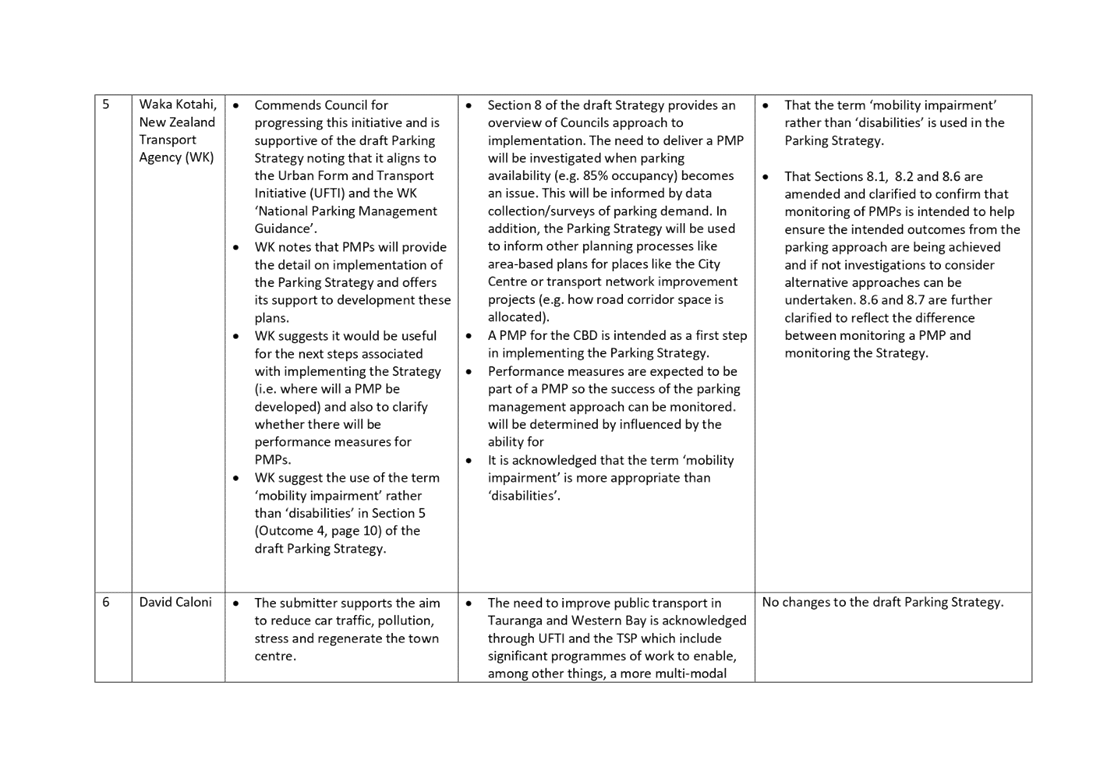
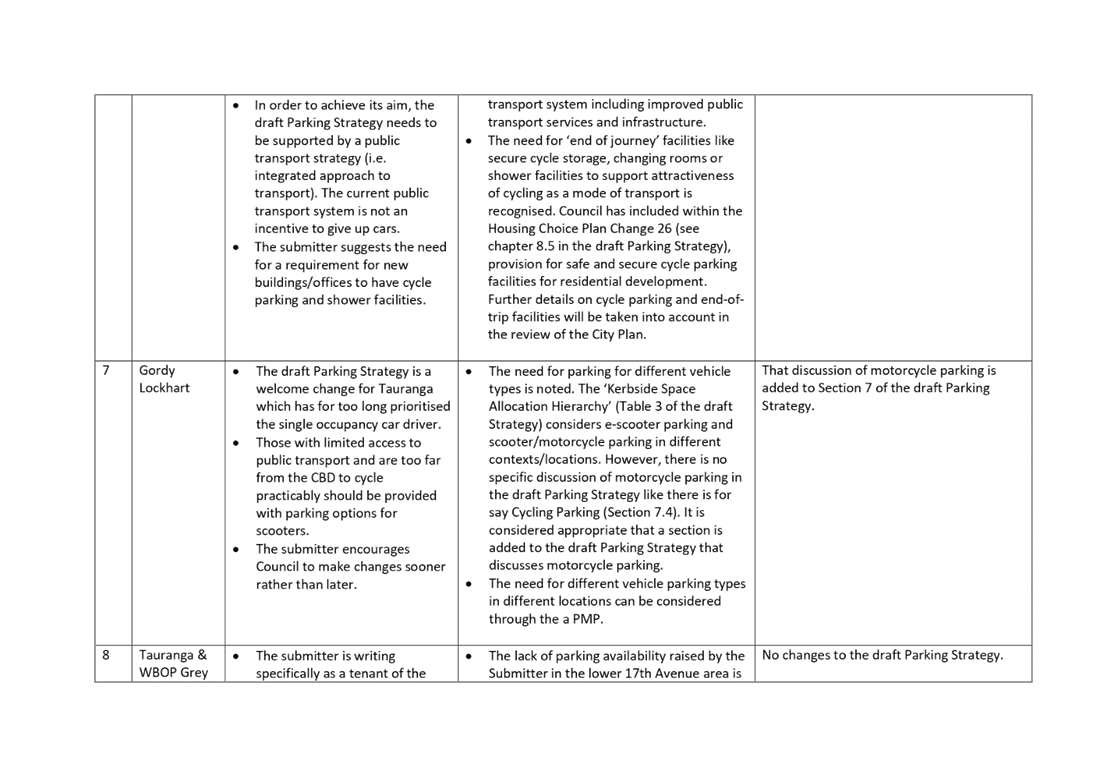
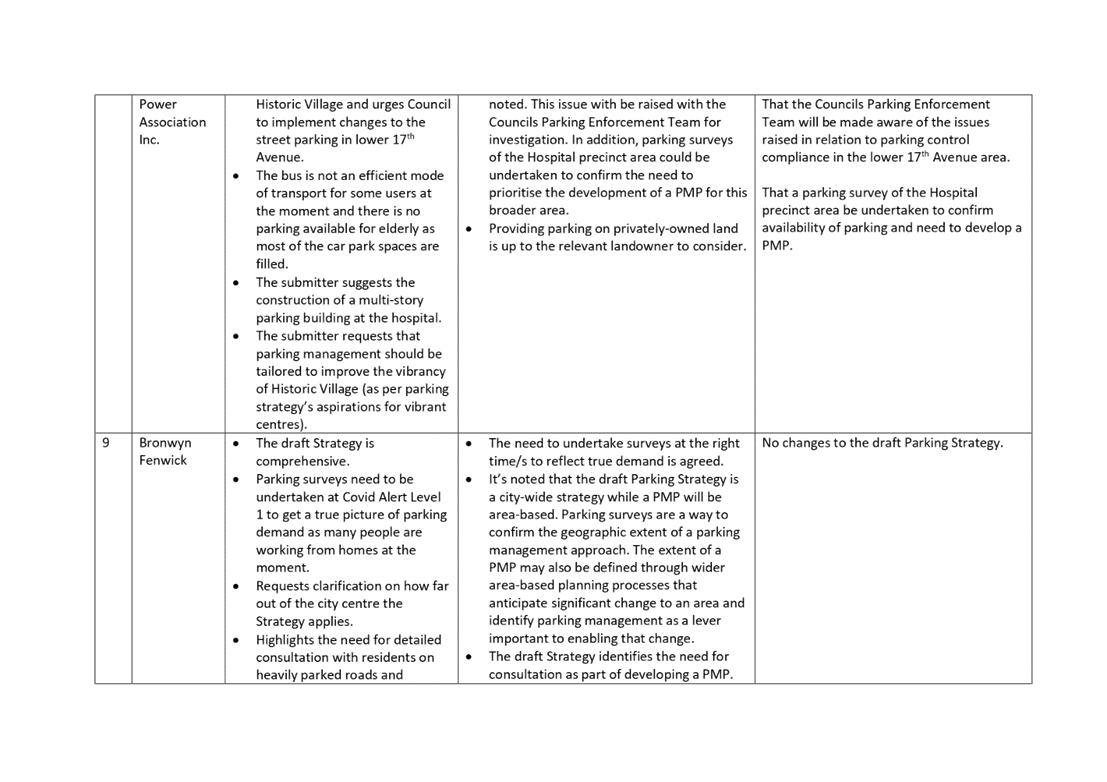

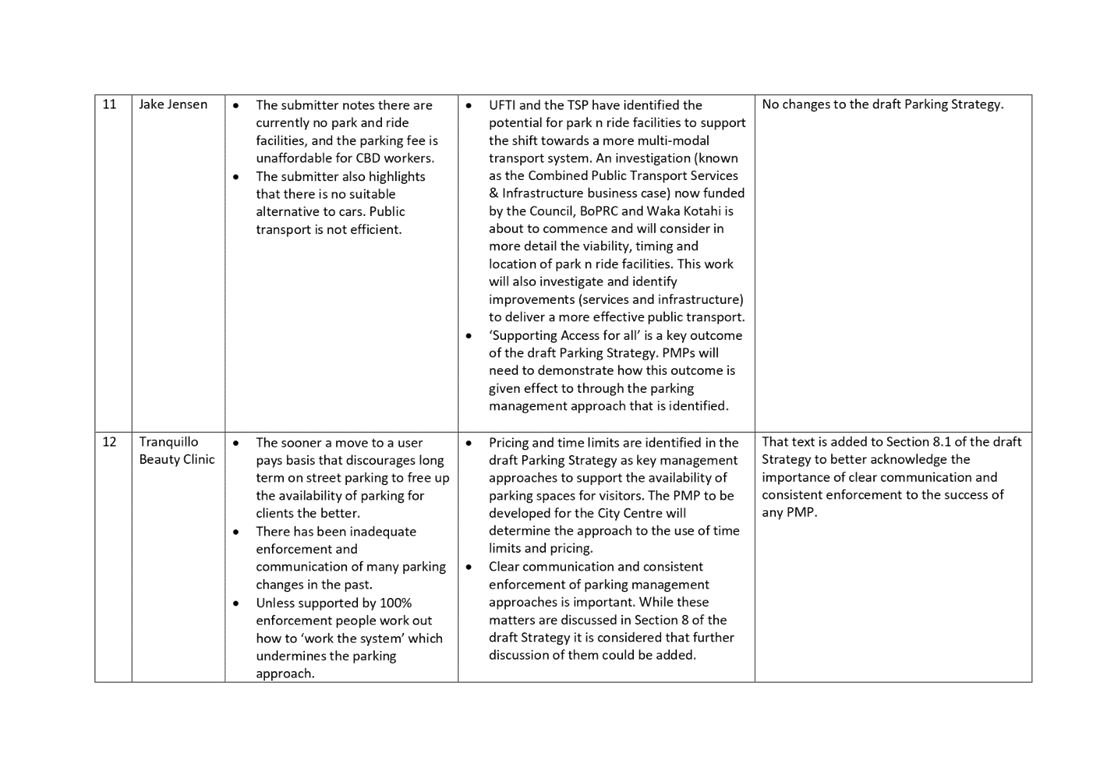
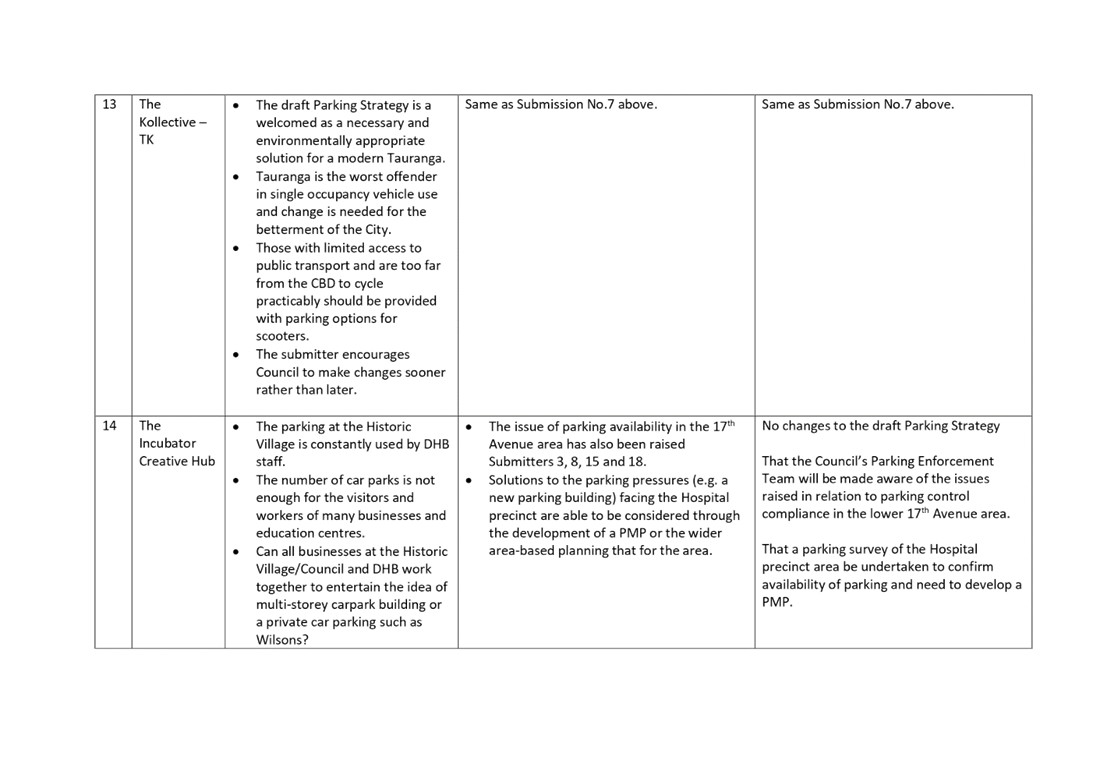
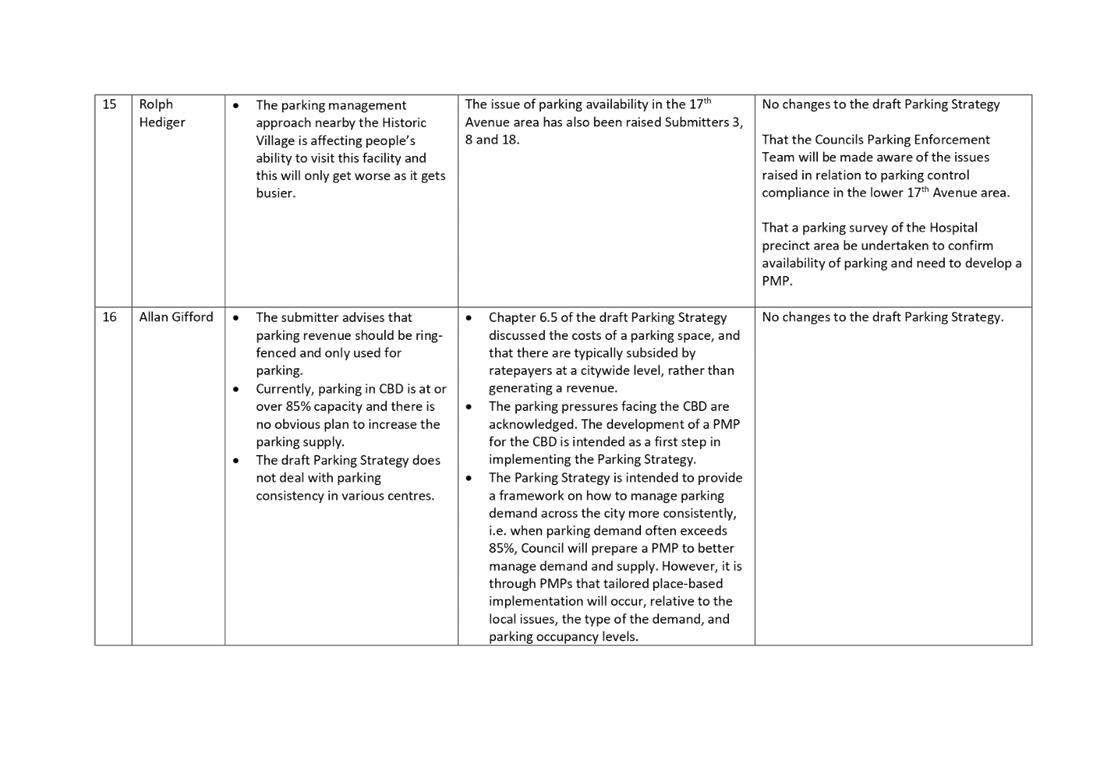
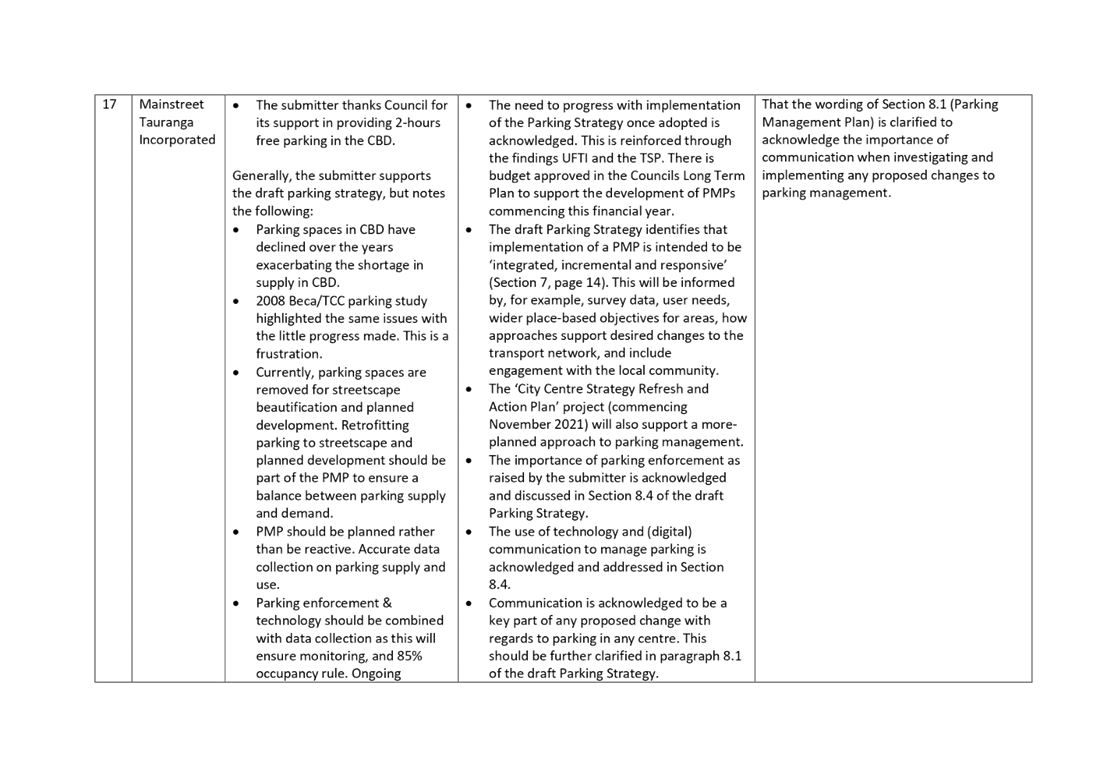
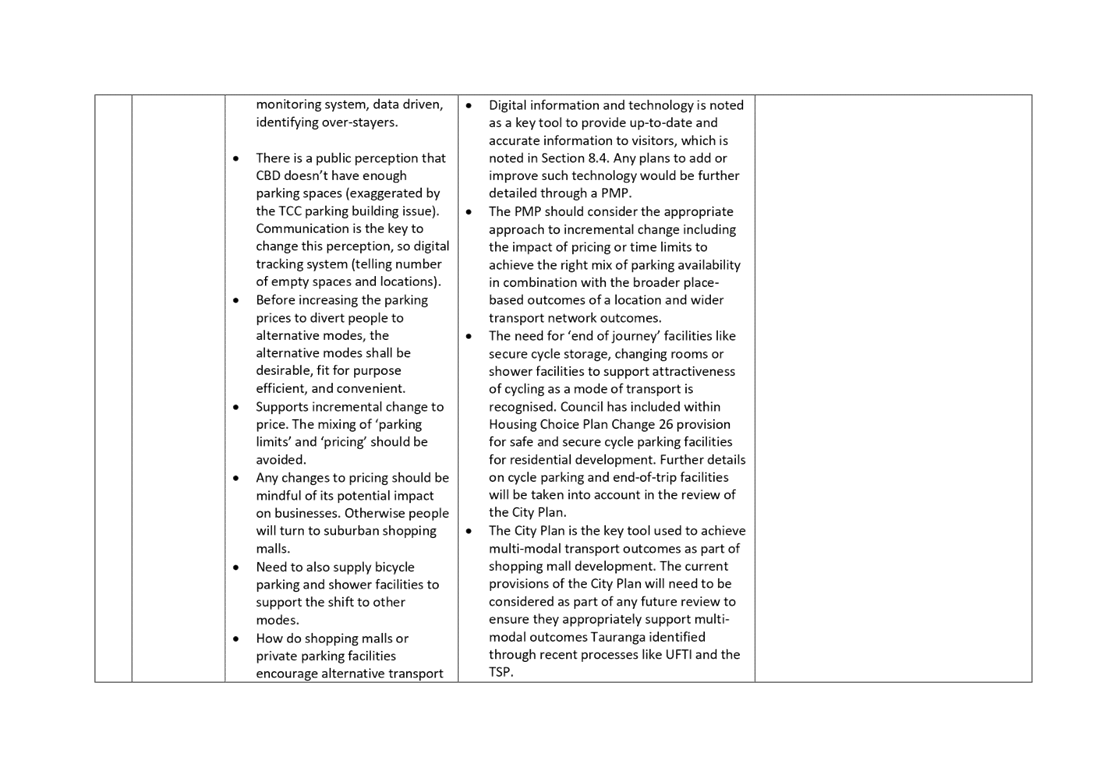
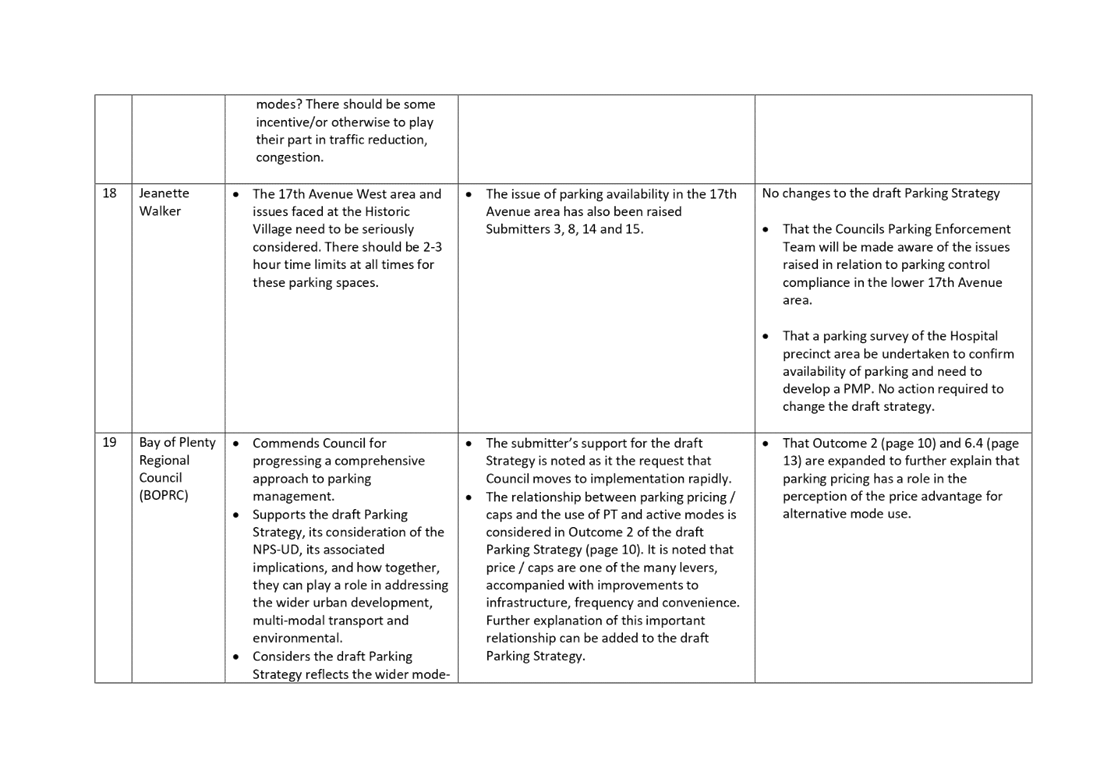
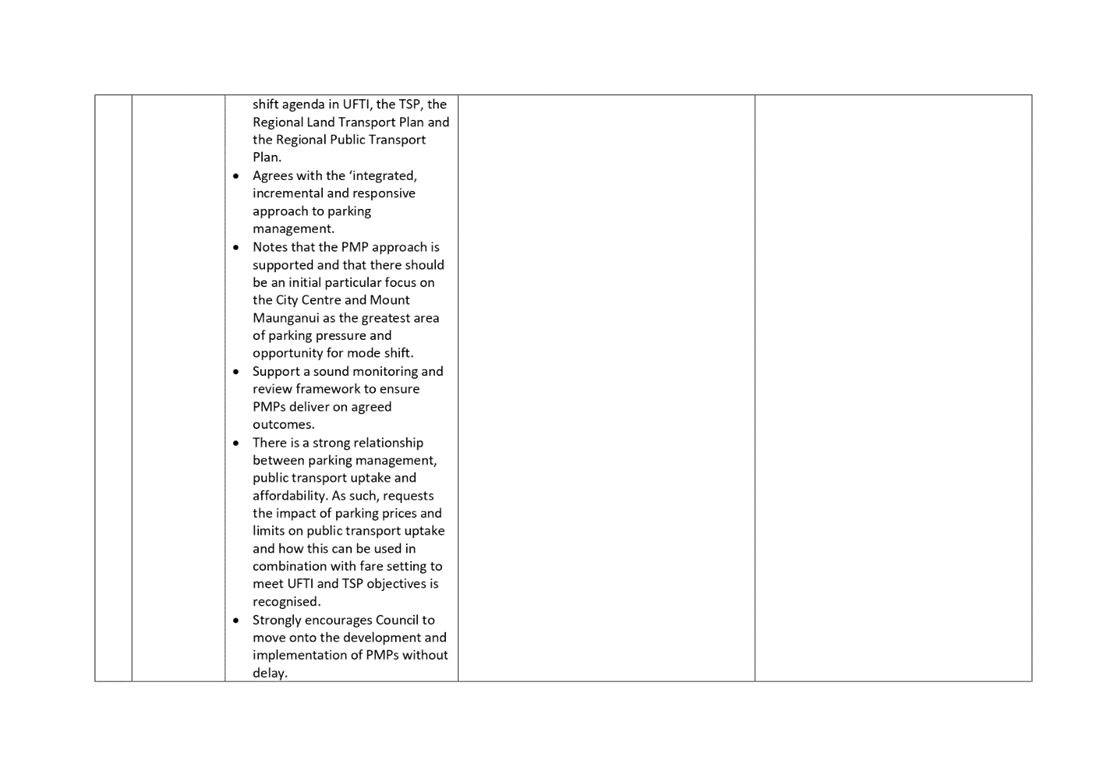
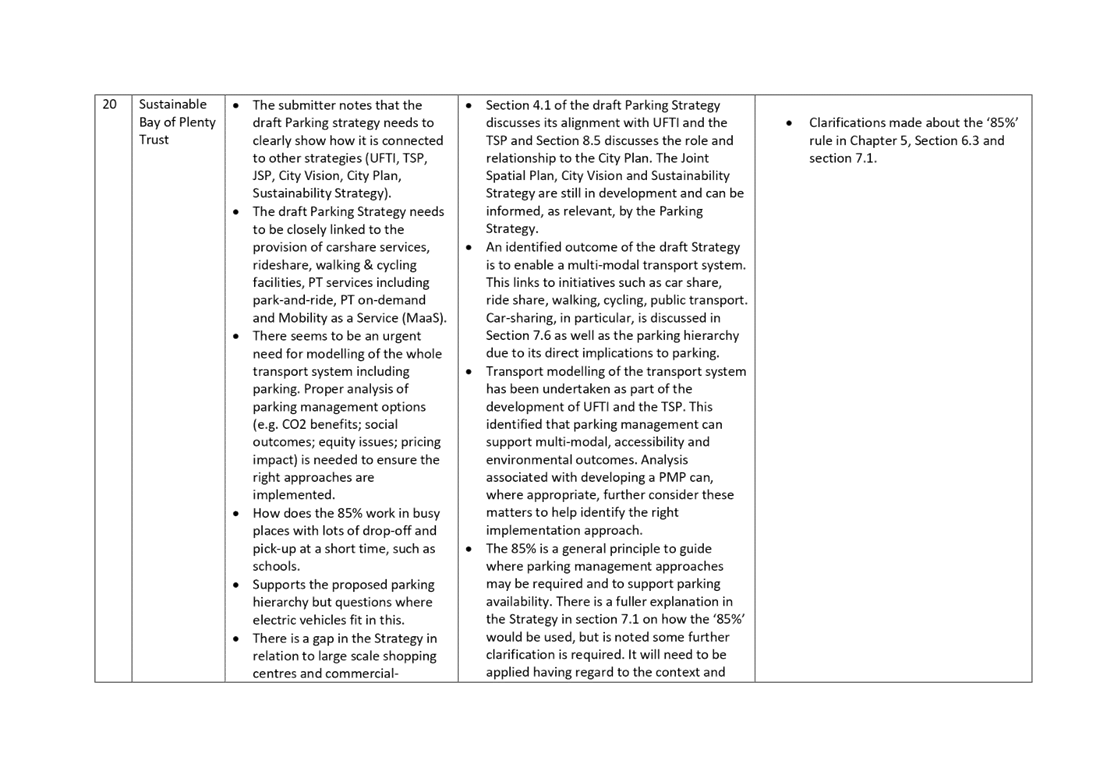
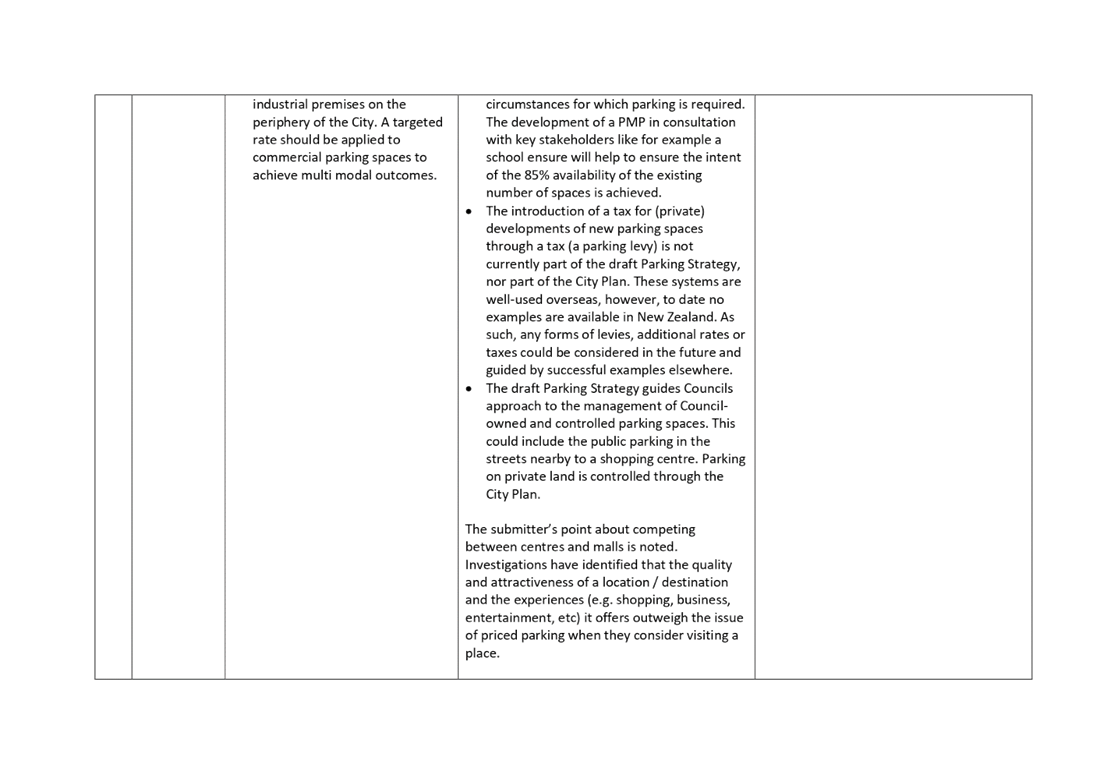
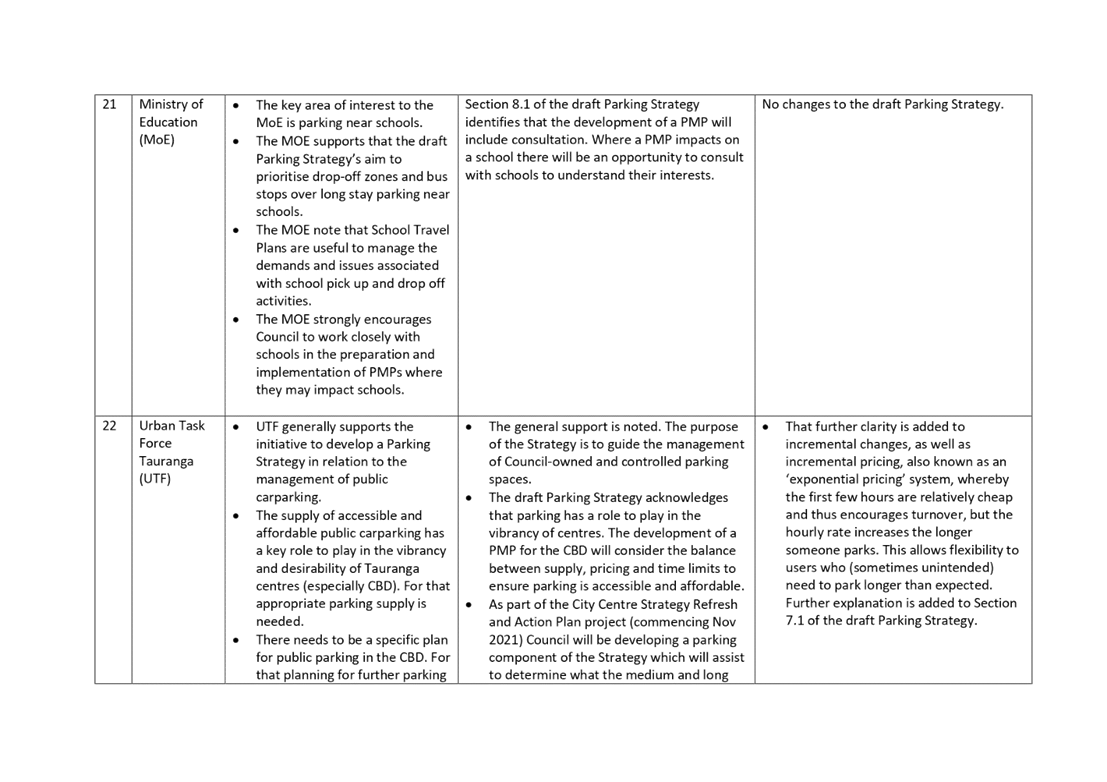
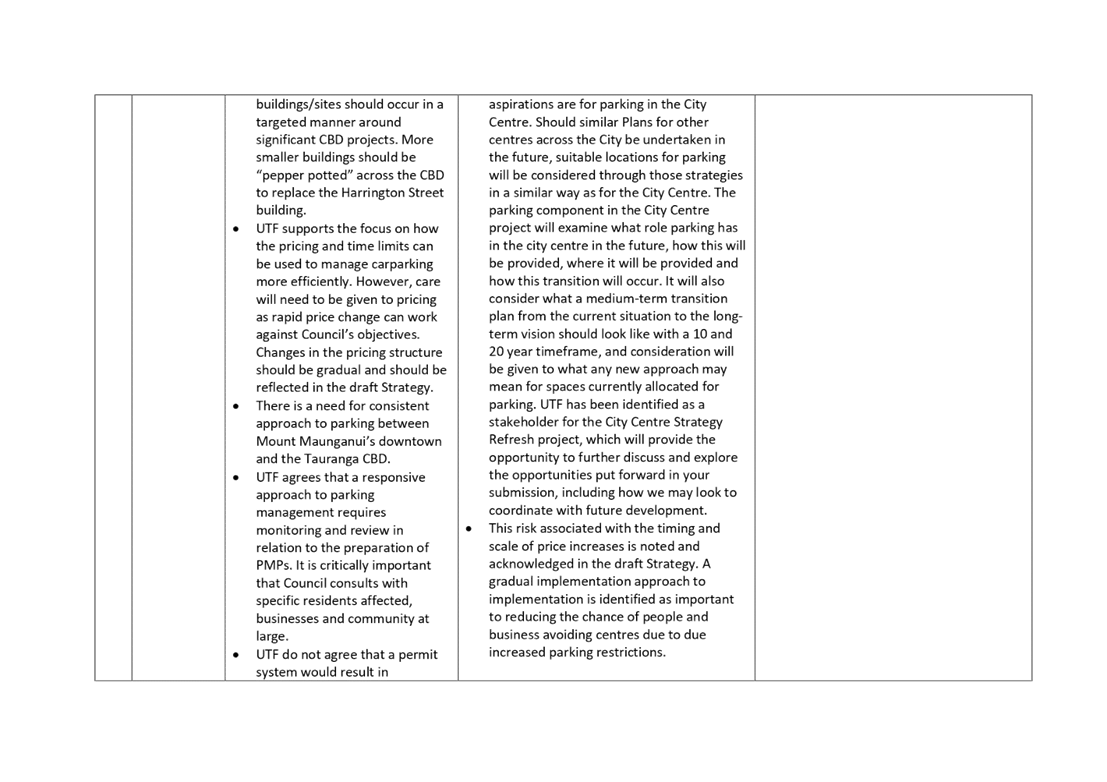
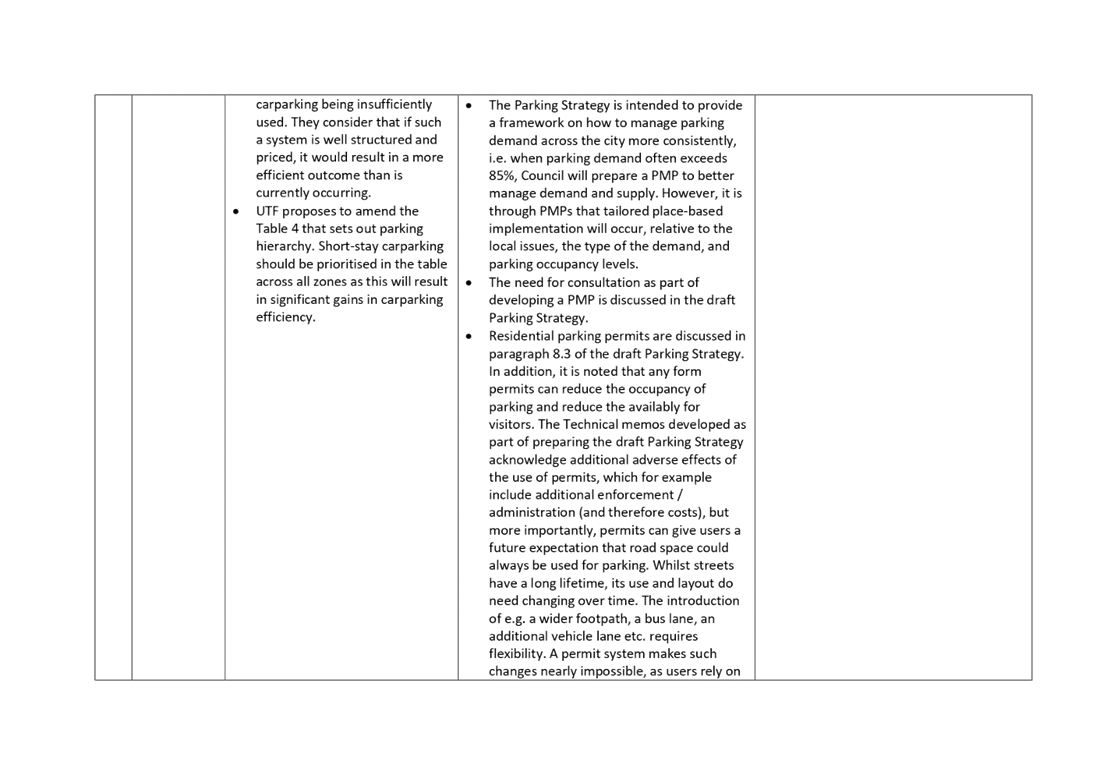
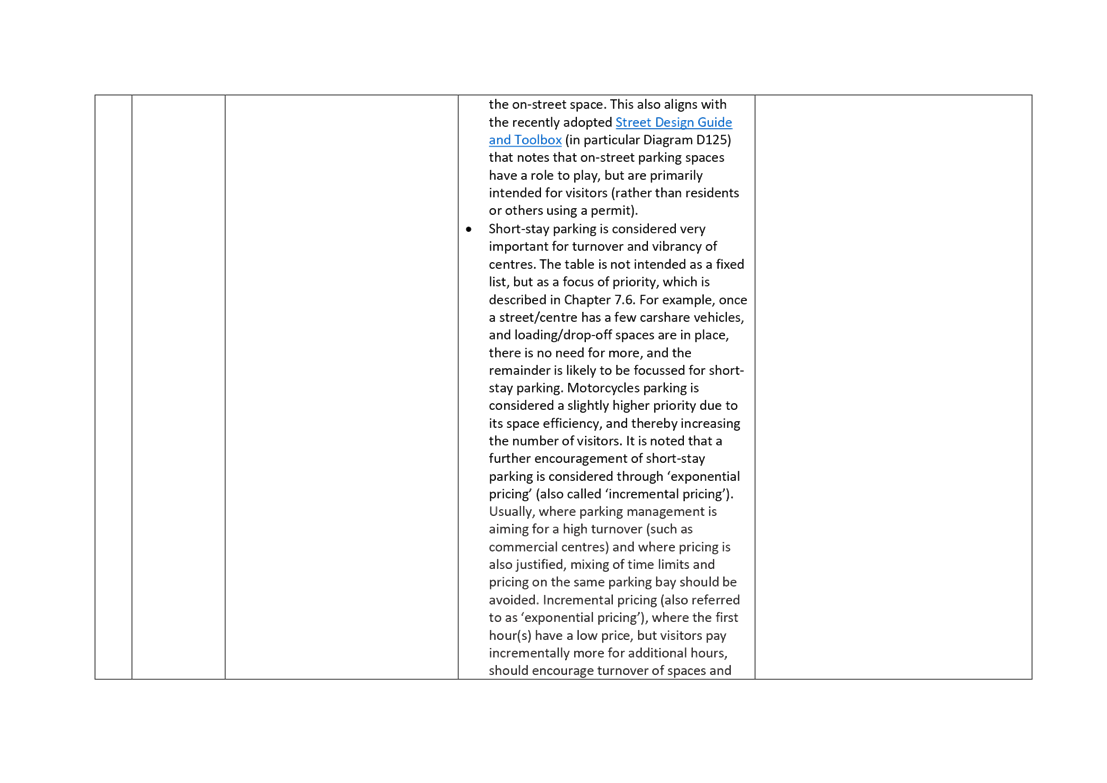
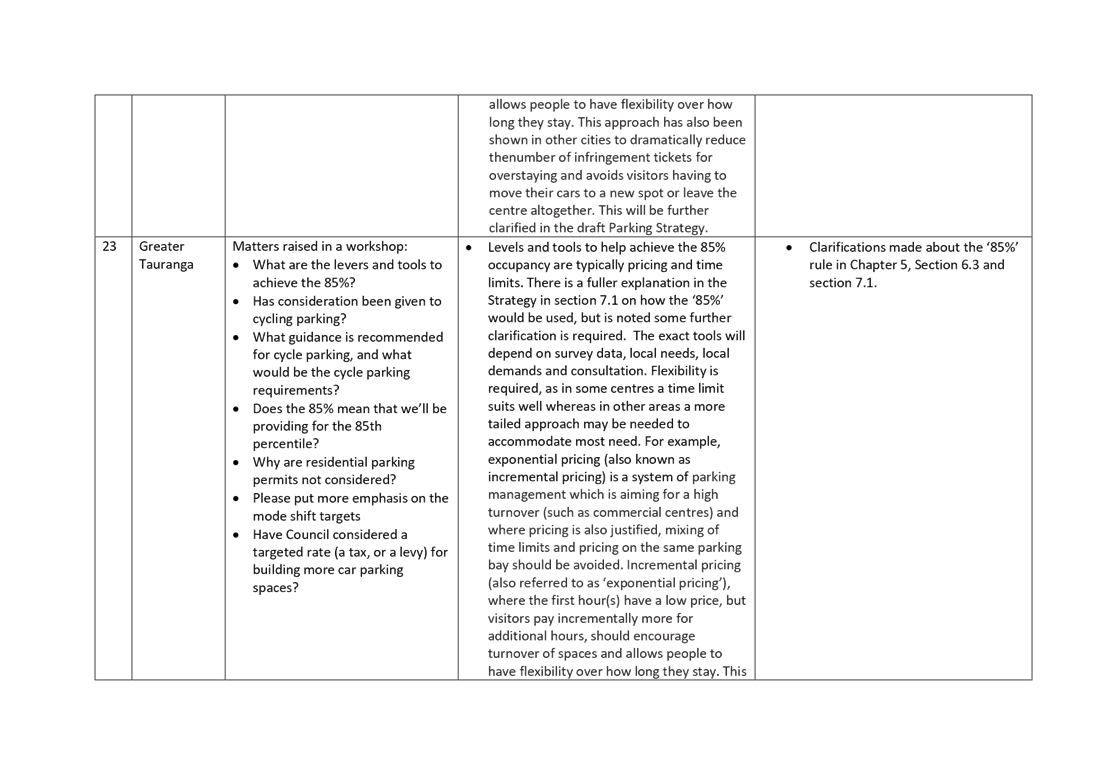
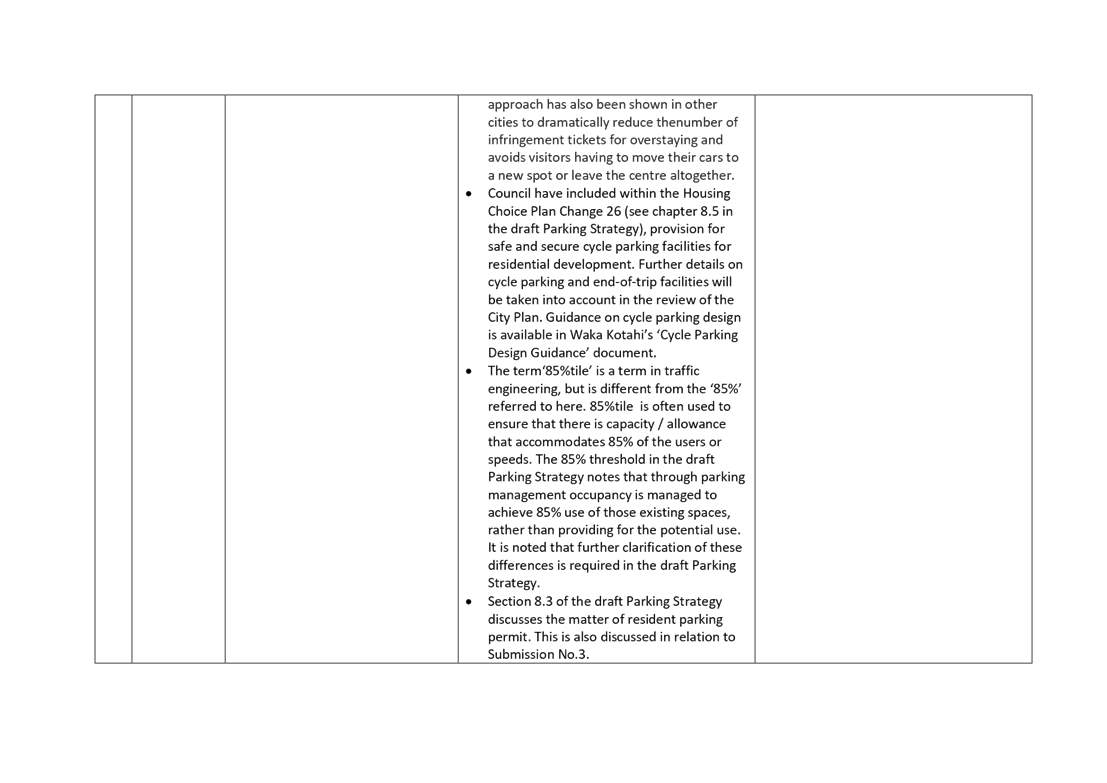
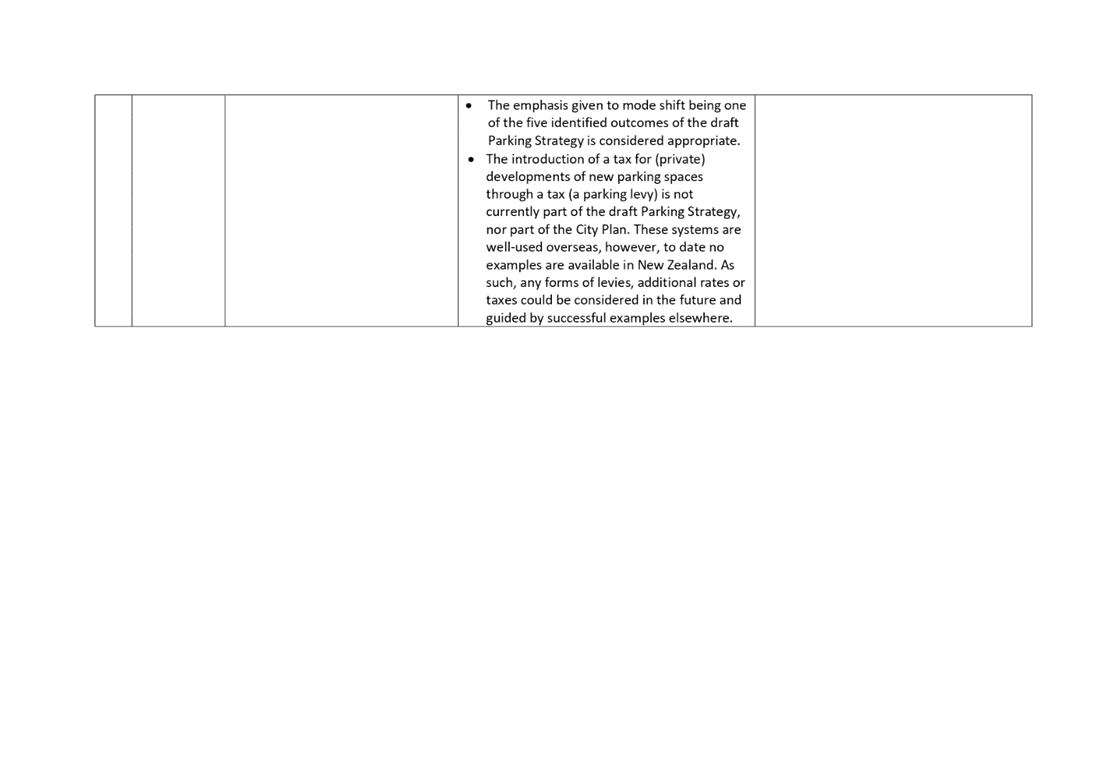
|
Ordinary Council meeting Agenda
|
15 November 2021
|
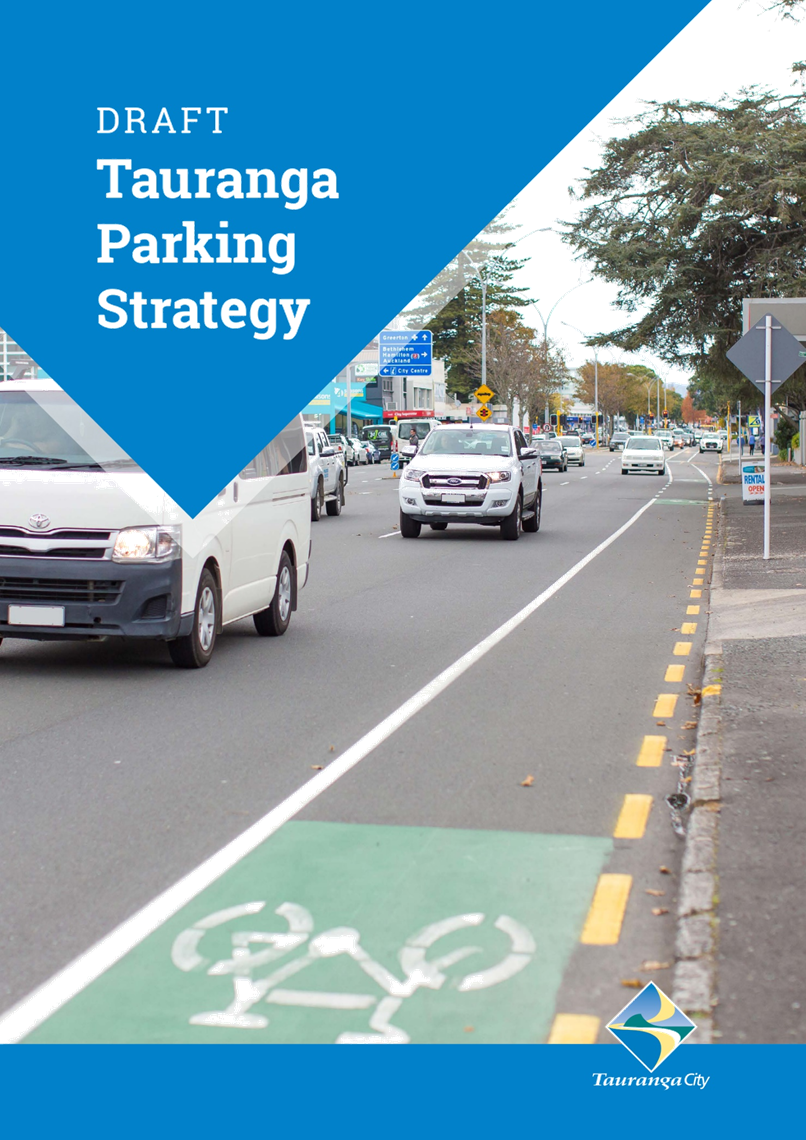
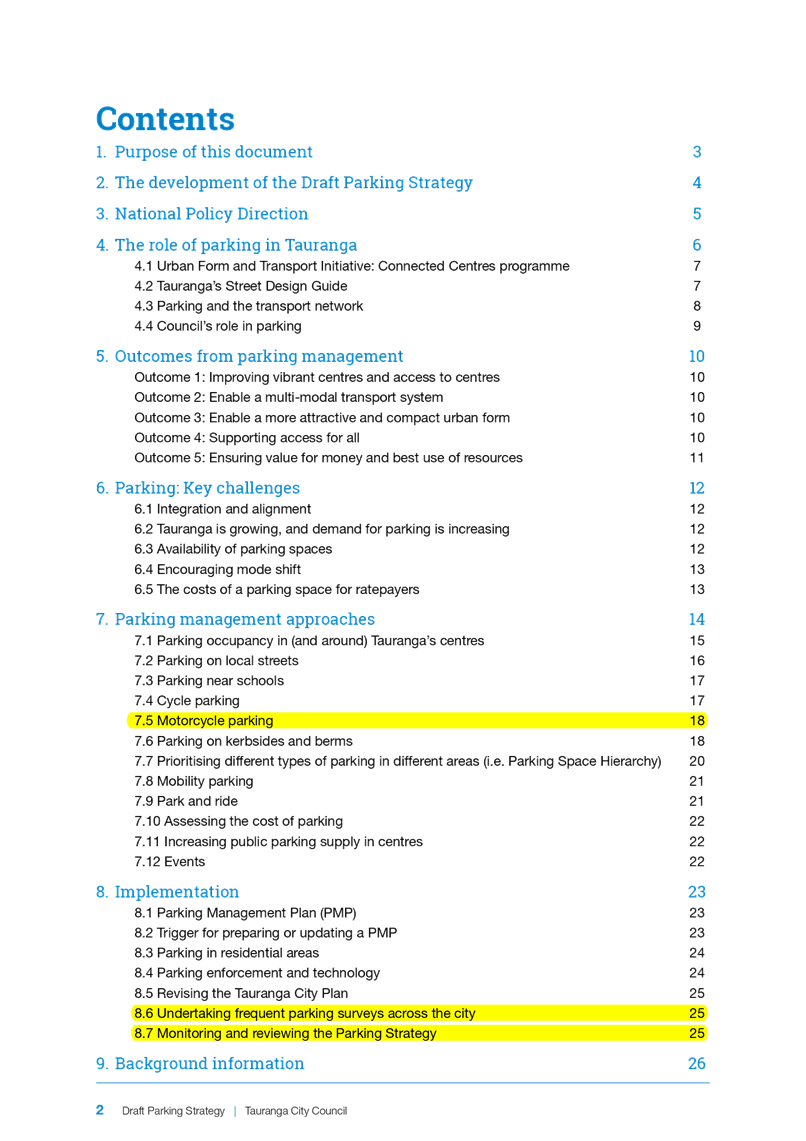
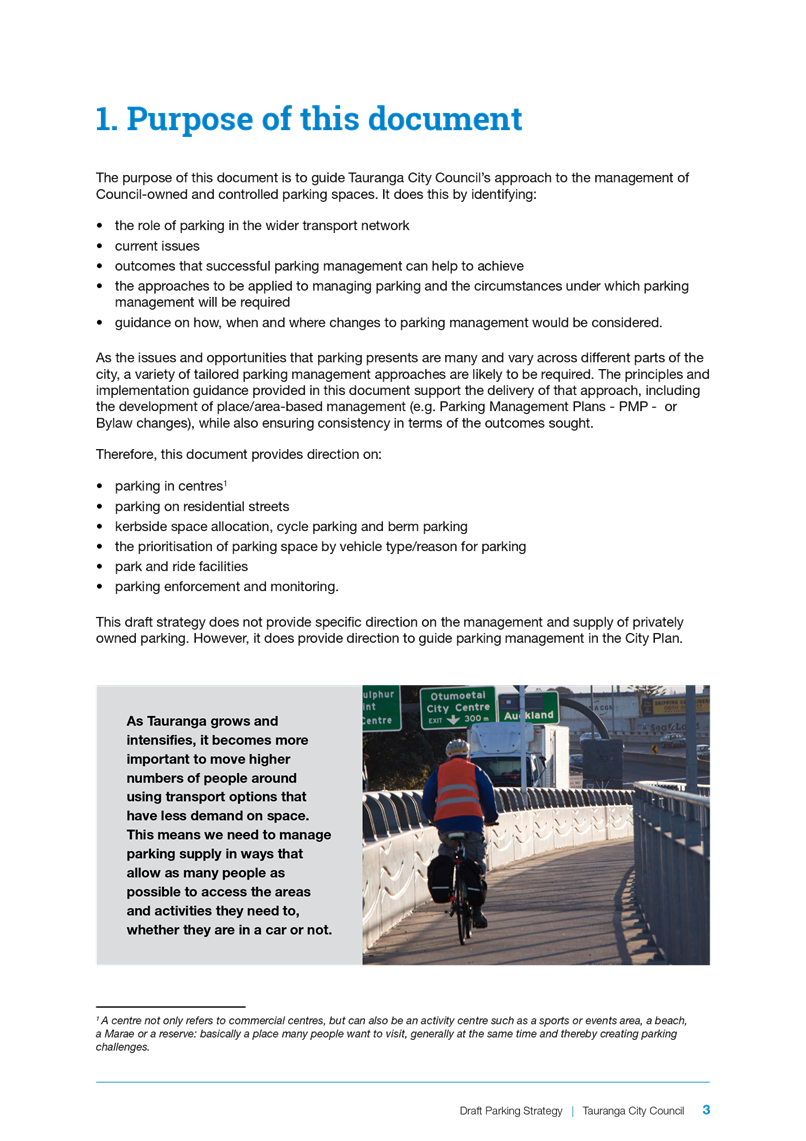
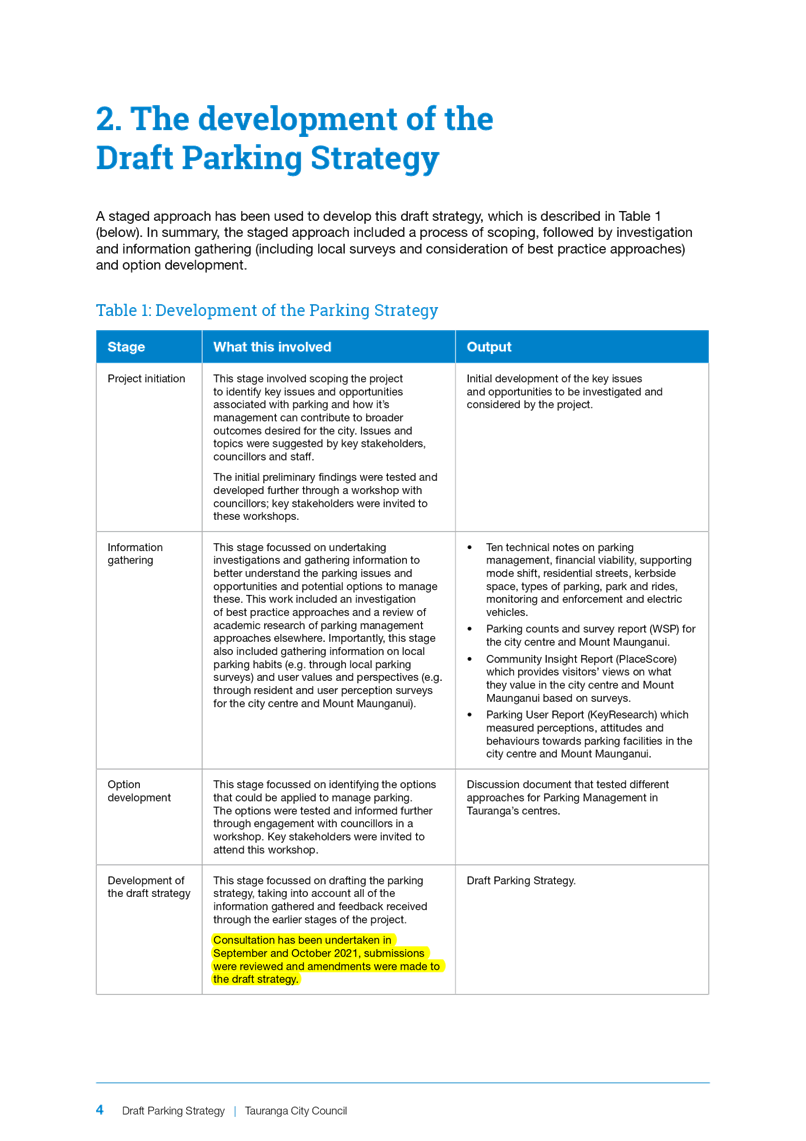
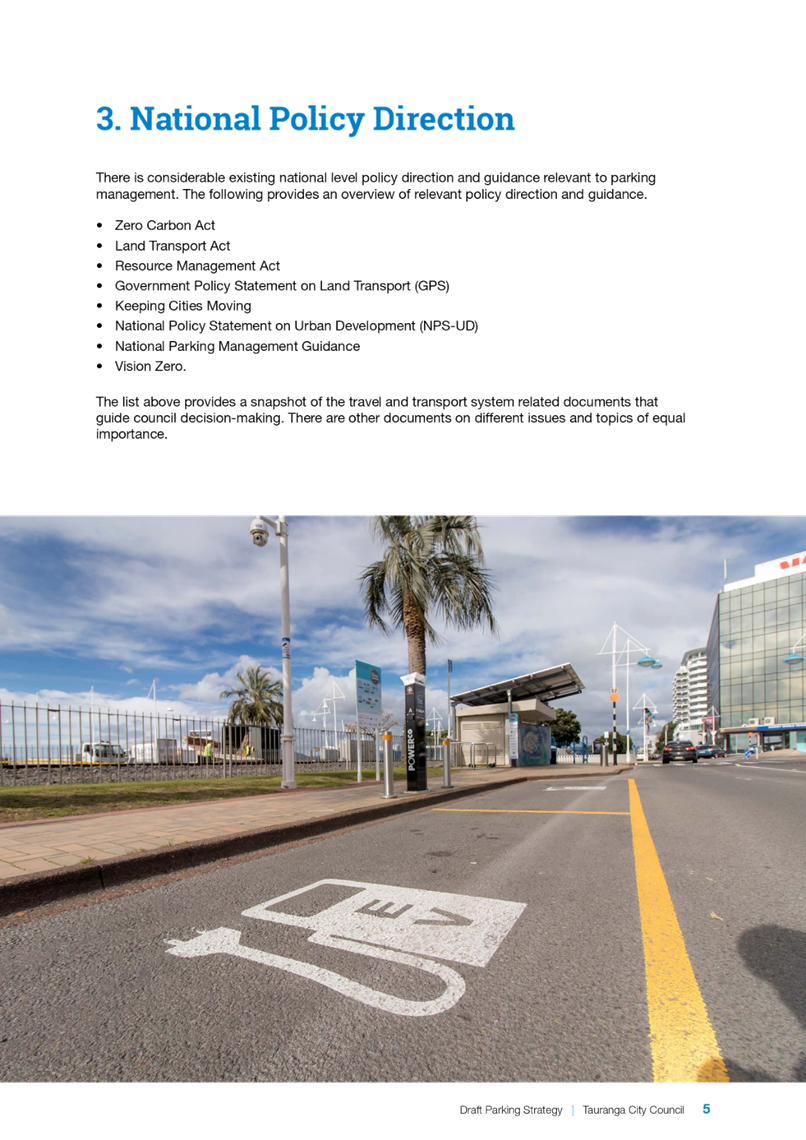
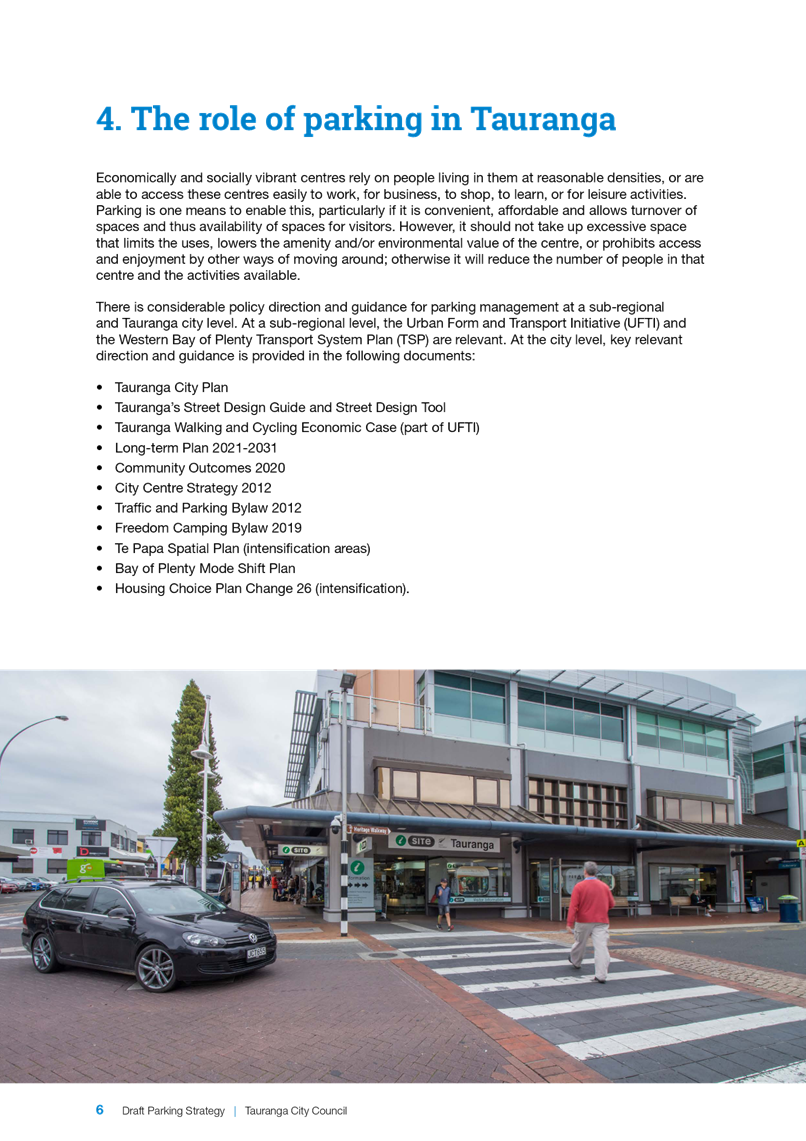
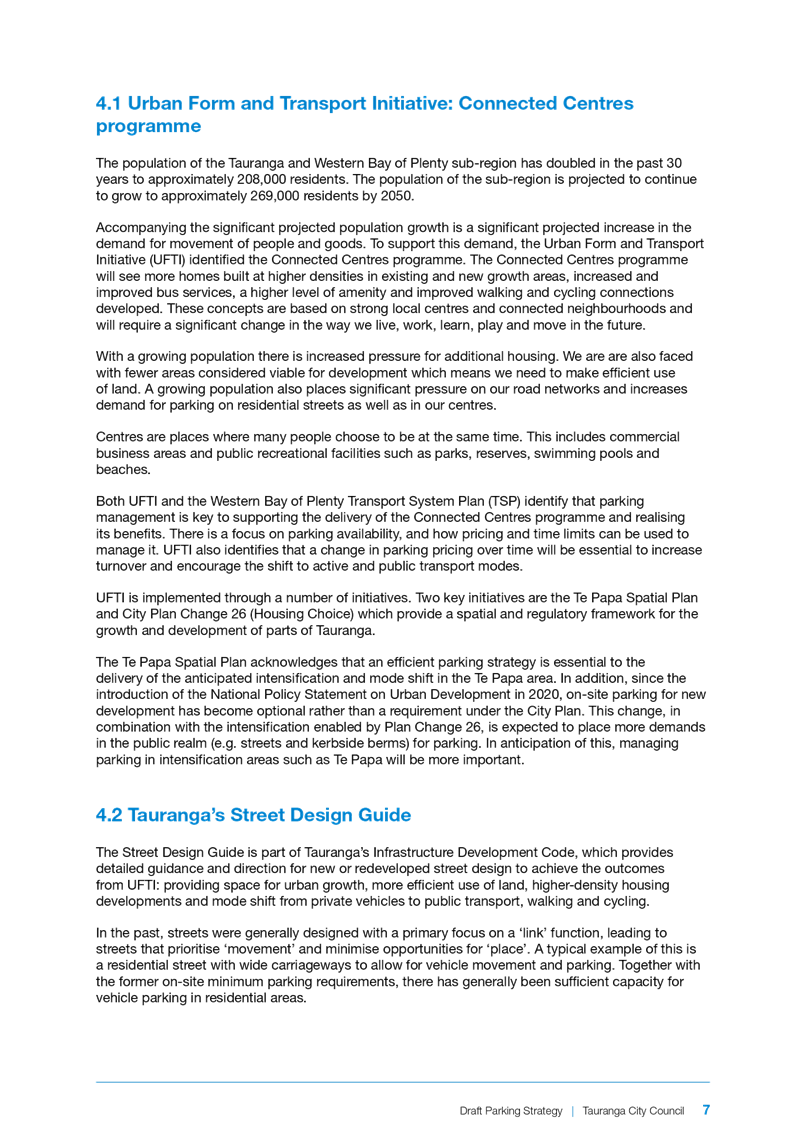
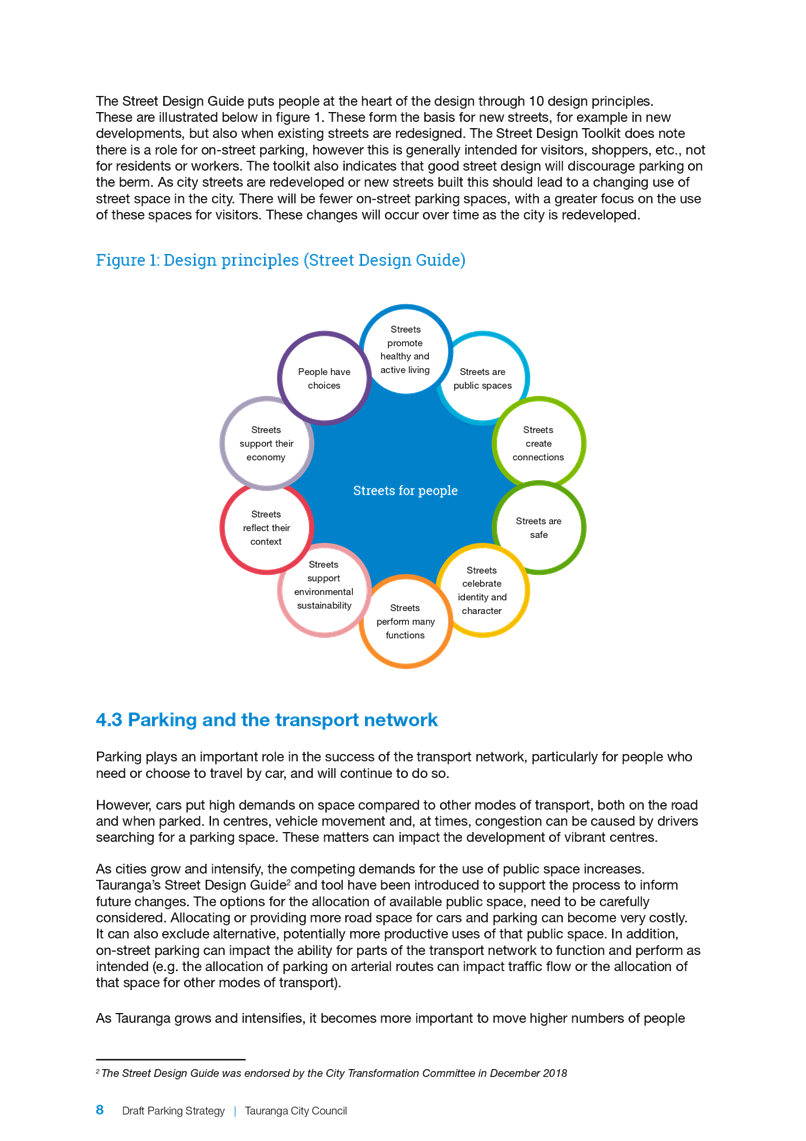
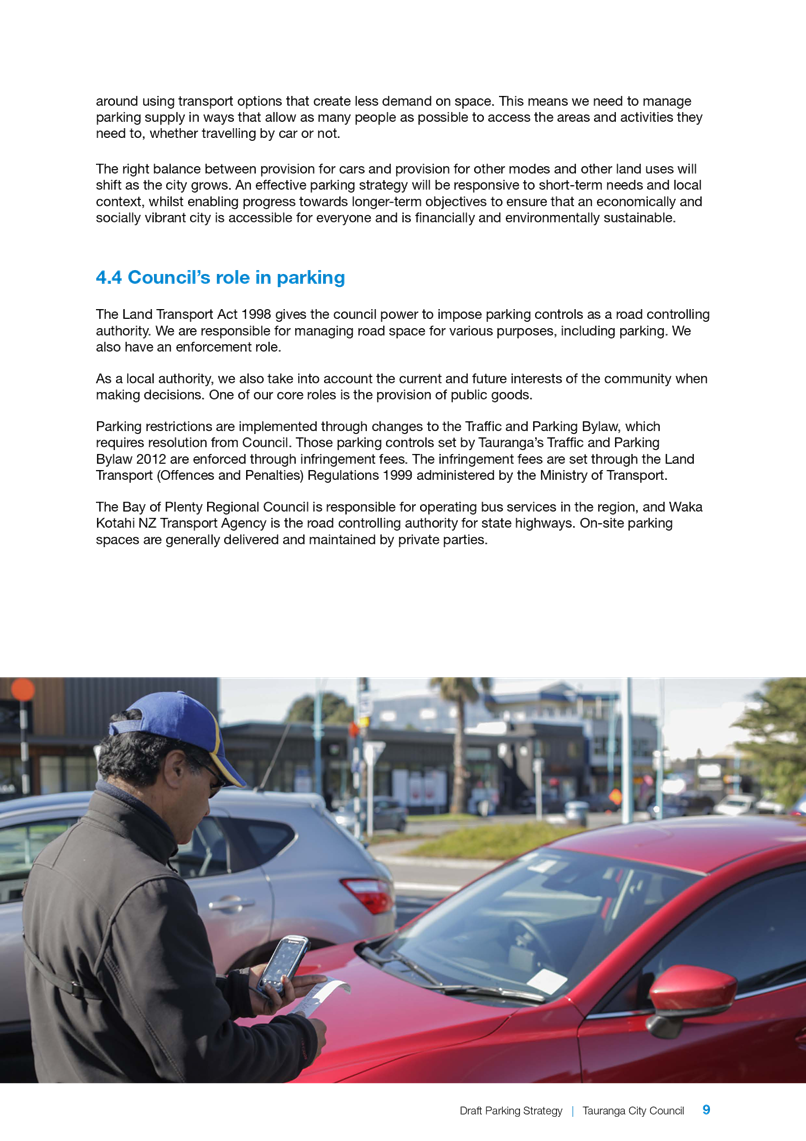
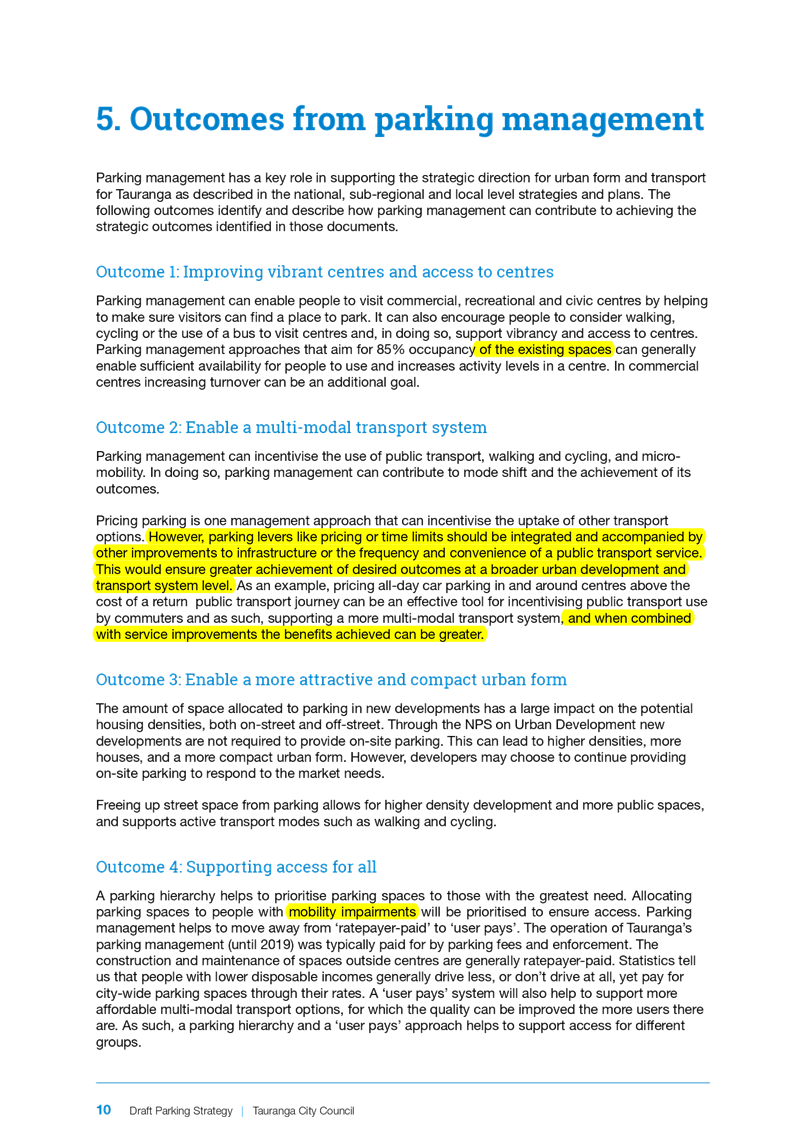
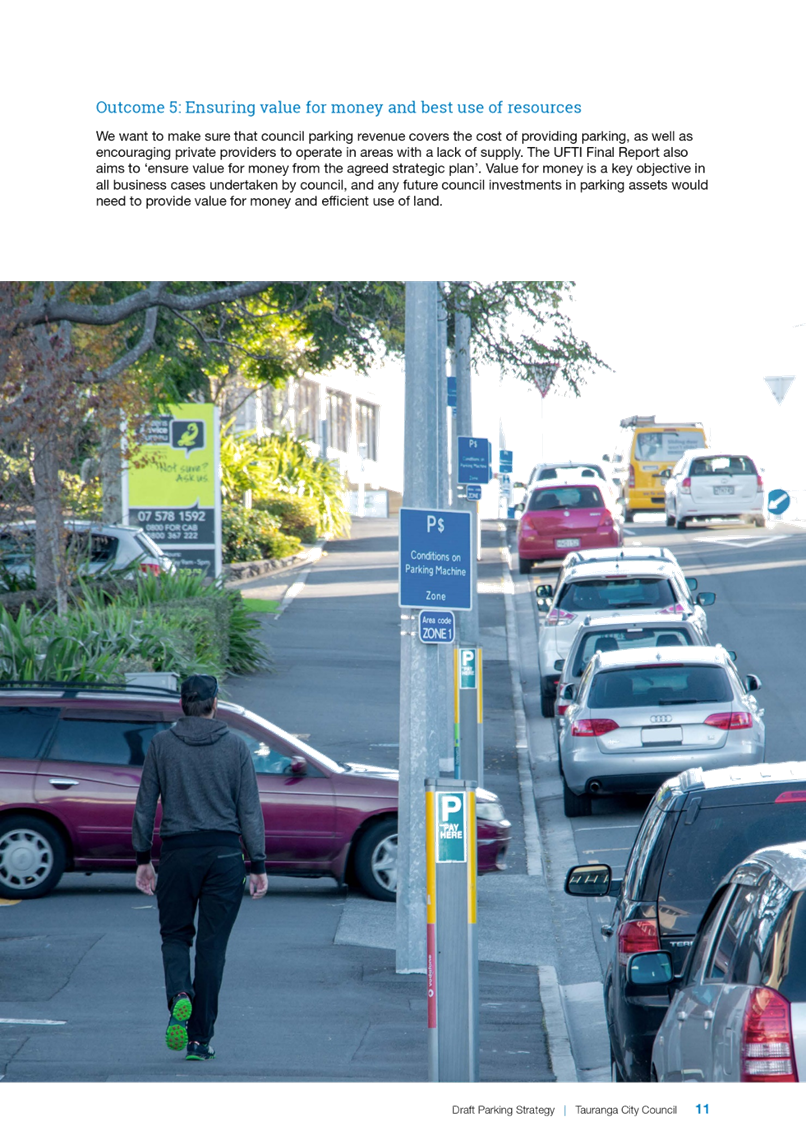
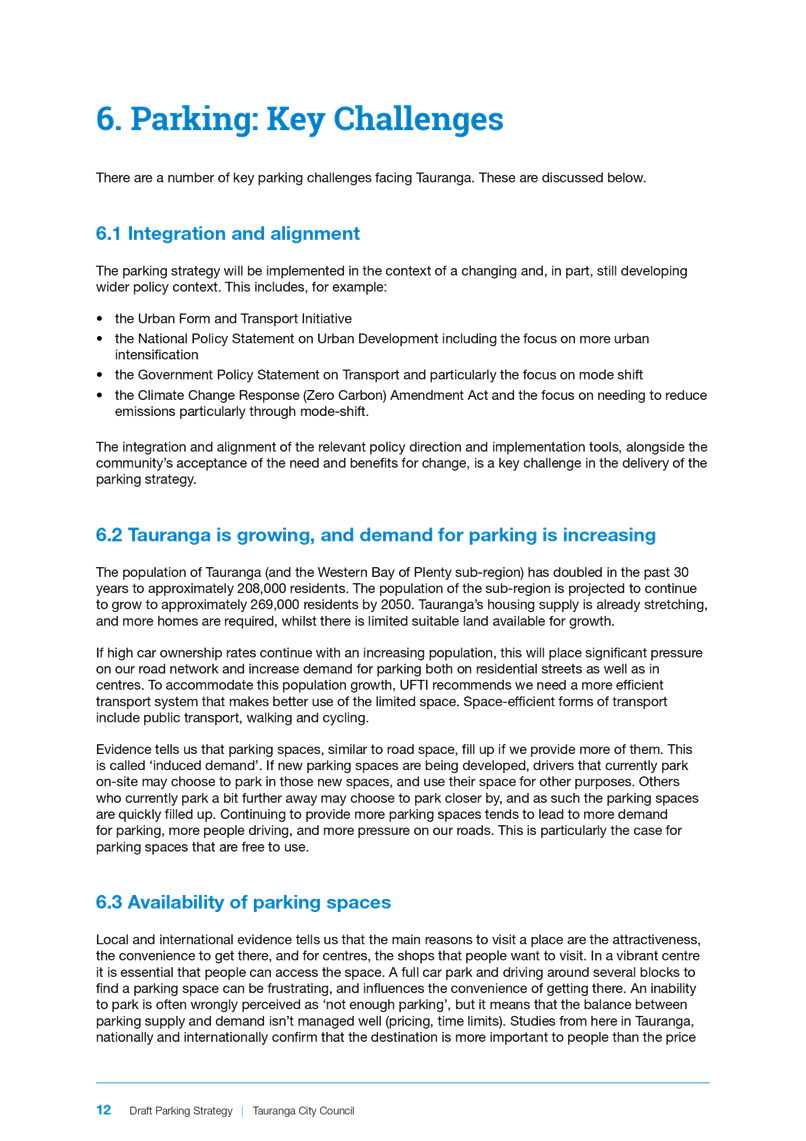
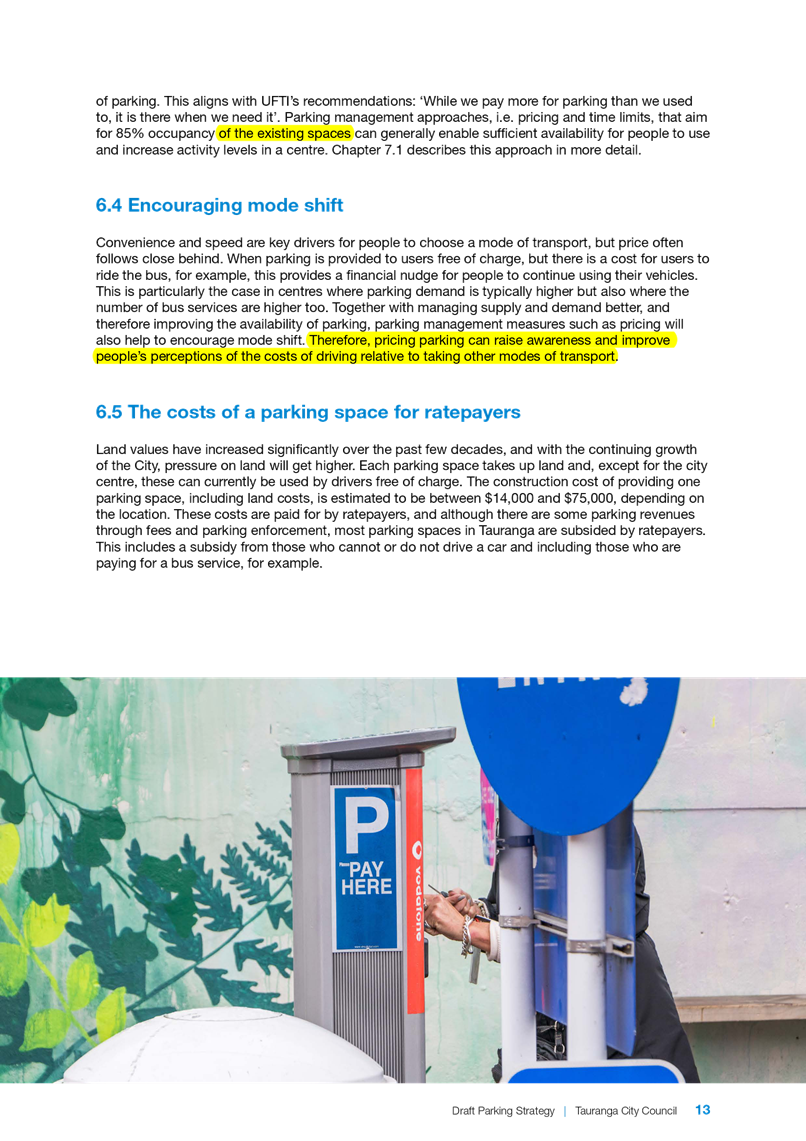
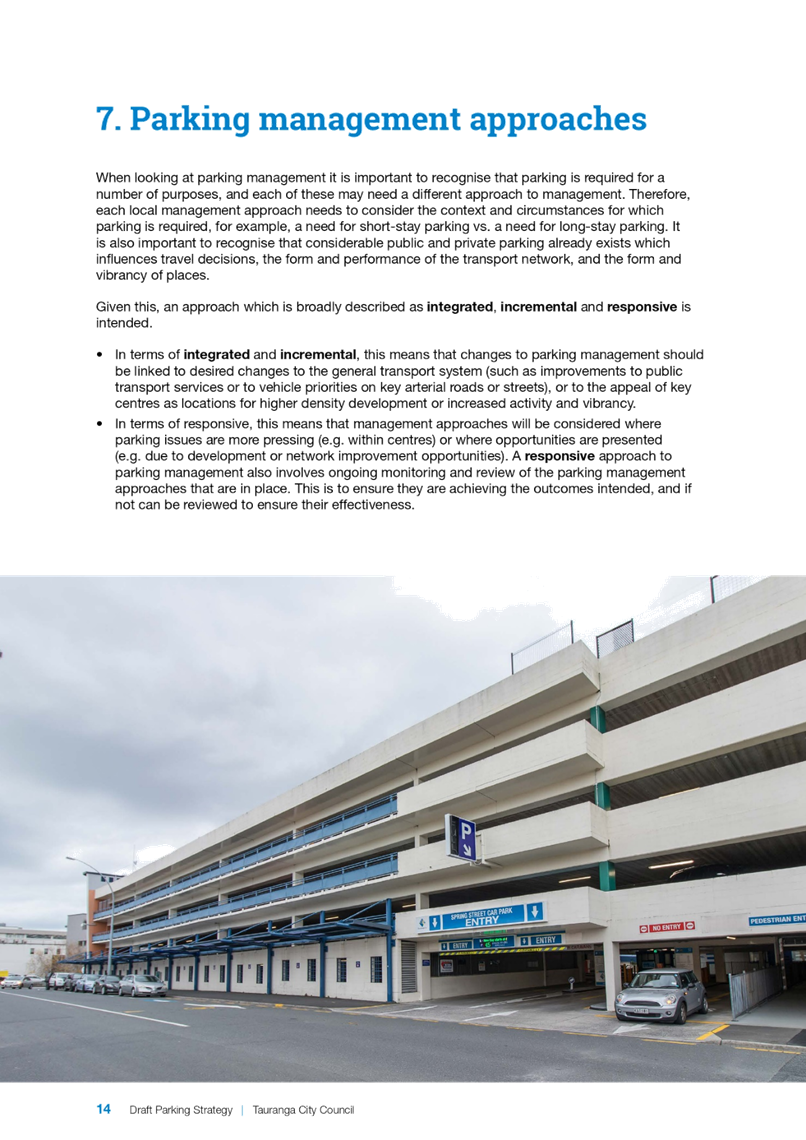
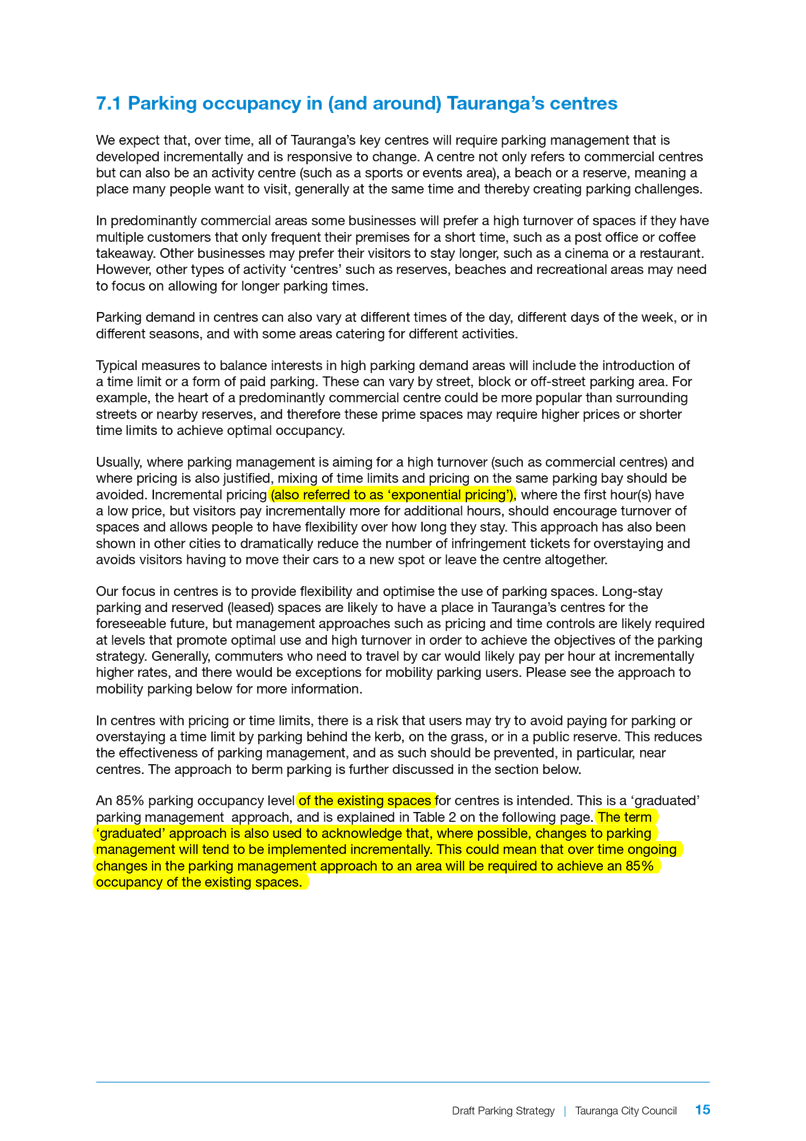
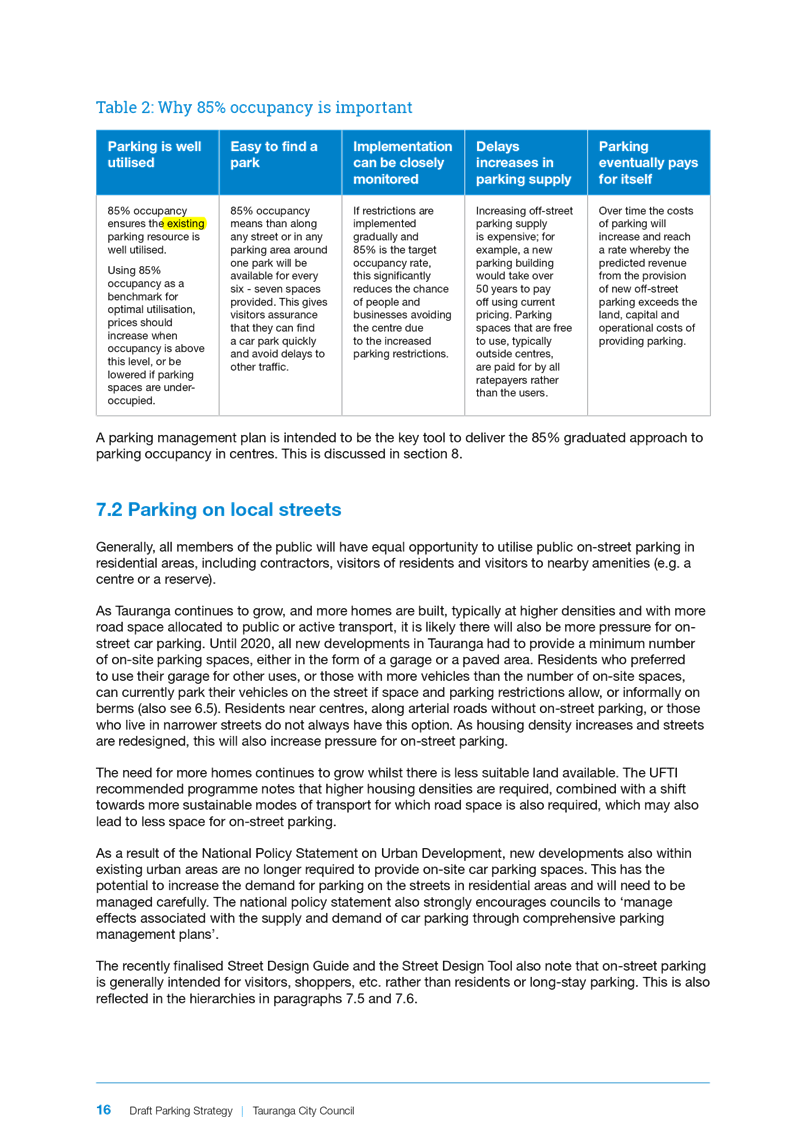
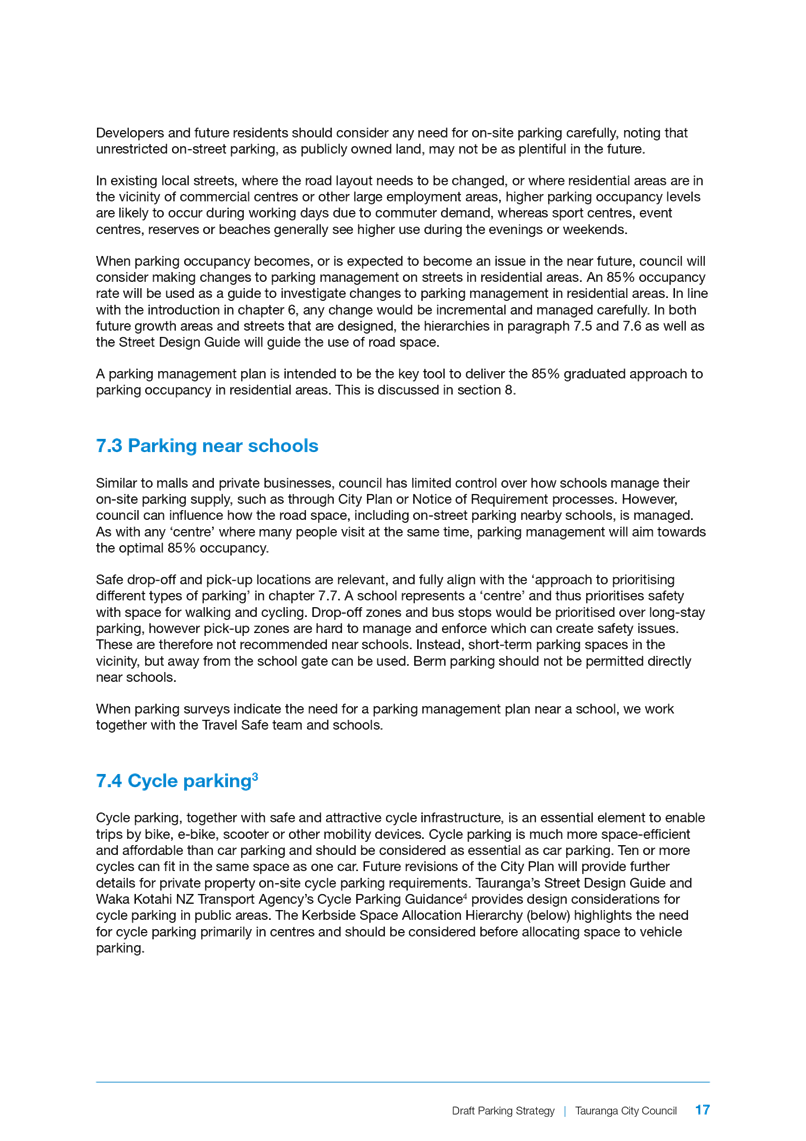
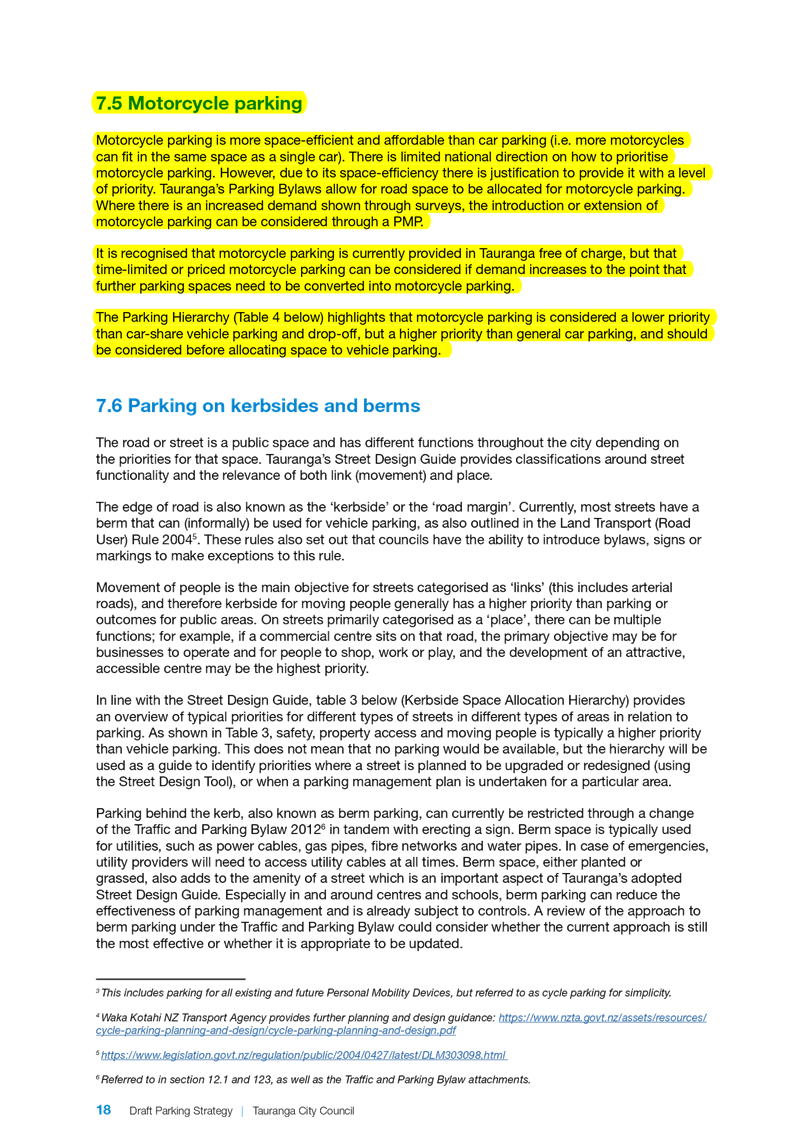
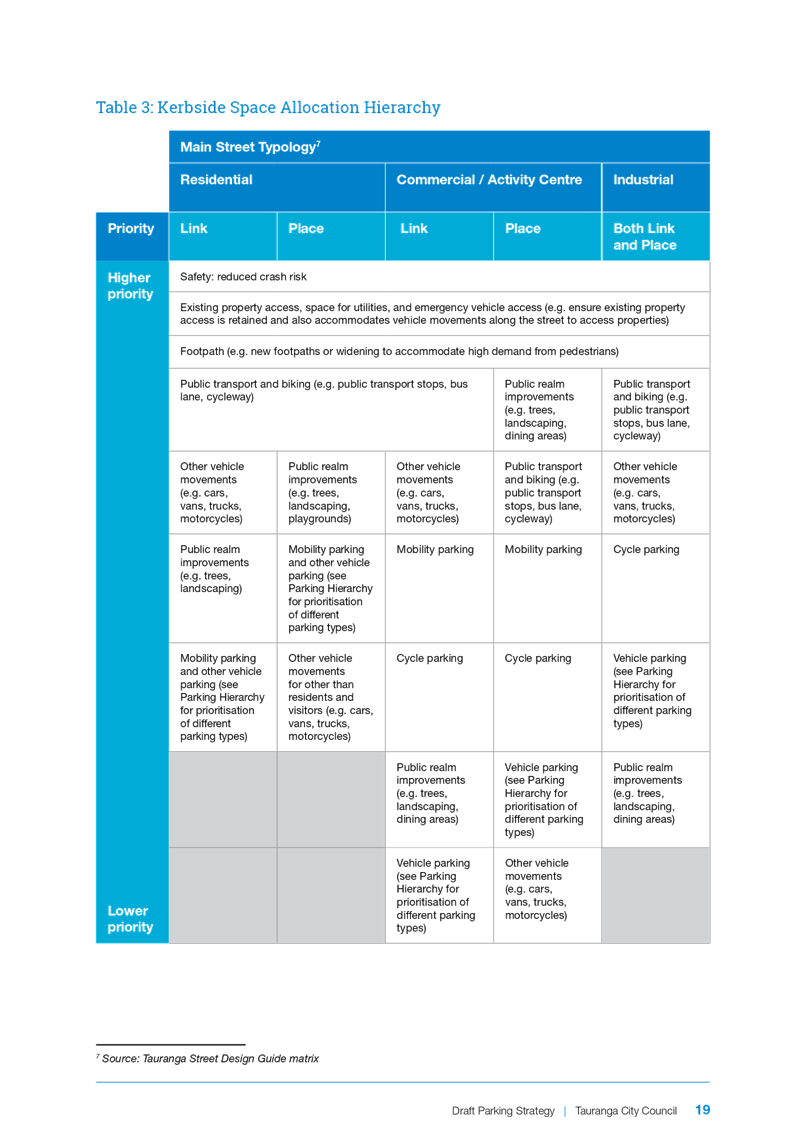
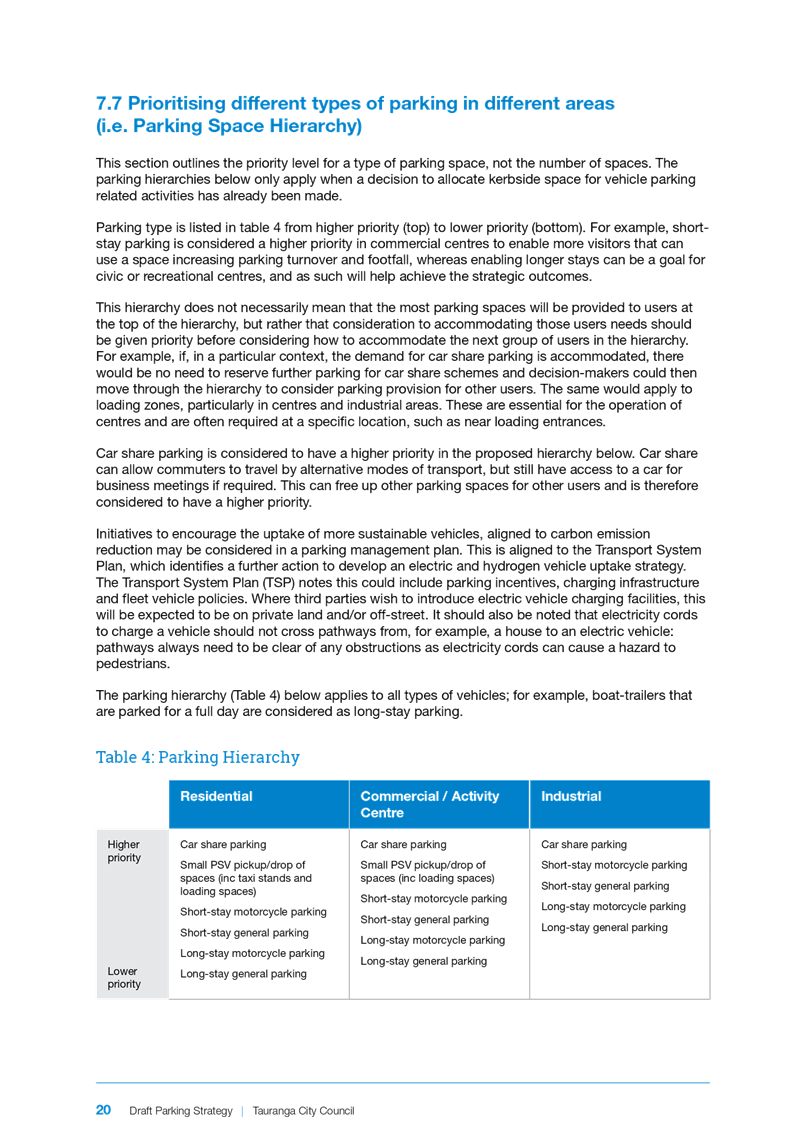
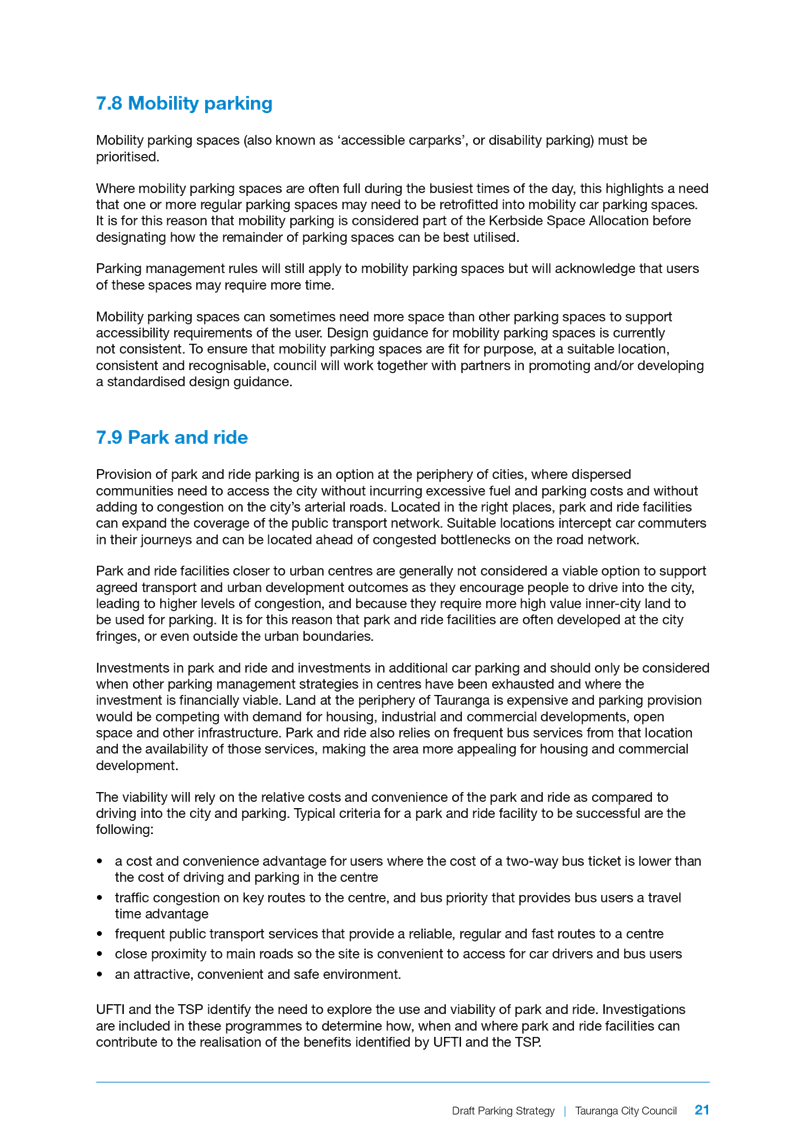
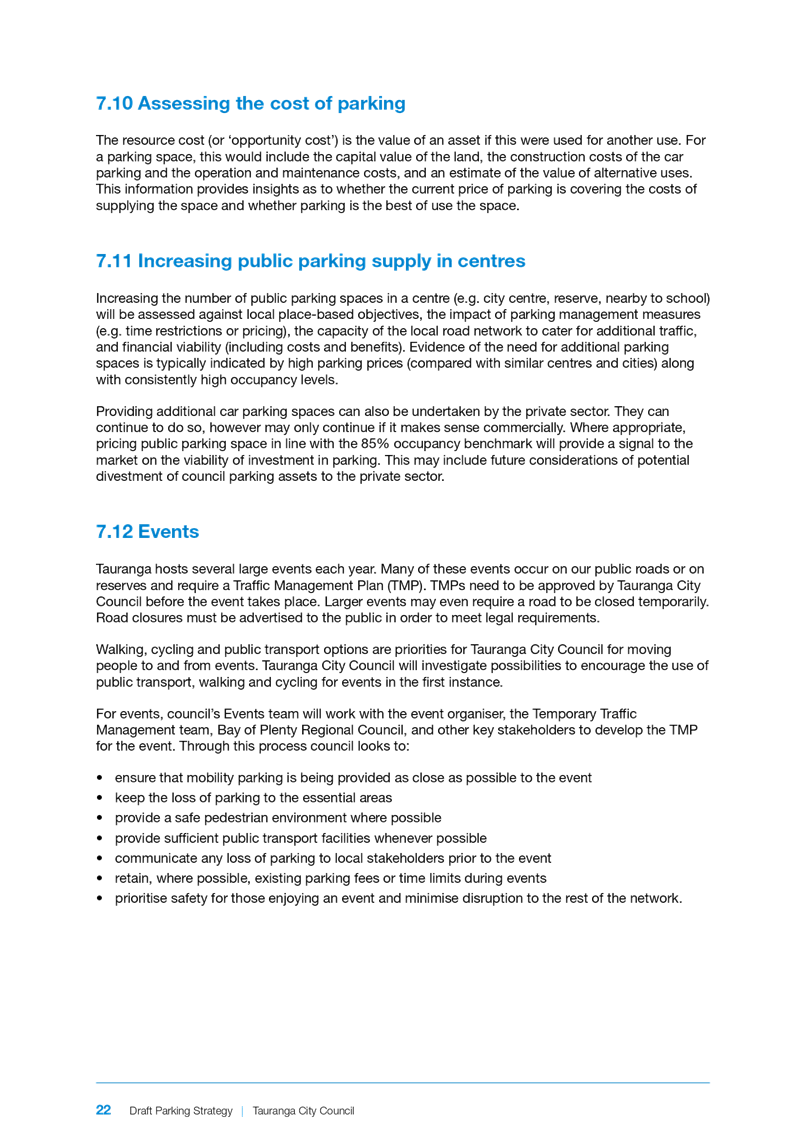
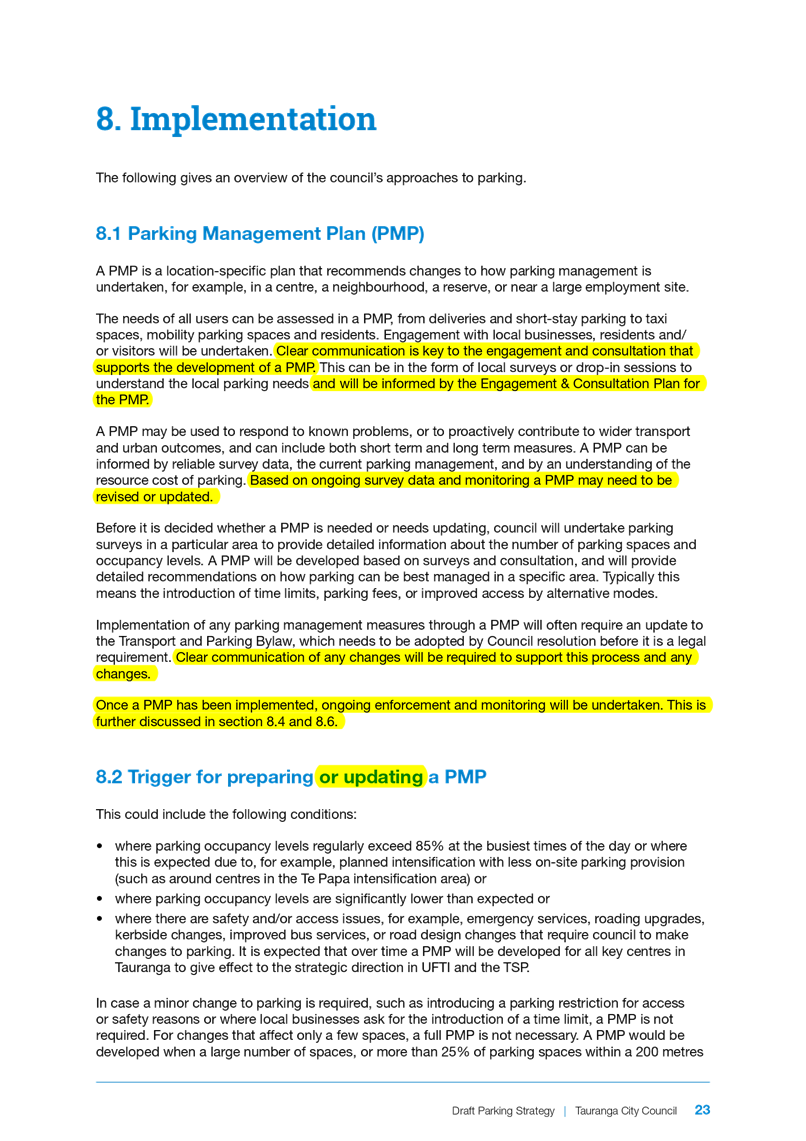
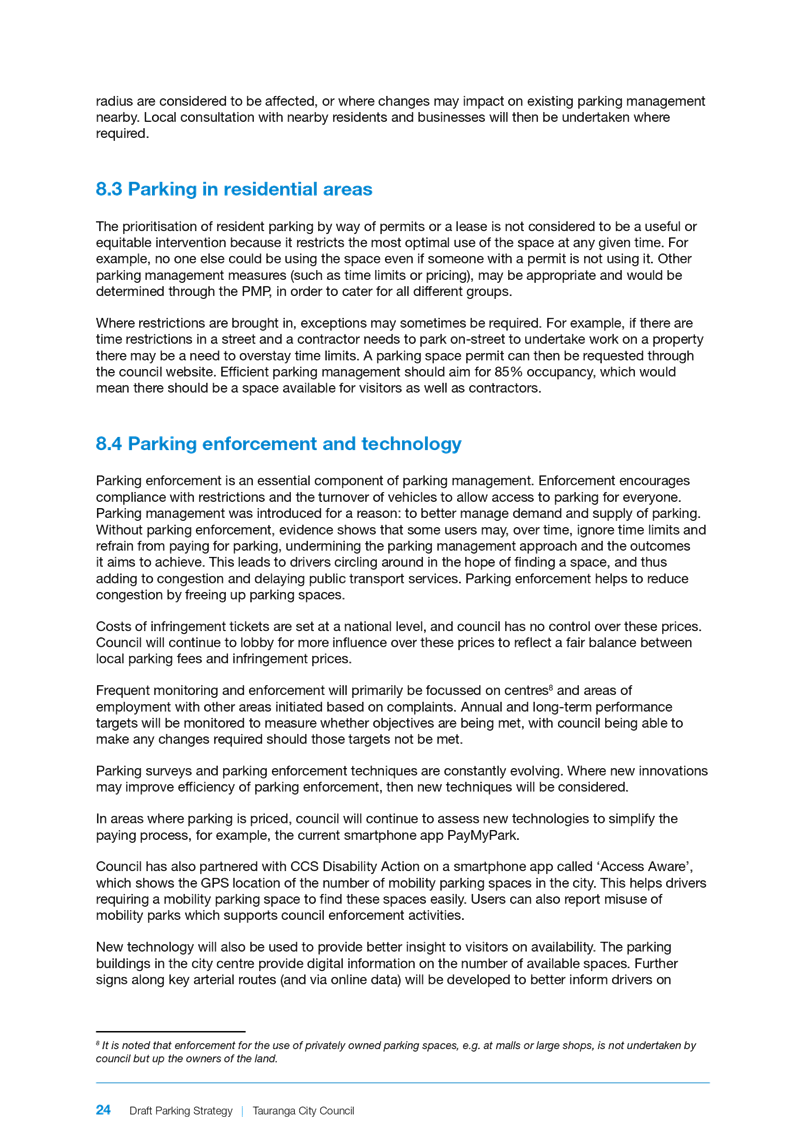
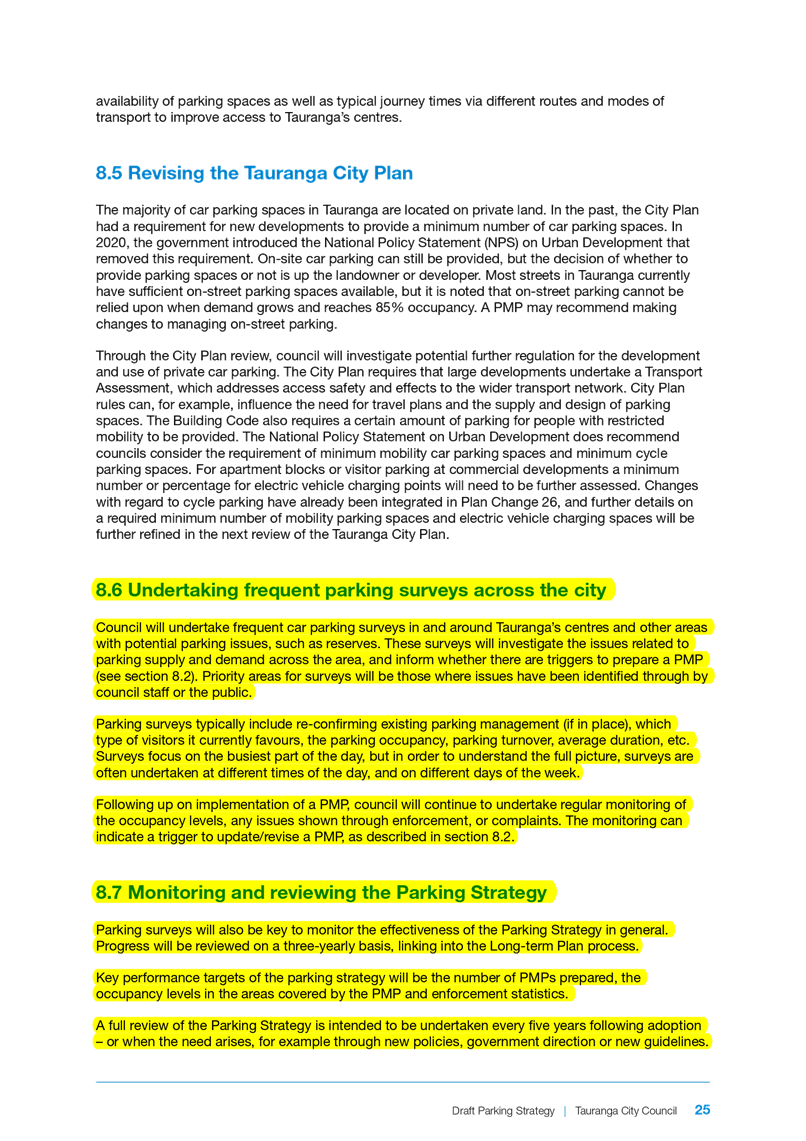
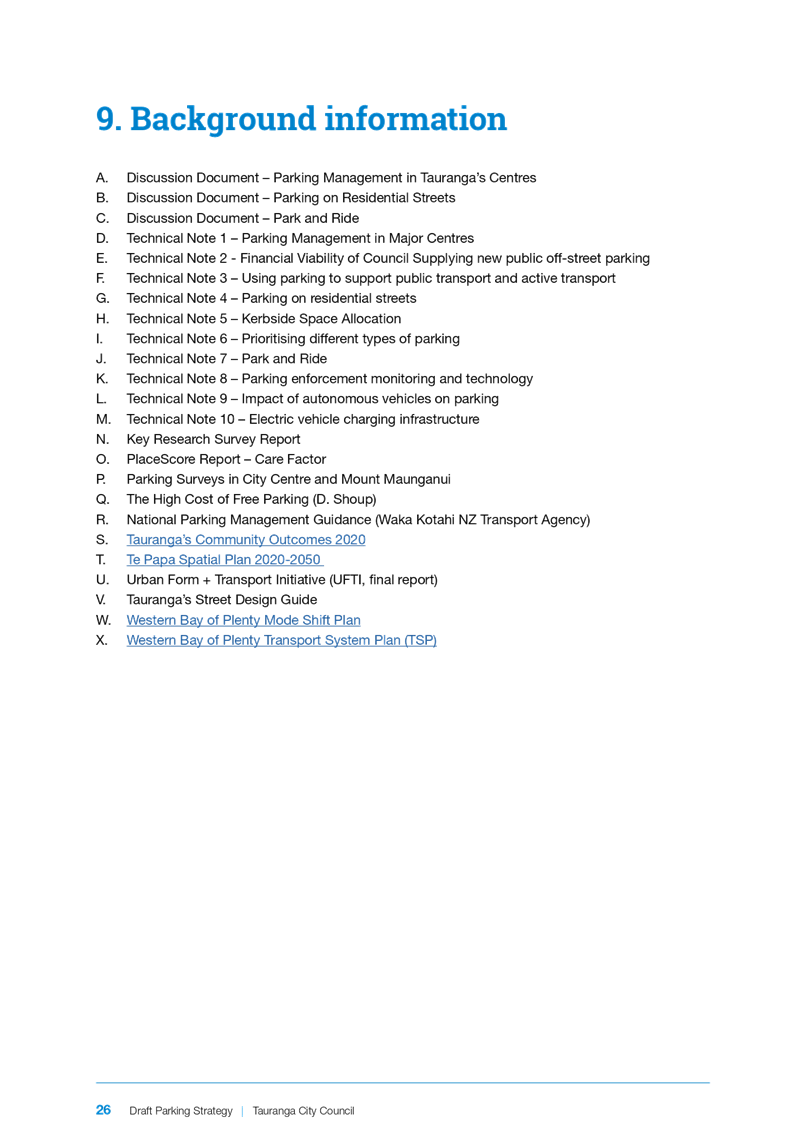
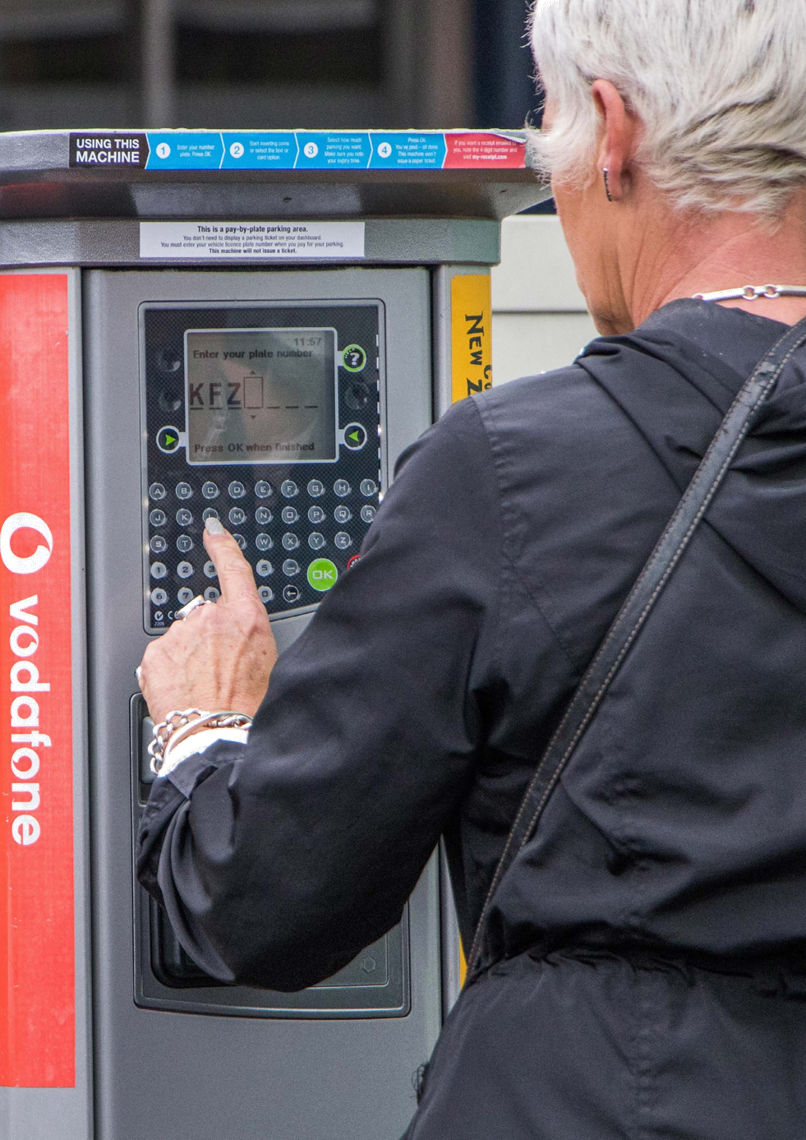

13 Public
Excluded Session
RESOLUTION TO
EXCLUDE THE PUBLIC
|
Recommendations
That the public be
excluded from the following parts of the proceedings of this meeting.
The general subject
matter of each matter to be considered while the public is excluded, the
reason for passing this resolution in relation to each matter, and the
specific grounds under section 48 of the Local Government Official
Information and Meetings Act 1987 for the passing of this resolution are as
follows:
|
General subject of each matter to be
considered
|
Reason for passing this resolution in
relation to each matter
|
Ground(s) under section 48 for the
passing of this resolution
|
|
13.1 - Public Excluded Minutes of the
Council meeting held on 26 October 2021
|
s7(2)(g) - The withholding of the information is
necessary to maintain legal professional privilege
s7(2)(h) - The withholding of the information is
necessary to enable Council to carry out, without prejudice or
disadvantage, commercial activities
s7(2)(i) - The withholding of the information is
necessary to enable Council to carry on, without prejudice or disadvantage,
negotiations (including commercial and industrial negotiations)
|
s48(1)(a) - the public conduct of the relevant
part of the proceedings of the meeting would be likely to result in the
disclosure of information for which good reason for withholding would exist
under section 6 or section 7
|
|
13.2 - Wastewater Management Review
Committee - confirm appointments and quorum changes
|
s7(2)(a) - The withholding of the information is
necessary to protect the privacy of natural persons, including that of
deceased natural persons
|
s48(1)(a) - the public conduct of the relevant
part of the proceedings of the meeting would be likely to result in the
disclosure of information for which good reason for withholding would exist
under section 6 or section 7
|
|
13.3 - Tauriko West Update &
Implementation Pathway
|
s7(2)(i) - The withholding of the information is
necessary to enable Council to carry on, without prejudice or disadvantage,
negotiations (including commercial and industrial negotiations)
|
s48(1)(a) - the public conduct of the relevant
part of the proceedings of the meeting would be likely to result in the
disclosure of information for which good reason for withholding would exist
under section 6 or section 7
|
|
13.4 - The sale of Pitau Road village
and Hinau Street village
|
s7(2)(i) - The withholding of the information is
necessary to enable Council to carry on, without prejudice or disadvantage,
negotiations (including commercial and industrial negotiations)
|
s48(1)(a) - the public conduct of the relevant
part of the proceedings of the meeting would be likely to result in the
disclosure of information for which good reason for withholding would exist
under section 6 or section 7
|
|
13.5 - CBD Hotel & Conference
Centre Development - Council lease of Conference Centre
|
s7(2)(h) - The withholding of the information is
necessary to enable Council to carry out, without prejudice or
disadvantage, commercial activities
s7(2)(i) - The withholding of the information is
necessary to enable Council to carry on, without prejudice or disadvantage,
negotiations (including commercial and industrial negotiations)
|
s48(1)(a) - the public conduct of the relevant
part of the proceedings of the meeting would be likely to result in the
disclosure of information for which good reason for withholding would exist
under section 6 or section 7
|
|
13.6 - Exemption to Open Competition
Joyce Road Water Treatment Plant
|
s7(2)(h) - The withholding of the information is
necessary to enable Council to carry out, without prejudice or
disadvantage, commercial activities
|
s48(1)(a) - the public conduct of the relevant
part of the proceedings of the meeting would be likely to result in the
disclosure of information for which good reason for withholding would exist
under section 6 or section 7
|
|
13.7 - Approval to vary Bridge Wharf
repair works
|
s7(2)(h) - The withholding of the information is
necessary to enable Council to carry out, without prejudice or
disadvantage, commercial activities
|
s48(1)(a) - the public conduct of the relevant
part of the proceedings of the meeting would be likely to result in the
disclosure of information for which good reason for withholding would exist
under section 6 or section 7
|
|
14 Closing
Karakia























































































































